The Dry Tortugas and South Florida
Kelli, our friend Mark, and I decided to plan a trip to bird the Dry Tortugas and south Florida. Mark works for NYC schools so we had to wait to find a year that his spring break (the week after Easter) coincides with the best time to go down in the spring (the latter half of April). 2019 turned out to perfect. To bird the Dry Tortugas, you can take a day boat out from Key West or take a birding tour that charters its own boat. The day boat gets to the islands at 10 AM and leaves at 2:30; not a lot of time for birding. Therefore, we booked a 3-day trip with Wildside Nature Tours for $1500 per person. Airfare to Key West during Easter week was high. We decided to fly into Fort Lauderdale instead and bird out way out through the Keys and back, making it a full week trip. We booked the last three spots on the birding tour 5 months in advance.
Saturday
April 20
Day One
Kelli and I were up early and packed by 5:45 AM. Mark picked us up right on time and used his car to head to Westchester County Airport. I was worried about parking since it was Easter week; but we found a spot on the bottom floor with no problem. It was a short walk into the small terminal. Kelli and I had to check one bag. We sent Mark on to security since we had TSA preapproval and he did not. It did not matter, as security was a breeze for all of us. I got a text message that our gate had changed. I found that humorous. If you ever been to Westchester County Airport, they have one waiting area with two gates on each side. A gate change only changes if you walk left or right 30 feet.
Our Jet Blue Flight 913 took off on time at 8:00 AM. I watched the Return of Mary Poppins on the way down. It was good but had a predictable story. We landed in Fort Lauderdale around 11 AM. After retrieving our luggage, we had to haul it across the terminal, then outside, then a further walk to get a bus stop. The bus simply takes us to another terminal were the rental cars are. I am not fond of this airport. However, it was the cheapest to fly into during the holiday week. We had reservations with different rental companies so Kelli and I agreed to meet Mark at our first birding spot just minutes away from the airport.
A rare Key West Quail-Dove had been reported from Dr. Von D. Mizell-Eula Johnson State Park. Kelli and I were there in no time but had to wait for Mark to arrive. While waiting in the parking lot not a bird was seen or heard. It looked like this was going to be a bad spot. Mark arrived and as we got ready to hit the nature trail, a few Brown Pelicans flew overhead.
The trail was lush with little signs explaining about some of the flora there. Much to our surprise, we starting seeing a number of species of warblers. They included Ovenbird, Worm-eating Warbler, Black-and-white Warbler, Common Yellowthroat, American Redstart, Northern Parula, Blackpoll Warbler, Black-throated Blue Warbler, Palm Warbler, and Prairie Warbler. A Brown Anole was found displaying his red throat patch. We had trouble finding the spot where the Quail-Dove was seen. It did not matter; once we found the area, we did not see it. We talked to other birders and they said it might take three or four visits to get this rare bird. We were happy to see the birds we did. We were now very hungry.
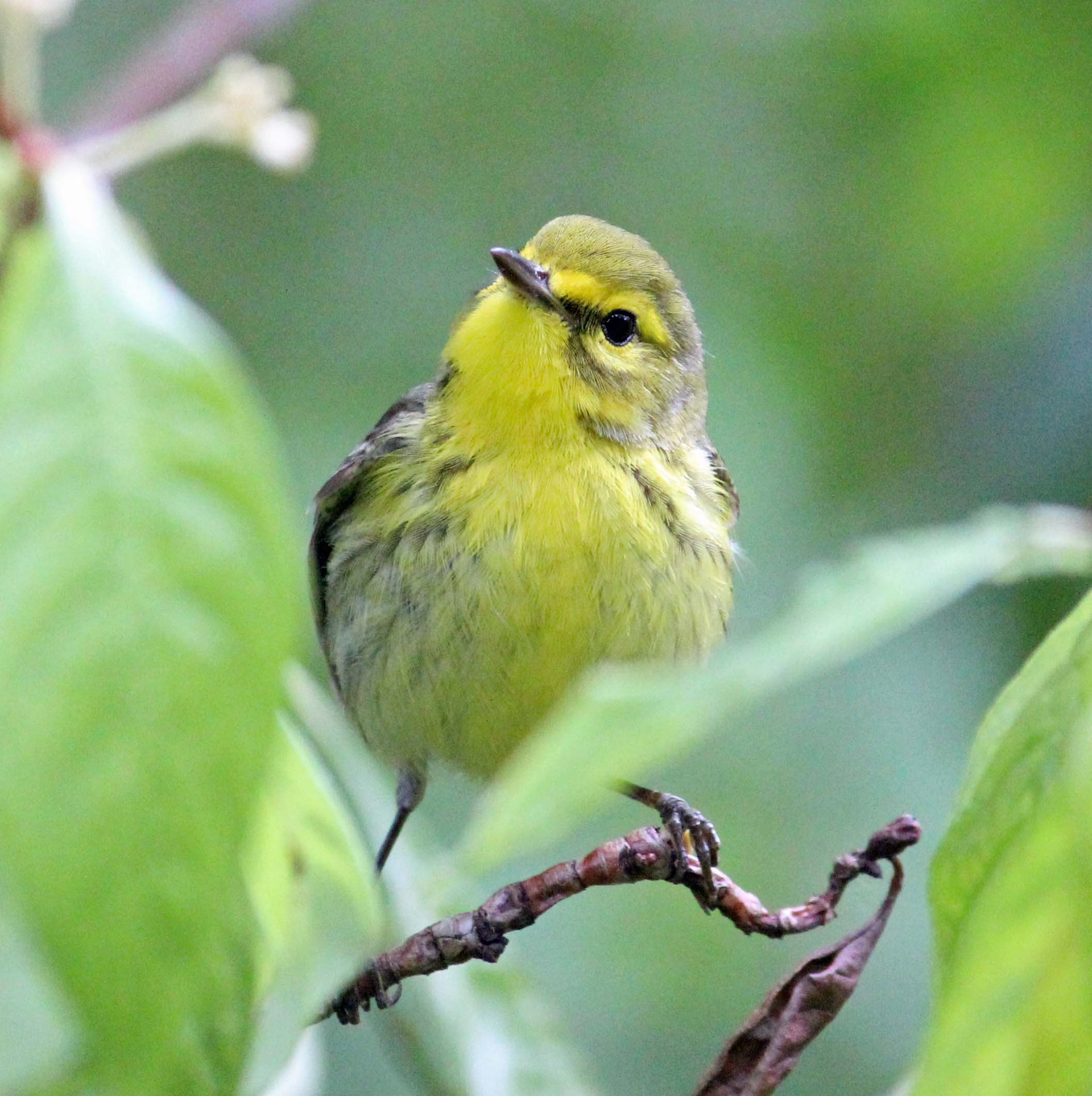
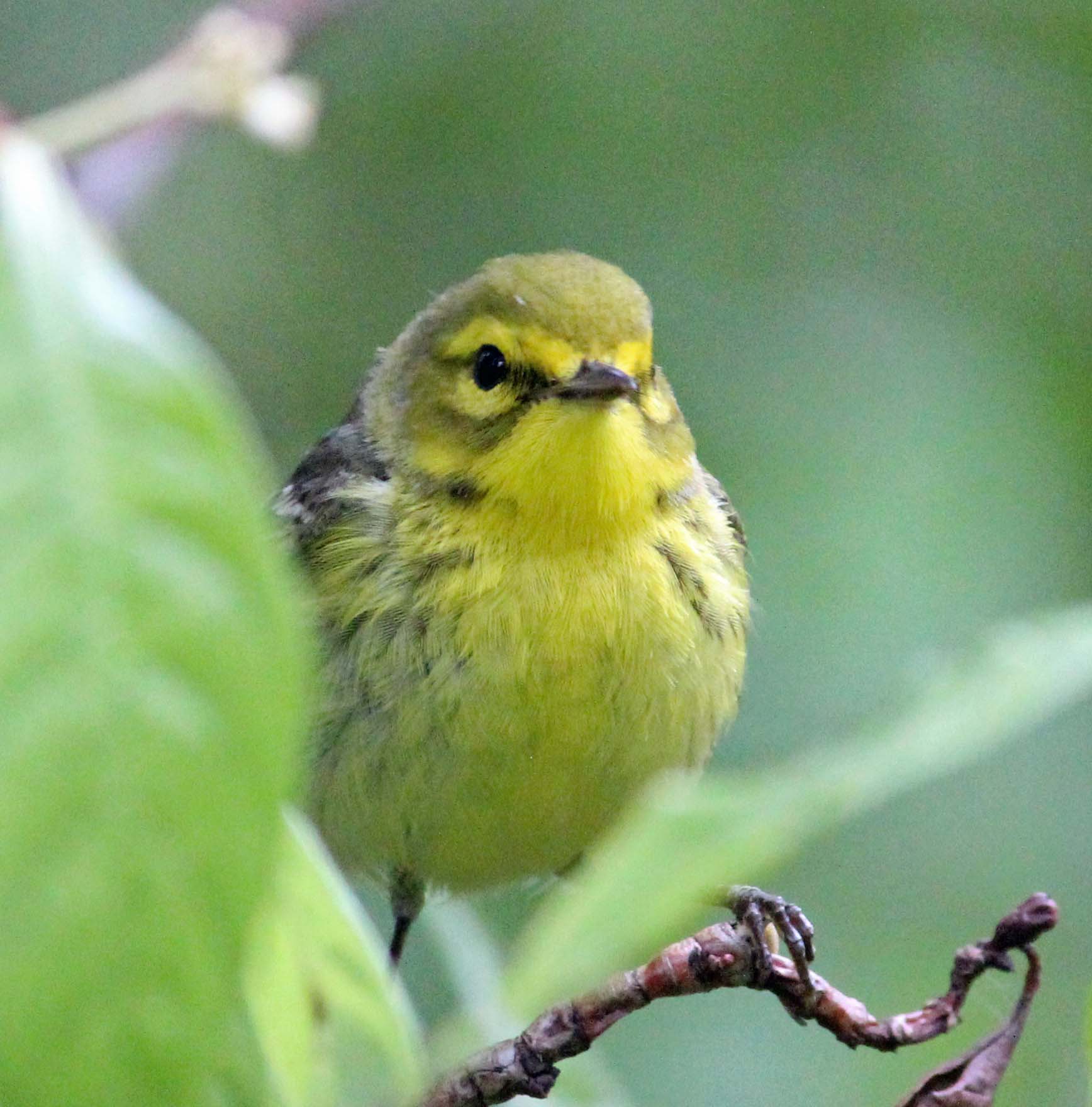
Prairie Warbler
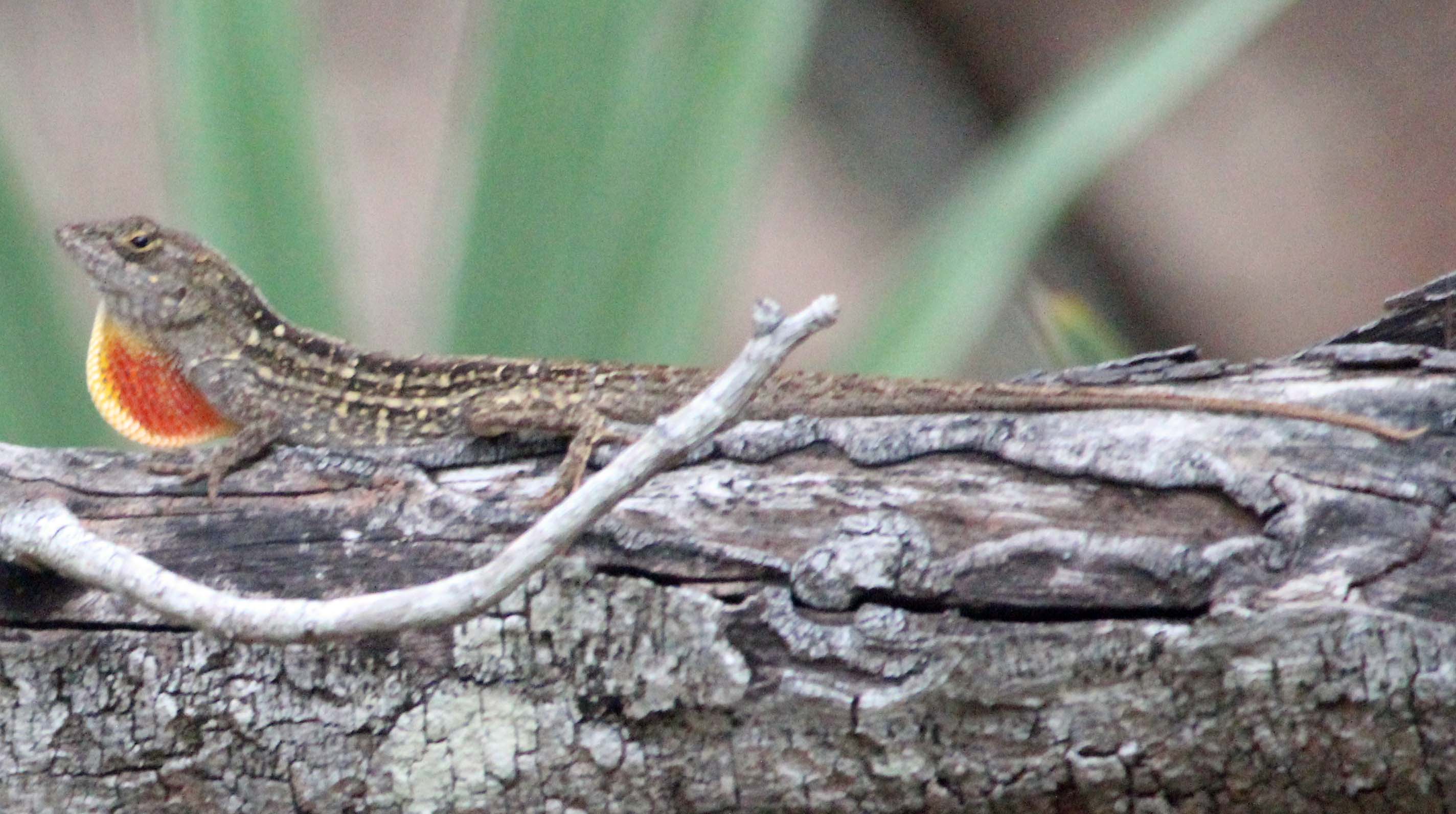
Brown Anole
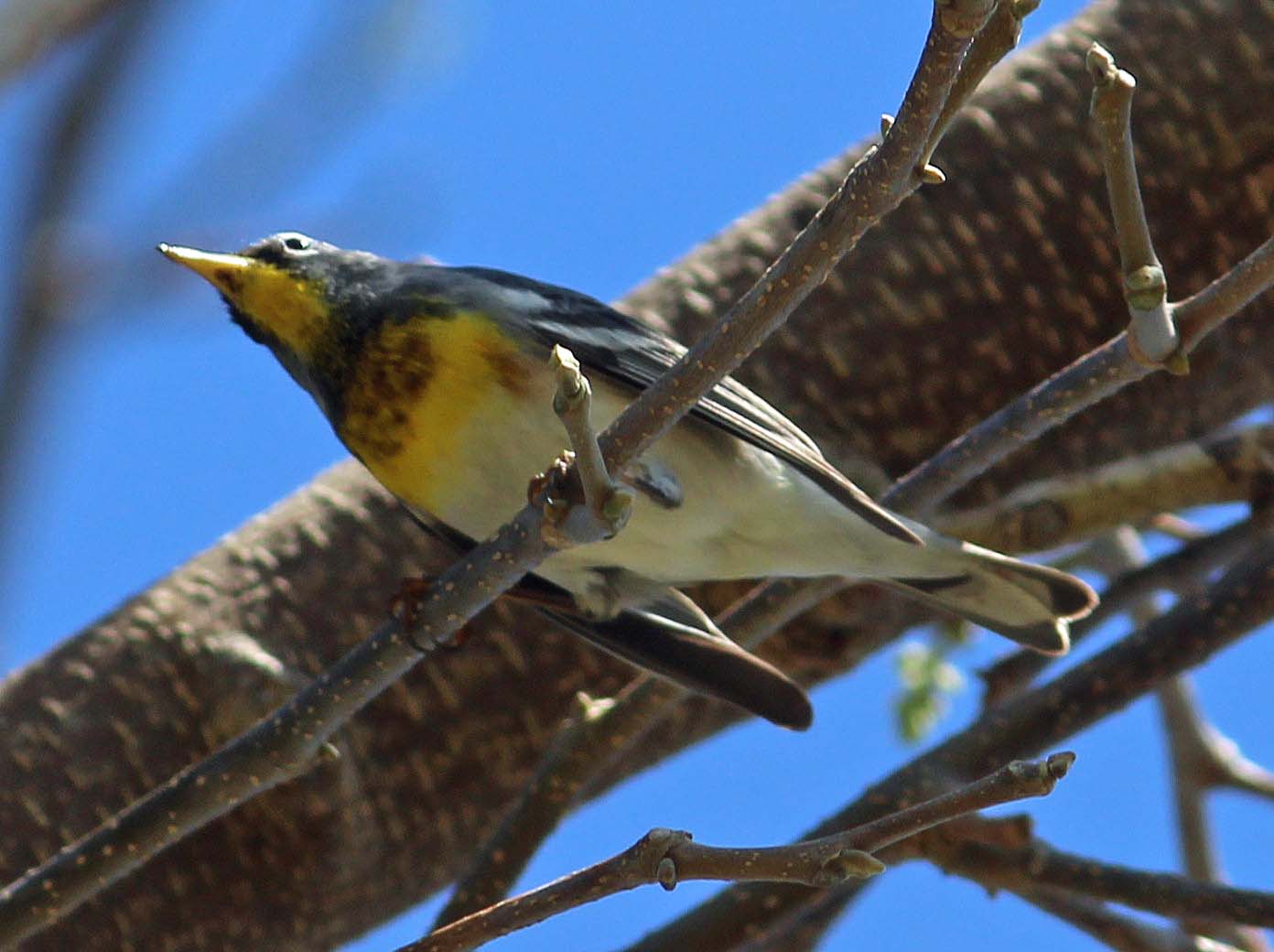
Northern Parula
![]()
Zebra Heliconian
Mark suggested the Big Pink in Miami Beach about 45 minutes away. Unfortunately, traffic made that more like 90 minutes. When we got there no parking could be found. Moreover, it looked like a long wait to be seated with lots of people outside. We should have known that a holiday Saturday would be like this. Kelli and I gave up and headed to Florida City where our first night stay hotel was. That was another hour drive and we headed straight for a Cracker Barrel near our hotel. We texted Mark. He had made it to the hotel and was checking in. We invited him over and he joined us for dinner. I had the special Southern Fried Chicken and Kelli had the Roast Beef. We shared a double chocolate fudge cake.
We checked into the Best Western Gateway To The Keys. Our room was in the back. As we were unloading the car, Kelli and I had our first lifer (bird seen in the wild the first time). It was a pair of Common Mynas on the telephone wires. These birds are not native but countable since they have long established a breeding population here in Florida.
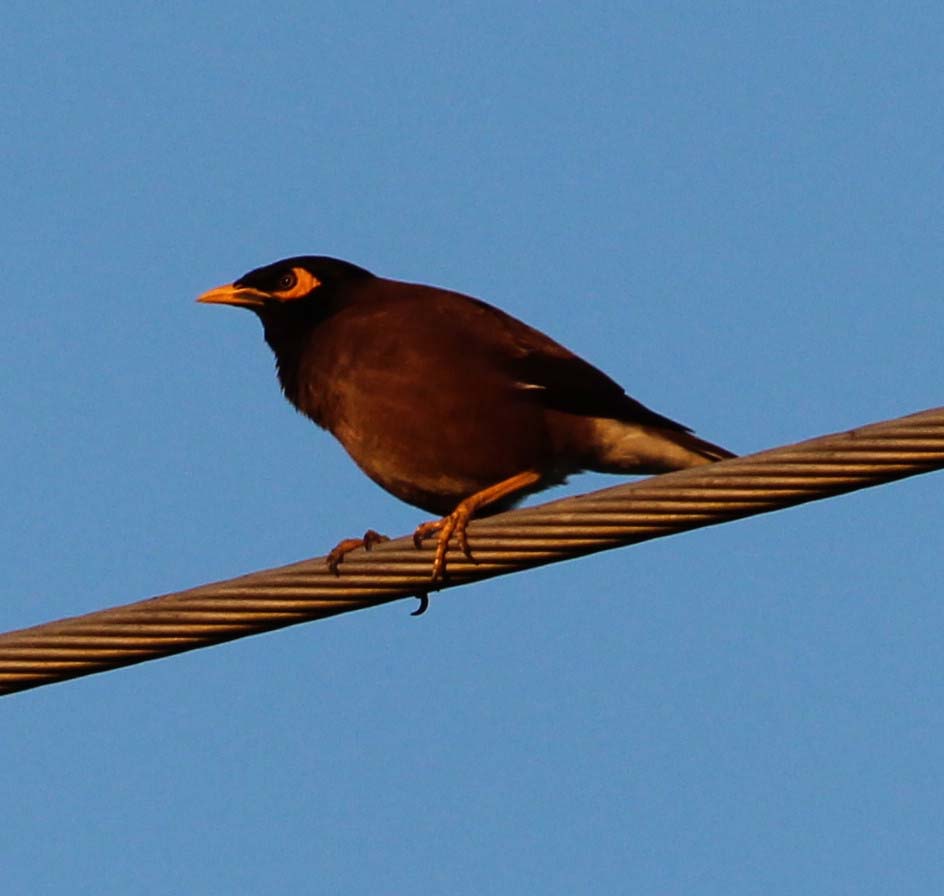
Common Myna
There was some daylight left so we invited Mark to join us at the Lucky Hammock, a birding spot 15 minutes away. He declined but we headed out. It was only 30 minutes to sunset and the gate to the hammock was closed. Therefore, we had to park and walk in. Our first surprise was a calling Bobwhite in the distance. We could not see him but did find male Scarlet Tanager at the hammock. The sun was setting and the bugs were coming out and we started to hear Common Nighthawks peenting overhead. We headed back to the car. We saw a few cars drive in and park near ours. They were birders coming in. I thought, what do they know that we don’t. It was a group from Michigan. The woman leading the group had remembered seeing barn owl here a few years ago. We thought it’s worth a shot so we stayed. A few minutes later one appeared, hunting over the meadow. We watched it for some time. As it got darker, we heard a Chuck-will-Widow off in the distance! The owl eventually came over the road and headed away. There was nothing left to see or hear so we headed back to the hotel. Our hotel room was nice and comfortable and we had a good night’s sleep.
Sunday
April 21, 2019
Birding Our way Out in the Keys
Our plan was to bird our way out on the Keys. We were to board a boat at 7 PM about three hours of driving distance away.
We were up, packed and ready to go by 6 AM. We met Mark at the free hotel breakfast and ate our fair share.
We drove down Route 1 onto Key Largo to our first stop, John Pennekamp Coral Reef State Park. It was about an hour after sunrise and there was a huge line of cars exiting the park. We found out later they were there for an Easter sunrise service. Happy Easter!
We parked in the first lot we found. Our first bird was a single Purple Martin on a wire followed by some Eurasian Collared-Doves. We found a lone White Ibis in a picnic area near the water. Least Terns were feeding over water. We heard, and then saw two Great Crested Flycatchers. An Indigo Bunting was singing nearby. As we went to look for it, a Gray Kingbird appeared and we focused on that. Gray Kingbirds are common around the Caribbean, but generally only found in Florida in the US.
A Prothonotary Warbler was found by the water. Kelli got a glimpse but Mark missed it. Luckily, we would have a great look at this bird later in the trip.
We found the Wild Tamarind nature trail and this was marked with lots of informative signs. Our favorite was for the Gumbo-Limbo tree. It is comically referred to as the tourist tree because the tree's bark is red and peeling, like the skin of sun burnt tourists, who are a common sight in the plant's range.
Another sign informed us of the Blolly tree. Also called antwood because of its common association with ants: Blolly has hollow trunks providing shelter for ant nests. The ant droppings provide nutrients, enabling the tree to thrive in very poor soils. Blolly’s bright pink fruits attract many bird species.
The trail yielded Wood Thrush, Black-and-white Warble, American Redstart and Northern Parula.
Back at the parking lot a Broad-winged Hawk flew over and we got even better looks at the Gray Kingbird
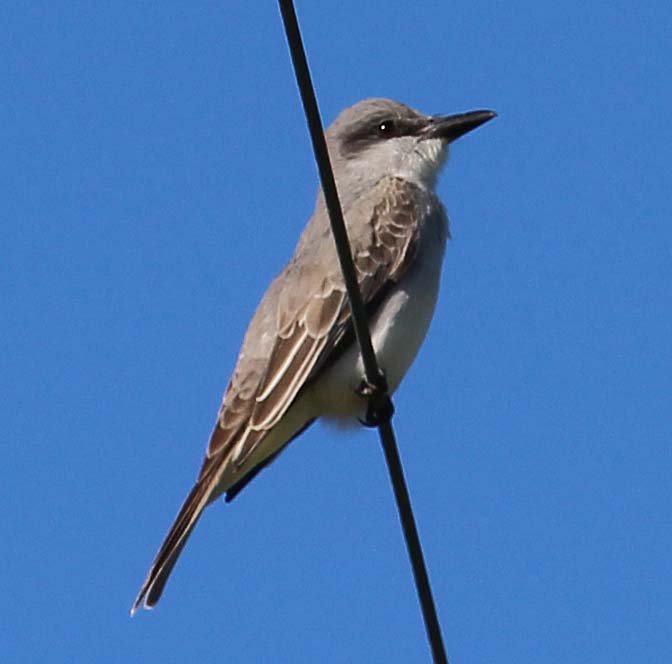
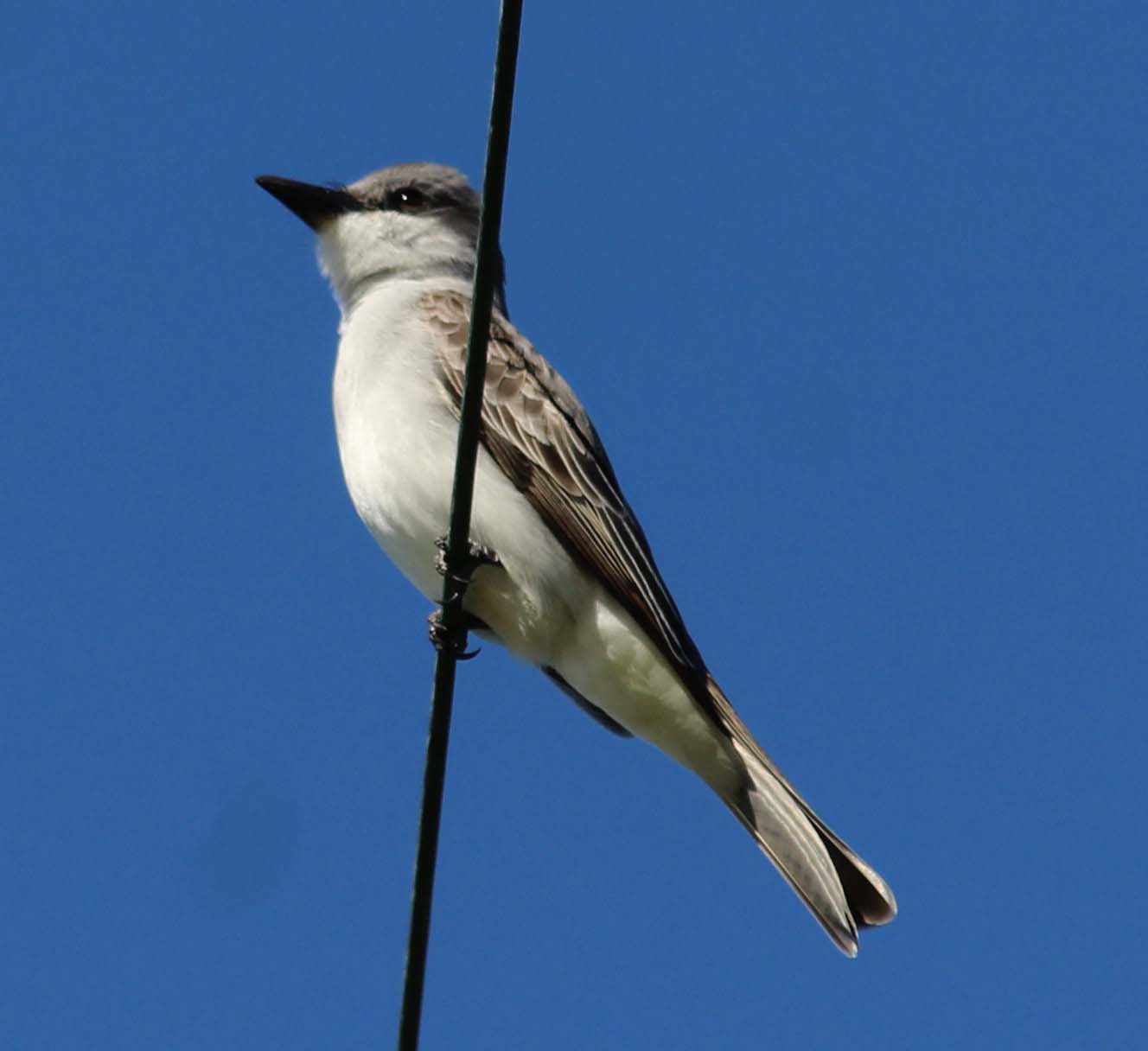
Gray Kingbird
We decided to head far west in the Keys to Bahia Honda State Park.
We stopped at a Starbucks in Islamorada along the way since it was the last one for 80 miles. As usual for Starbucks the wait to order and the wait to get your order took forever, but at least it was a rest stop. In the parking lot, I found a Northern Mockingbird nest in a small tree by our car.
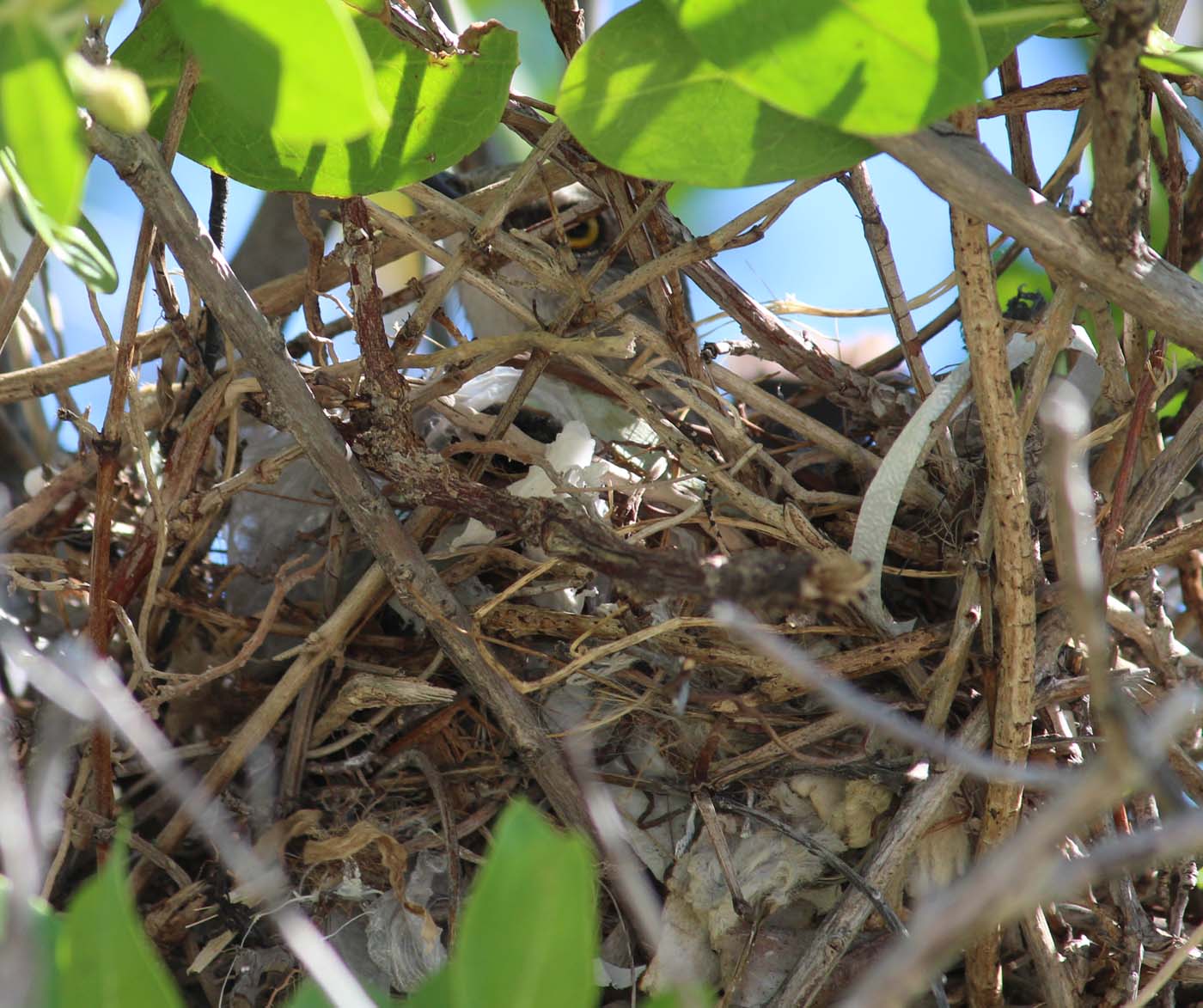
Northern Mockingbird nest
By the time we got out to Bahia we were hungry and had to go another eight miles to find a restaurant in Big Pine key. Lunch was at Paradise Burger Spirits Brew Sport Bar. We had our first key lime pie of the trip.
Since we were already past Bahia we decided to go to National Key Deer Refuge and walked the Jack Watson and Fred Mannillo Trails. Unfortunately, a past hurricane took out many of the pines and birds were nowhere to be found. Moreover, the sun was beating down and we were getting very hot. The only bird we saw were a couple of Turkey Vultures. The small Key Deer were no where to be found.
We continued towards Key West. At one point, Kelli and I saw some huge 6-foot Green Iguanas (Iguana iguana) along the road. We had make a U-Turn to get a better look. It turns out that a local breeder lost a number of them during a storm. Now they roam freely in the neighborhood.
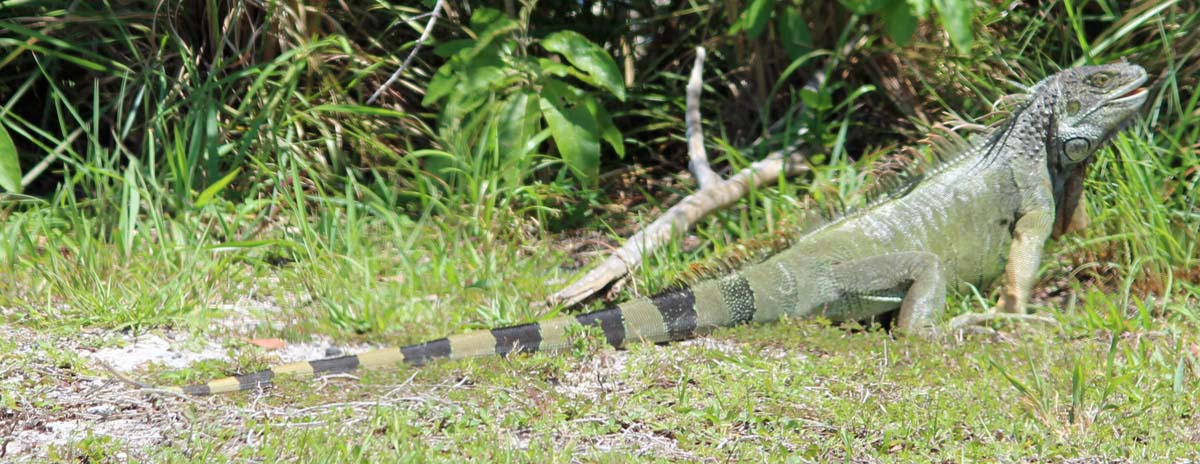

Green Iguana
We headed next to the Key West Tropical Forest and Botanical Garden. Here the birding and wildlife viewing was great. We checked out the little visitor’s center and got a detailed map of the paths. Our first sighting was that of a Florida Box Turtle (Terrapene carolina bauri). We also found some Northern Curly-tailed Lizards. They are native to the Bahamas, and introduced to Florida in the 1940's to combat sugar cane pests.
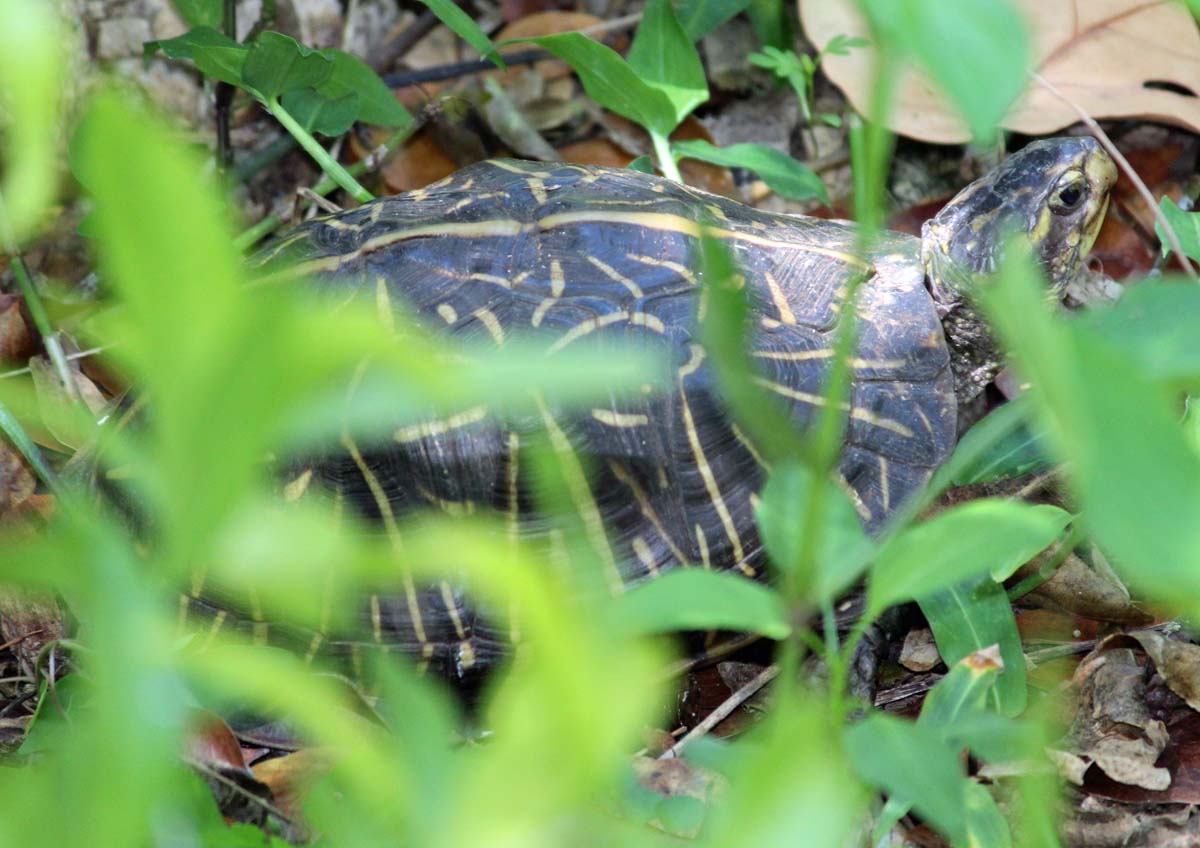
Some of the paths were paved with coral limestone, which is composed of cemented fossilized corals. The stones had the patterns of the coral reef they once were.
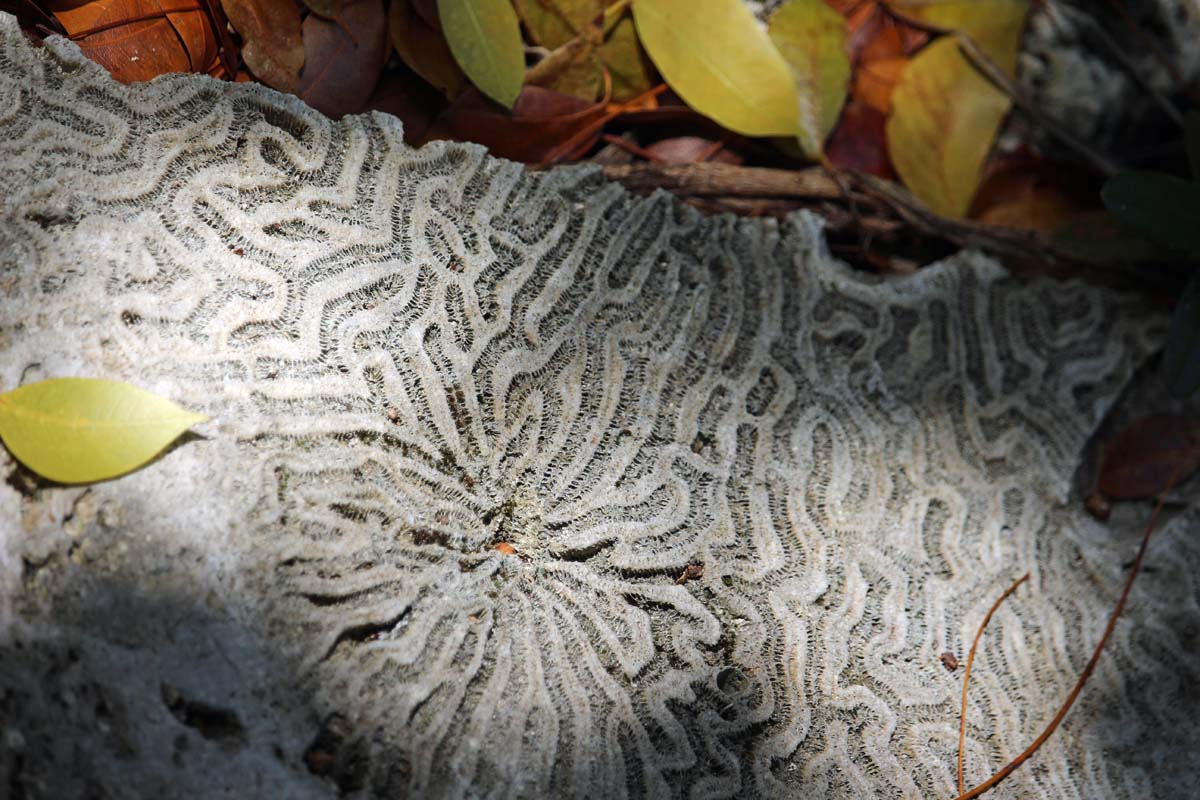
Coral Limestone
New species seen in the lush and shaded paths included Red-eyed Vireo, Rose-breasted Grosbeak and a perched Red-shouldered Hawk.
We found a few warblers coming down to the smaller pond for a drink and we had excellent views of Northern Parula, Black-throated Green and Black-and-White Warblers. The larger pond had an Anhinga in the water and we were able to see it swimming underwater from a bridge. A couple of small Iguana were basking in the sun above us. In a more open area, we added Eastern Kingbird, Indigo Bunting, and Ruby-throated Hummingbird. Near the entrance, we found a Common Ground Dove. We also found some interesting musical art, each with a mallet that lets visitors play a little music.
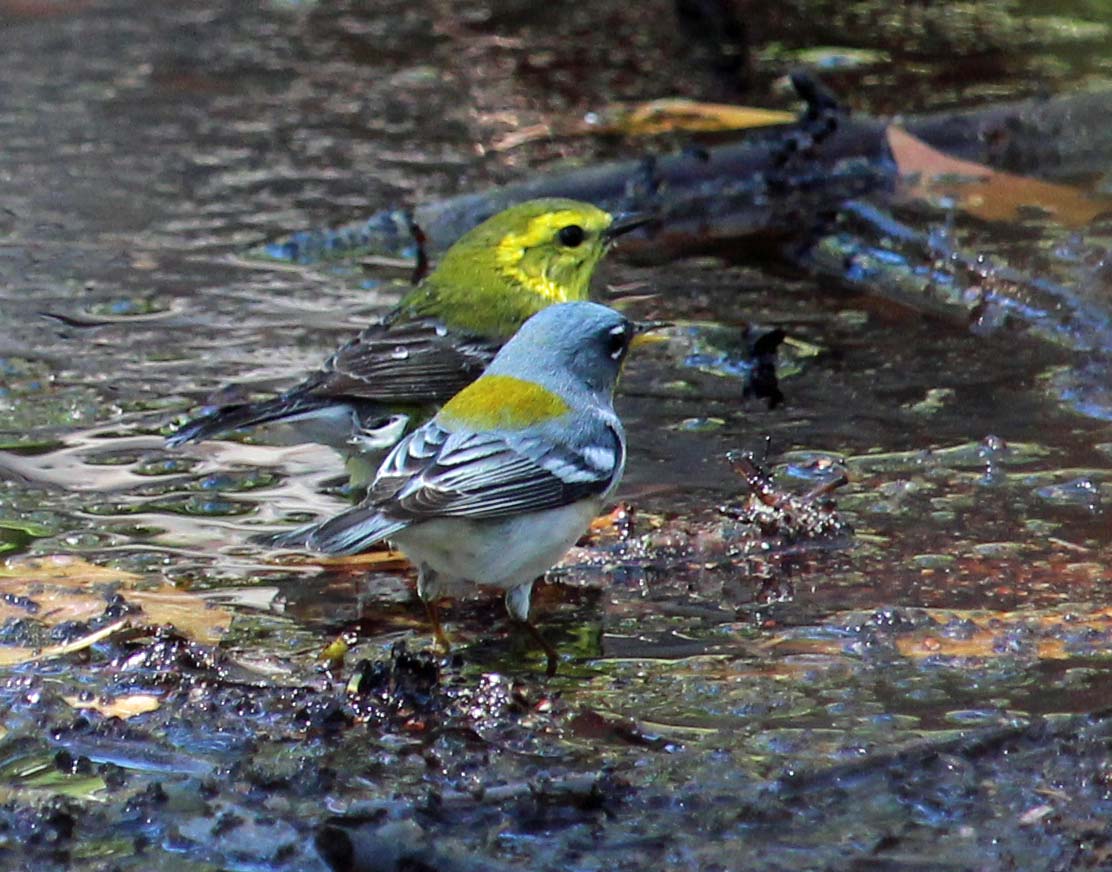
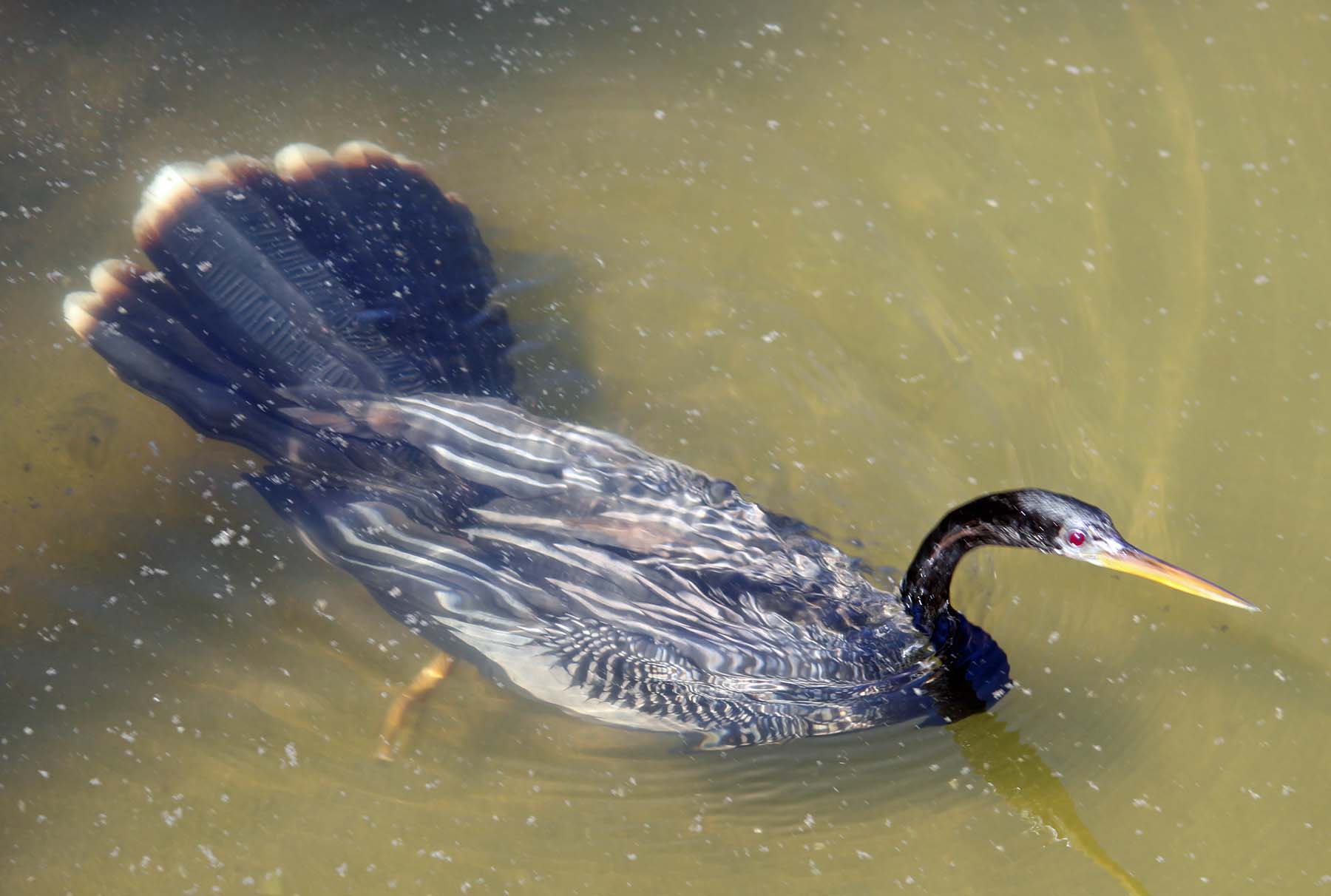
Black-throated Green and Northern Parula
Warblers Anhinga
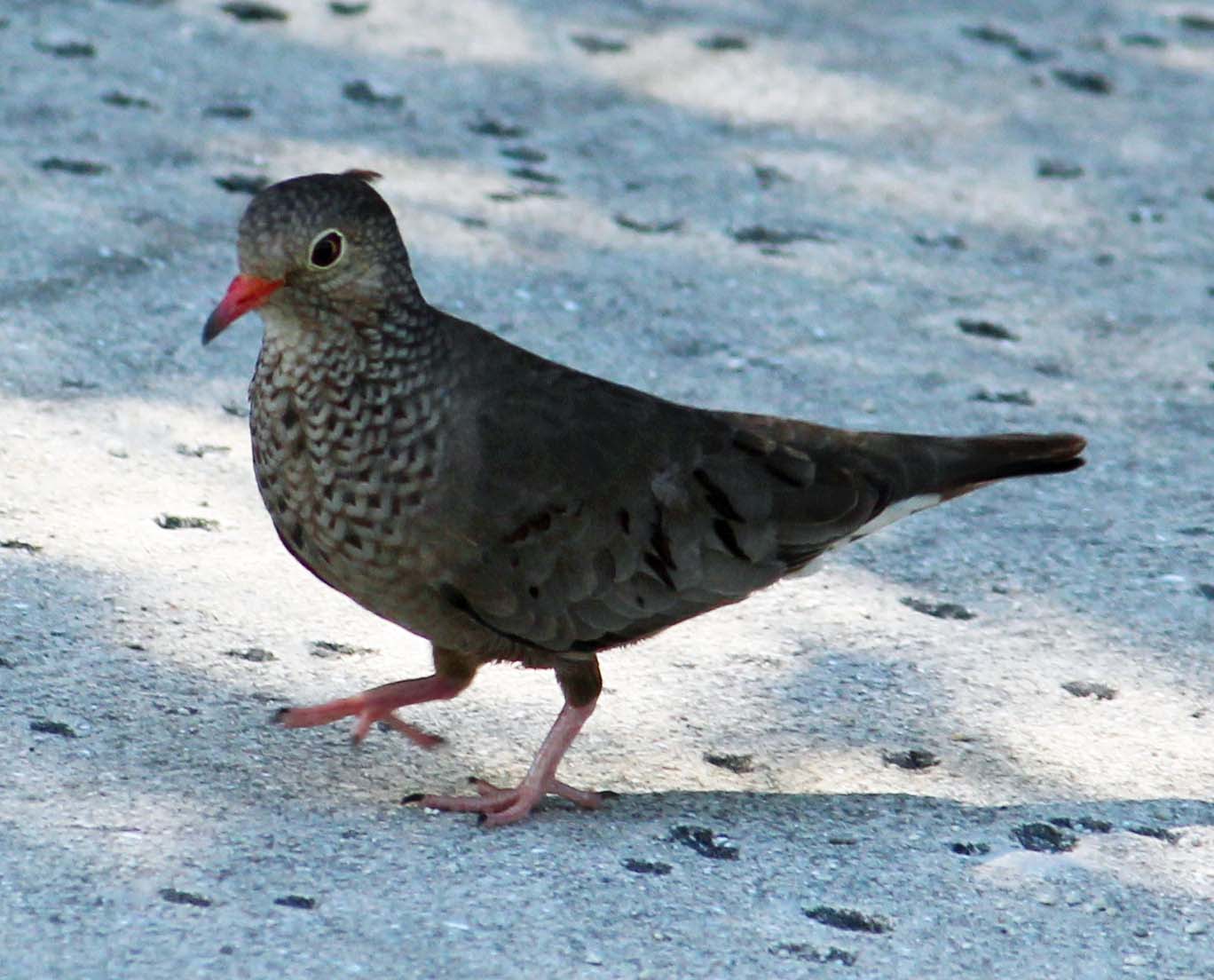
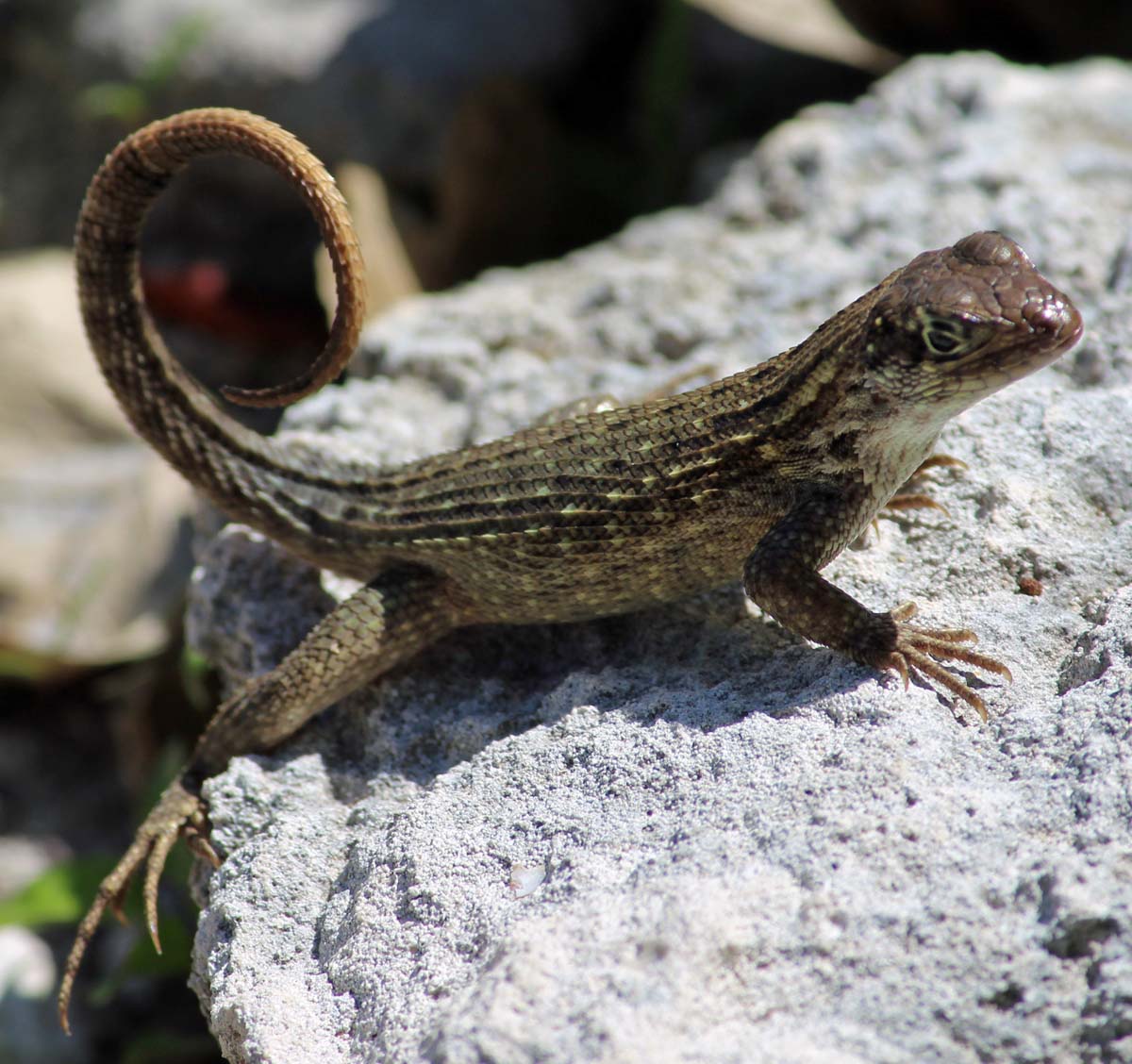
Common Ground
Dove Curly-tailed Lizard
We needed dinner before heading to the boat. We were being chased out of the parking lot of the Botanical Garden since they needed to close the gate. They gave a great suggestion for a local place nearby, the Hogfish Bar and Grill.
Outside the restaurant is a pickup truck adorned with lots of nautical figurines and shells.
The food here was great and there was a humorous sign in the men’s room.
We got to the docks early, parked at the office, and waited. No one was showing up. Finally, another car came by. Looks like everyone else knew where the boat was except us. We drove over and now we were one of the last people to arrive. Kelli and I were afraid we would get the worst accommodations.
We met with the leader Adrian Binns. He apologized for the confusion and led us to our room down below. We got a small room for just the two of us. It was only 6 foot by 7 but we were extremely happy.
Mark had to share a room with three other people in the front hull of the ship.
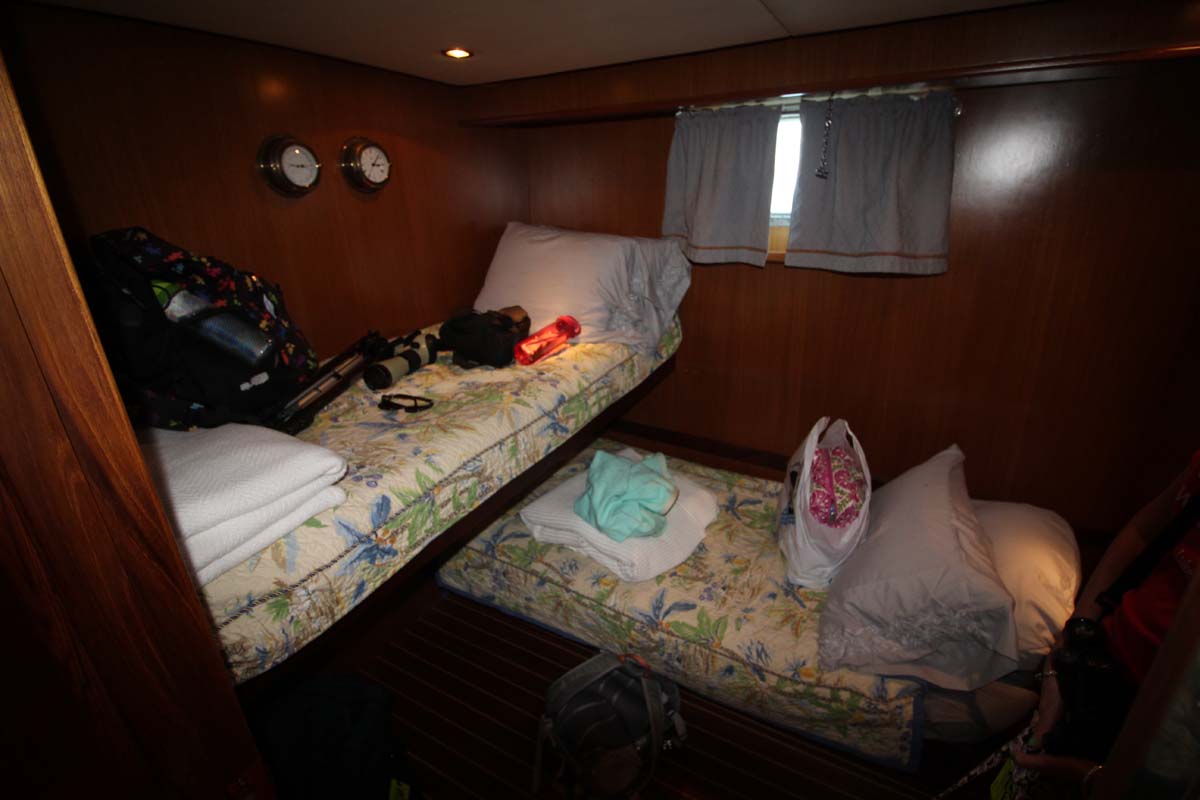
Back up on top Adrian and Captain Joe Bailey gave us a run down on how things will work. We will sleep onboard for the night. At 5:30 AM, the boat will leave dock. They said do not bother to get up. Sunrise would be 90 minutes later. By that time breakfast will be served and we will be out in the Gulf Stream. One thing we did have to get use too. NO PAPER in the toilets. It might clog them.
Our boat’s name was the Makai and was beautiful inside and had five different split-levels. It makes its own fresh water (over 60 gallons a day). Everything is air-conditioned and has two showers and bathrooms.
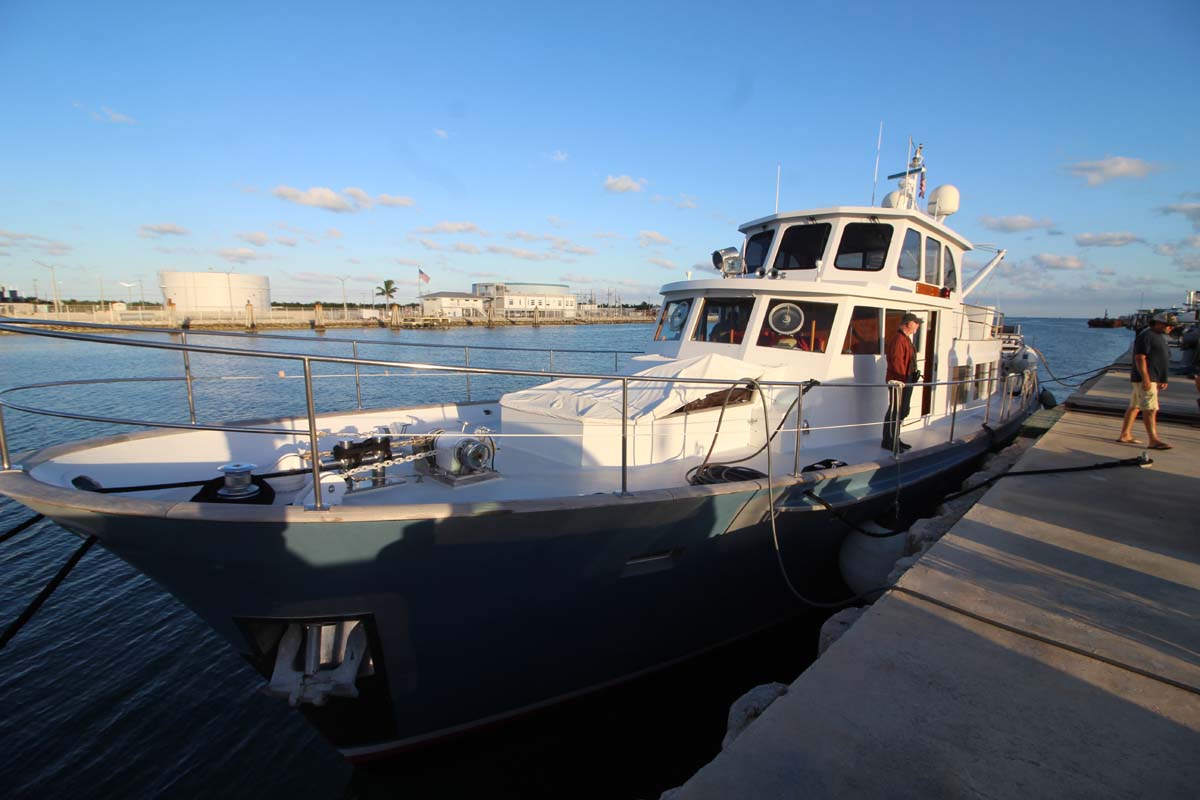
The Makai
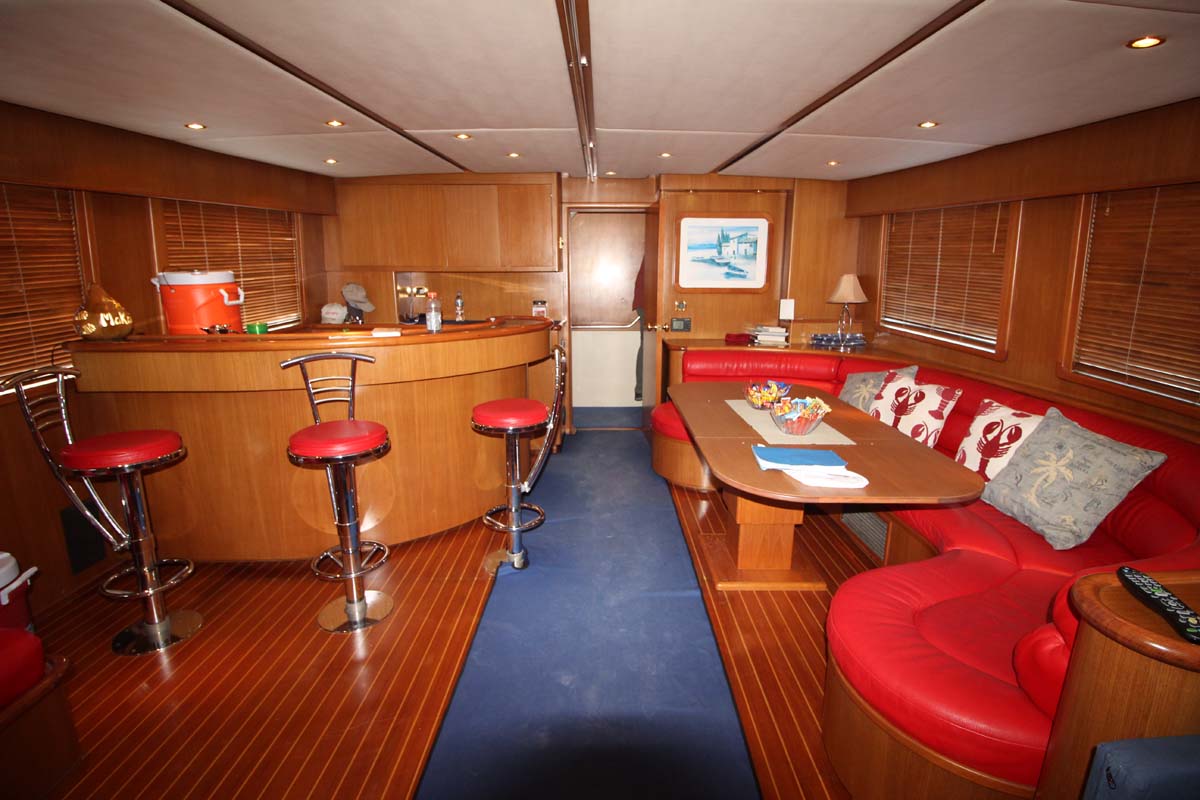
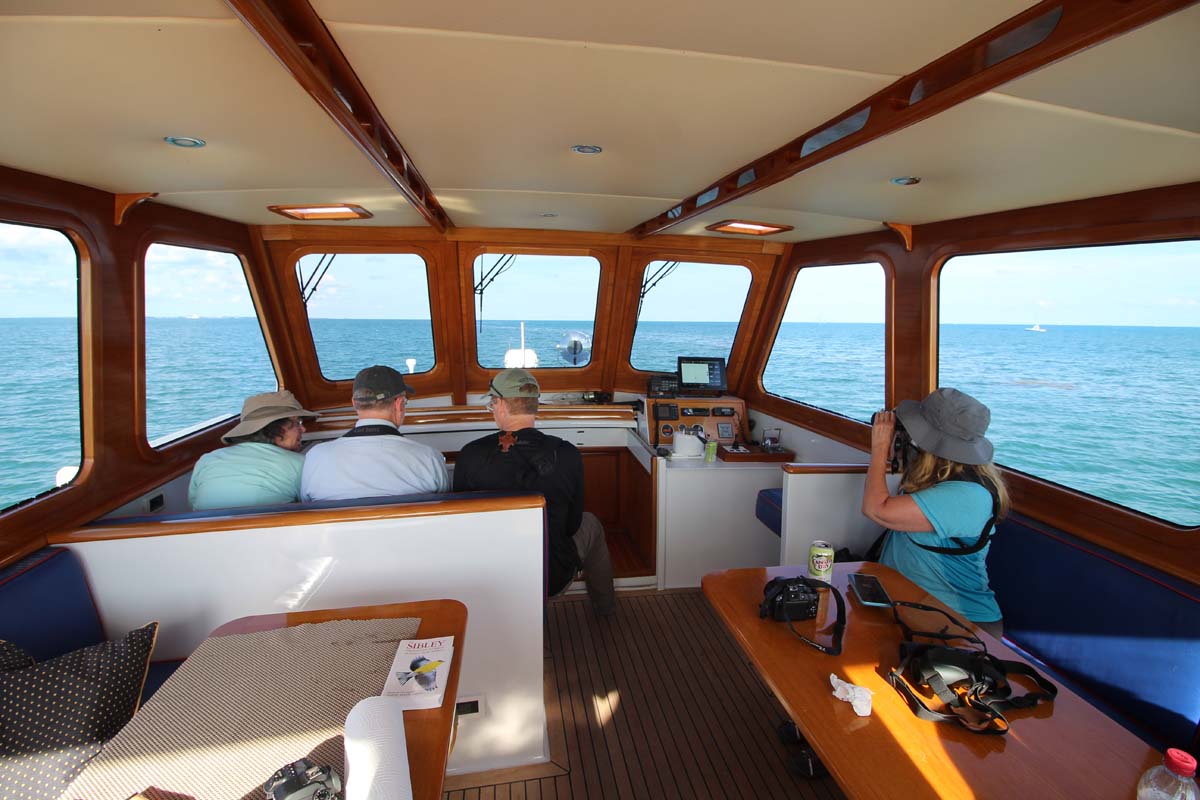
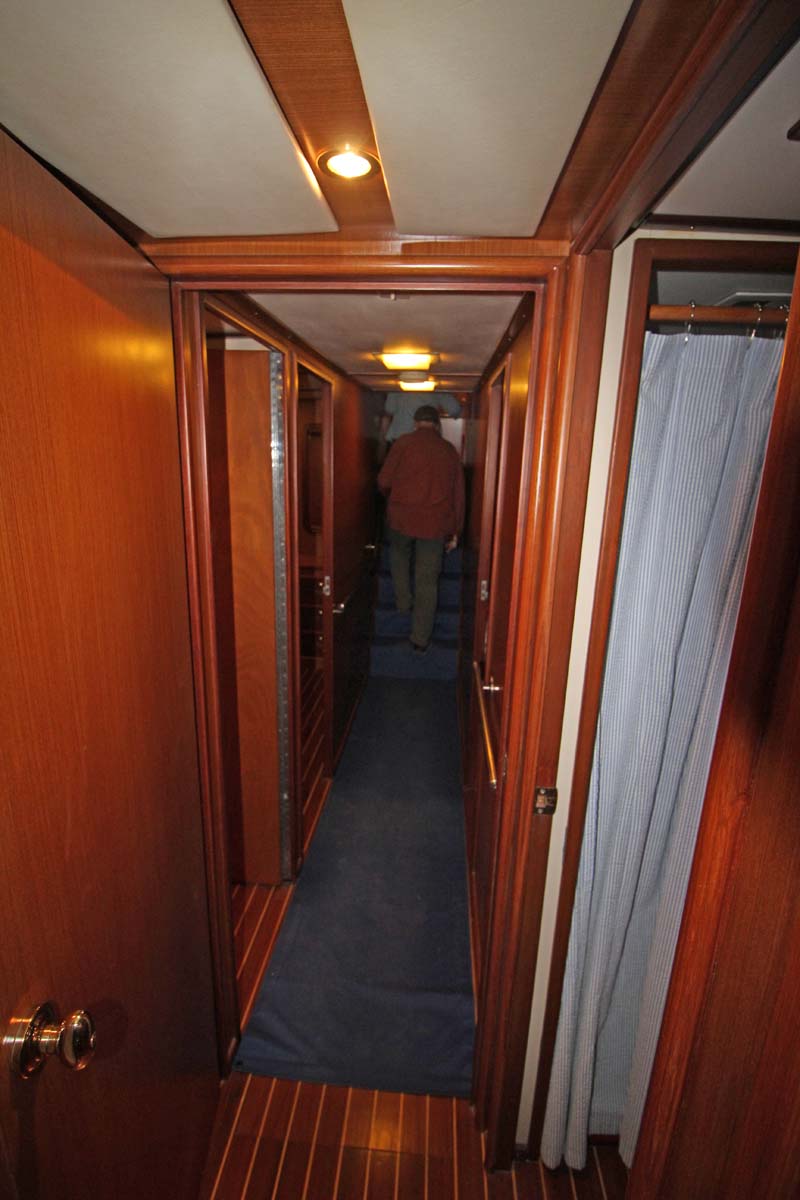
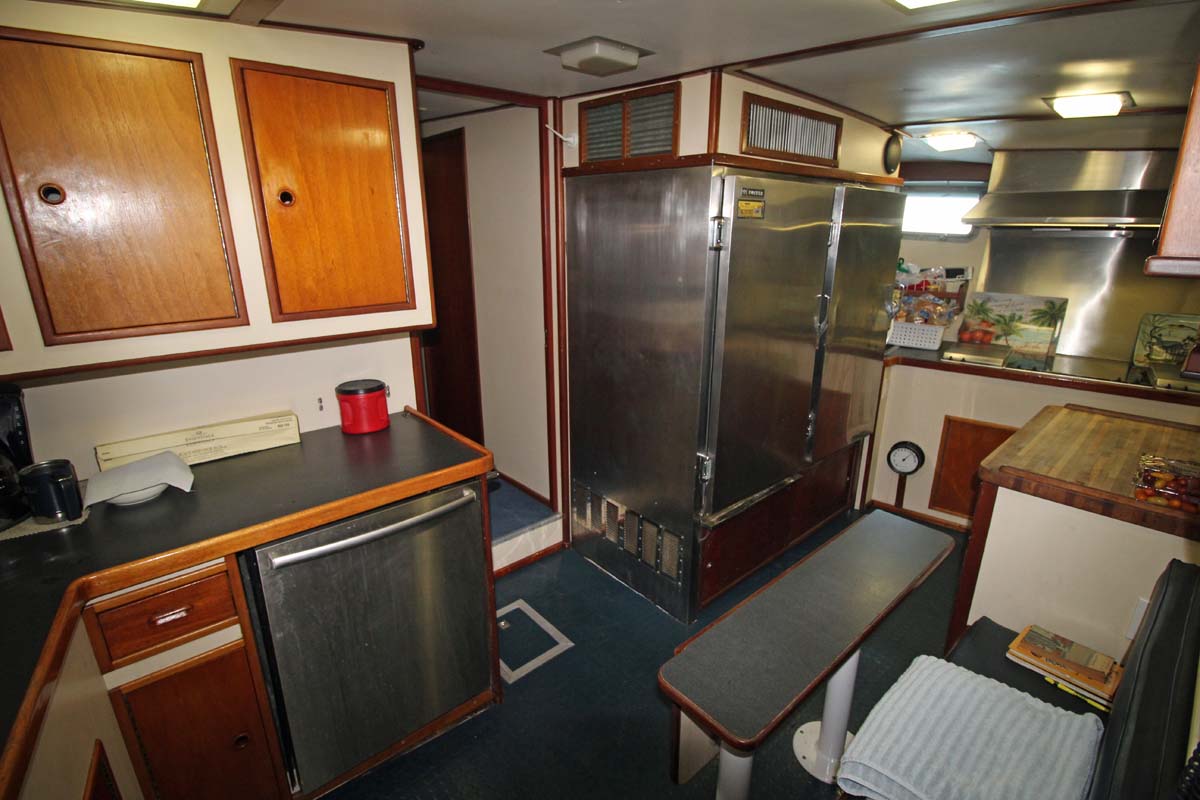
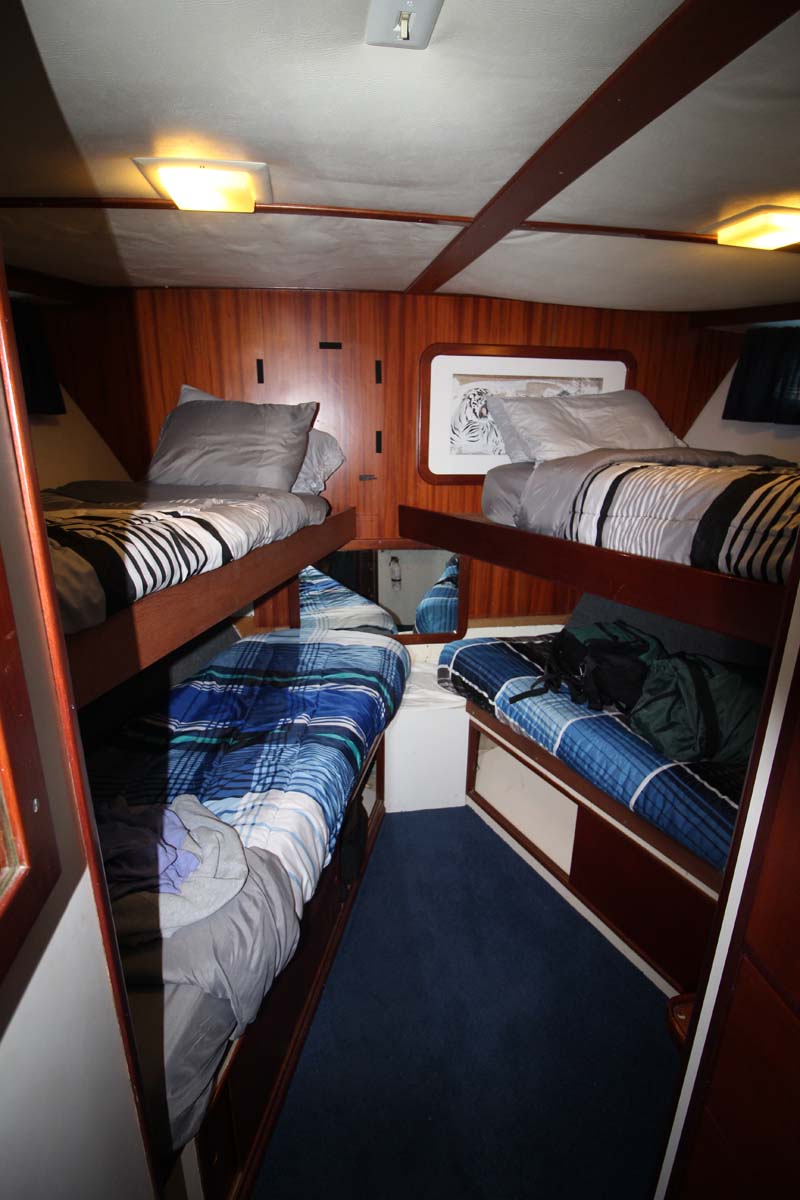
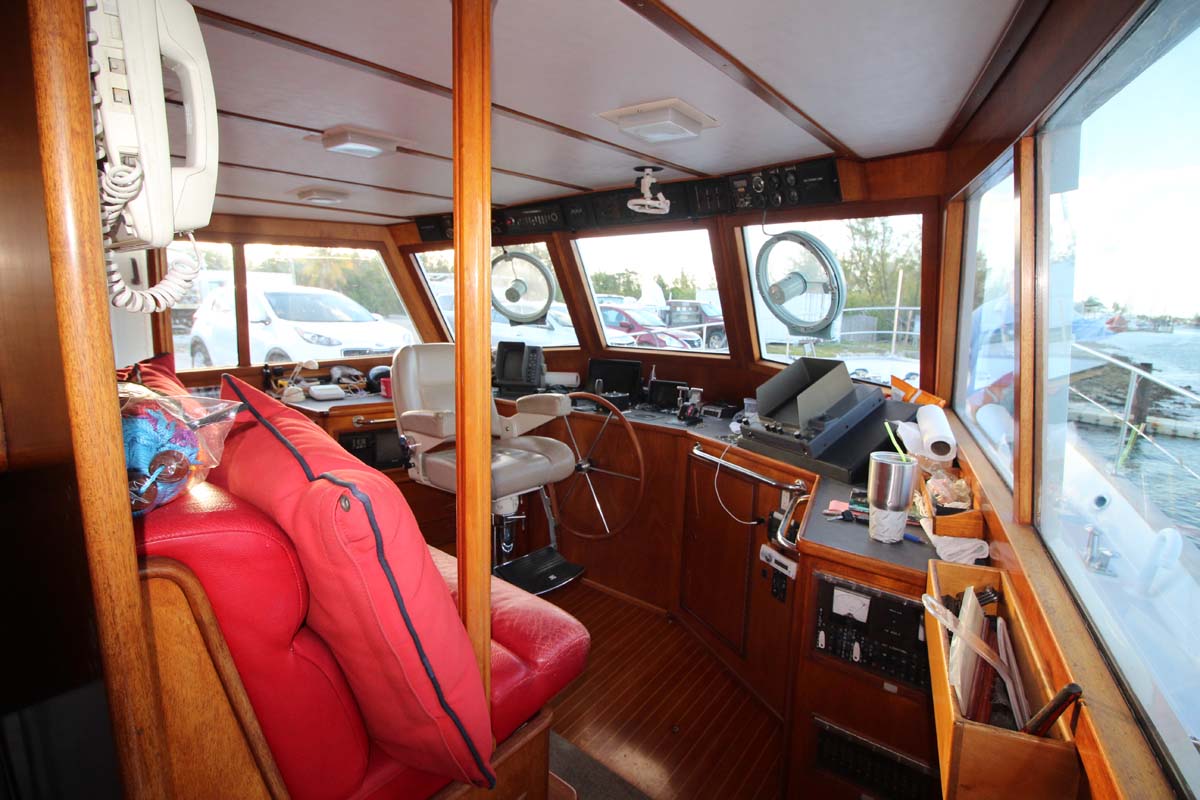
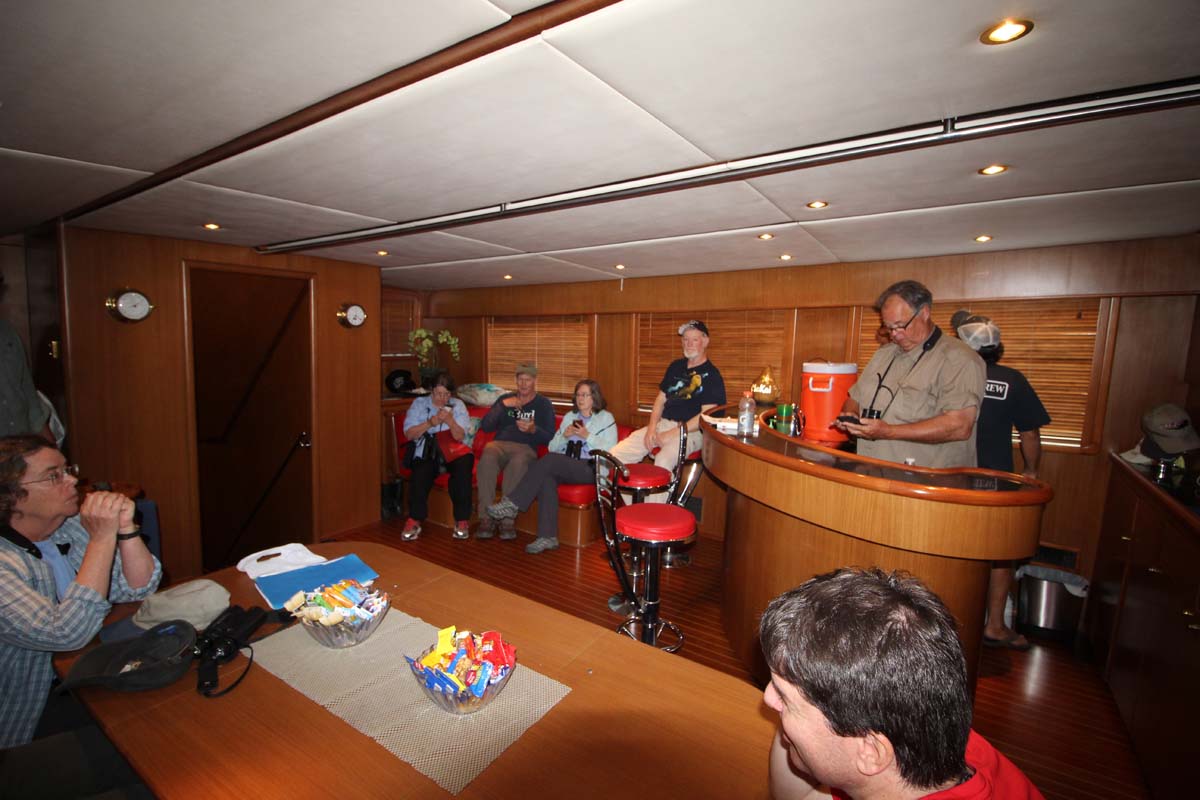
The 88 foot Makai was originally built in 1979 for American inventor and businessman William Ruger, of Ruger & Co. Guns; 9 mm Luger fame. The vessel was built by the Derecktor Boat Yard in Mamaroneck, New York. Ruger himself was the designer, with the drawings and construction executed under the watchful eyes of Lloyd’s. After weekly inspections during the 18 month construction period, the yacht earned the coveted Lloyd’s Maltese 100A1 rating. It was originally named the M/V Titania.
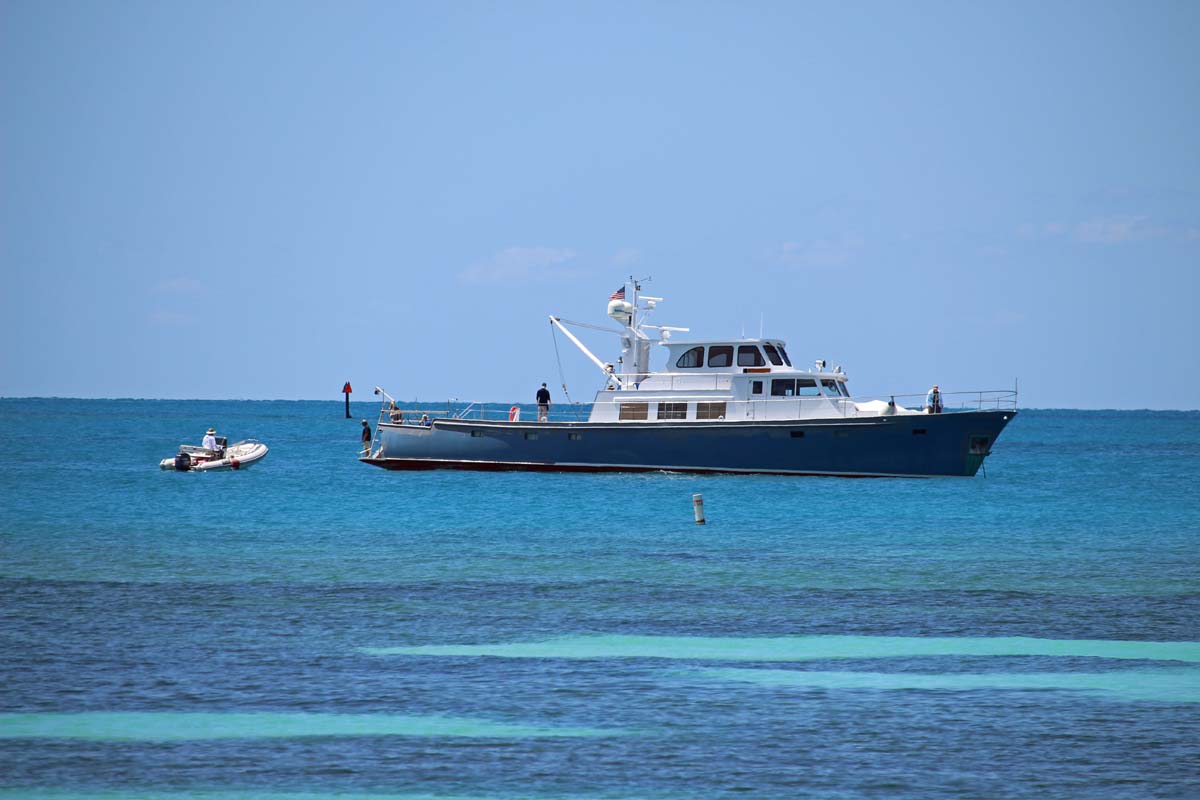
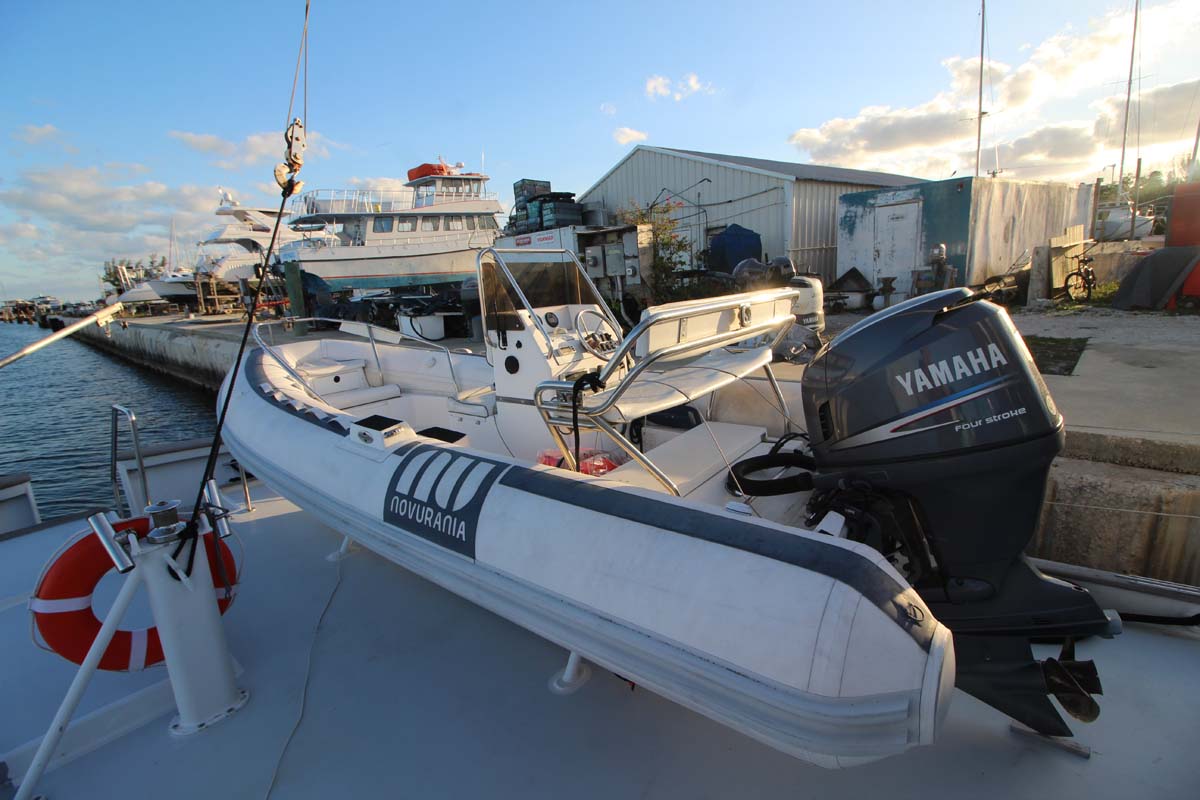
The boat also had a small “zodiac”. This is a smaller vessel to ferry people from the boat to shore when not docked. We learned it’s referred to as a tender. Yachts have tenders; a boat has a dingy.
The sun was setting and the group took a walk on land to try to find an Antillean Nighthawk. Down the road, we heard one call, once, and that was it.
Back at the Makai, they had turned on the back under water lights. Hundreds of small minnows were attracted to them. In addition, so were two or three Tarpon that would zoom in for a meal. We also saw some Mangrove (Gray) Snappers along the dock wall.
Monday
April 22
Close encounter with a Hammerhead Shark
The engines started up a bit early around 5AM and woke me up. We pulled away 15 minutes later. I tried to sleep but gave up at 6 to take a shower. Kelli followed me right after. I went up near 7 to see in breakfast was out, it was and consisted of scrambled eggs, sausage, cinnamon French toast and fruit. I went back down to our room to tell Kelli, but she was hunched over sitting on my bed. She was not feeling well. Past boat trips had not bothered her but this one was getting her seasick. She laid down to rest and I went up to eat. After breakfast, most of us went to the enclosed top to look for some pelagic birds. I periodically checked in on Kelli, as birding was light. She did take some seasick pills but they are most effective if you take them before you get sick. Up top, I did get to see a number of flying fish jump and “fly” a good hundred feet getting out of the way of the boat. We managed a few distant Audubon’s Shearwaters and some immature Northern Gannets, but missed on Bridled Tern. A couple of Bottlenose Dolphins were also spotted near the boat.
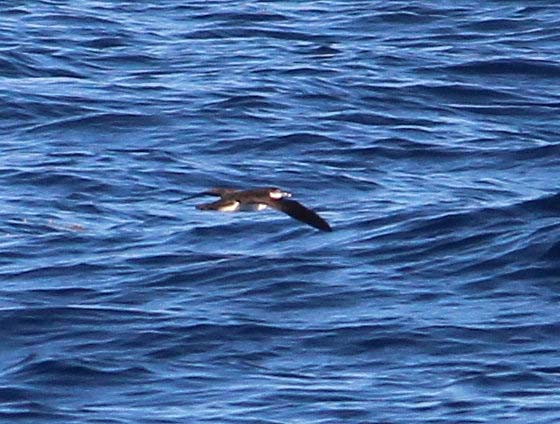
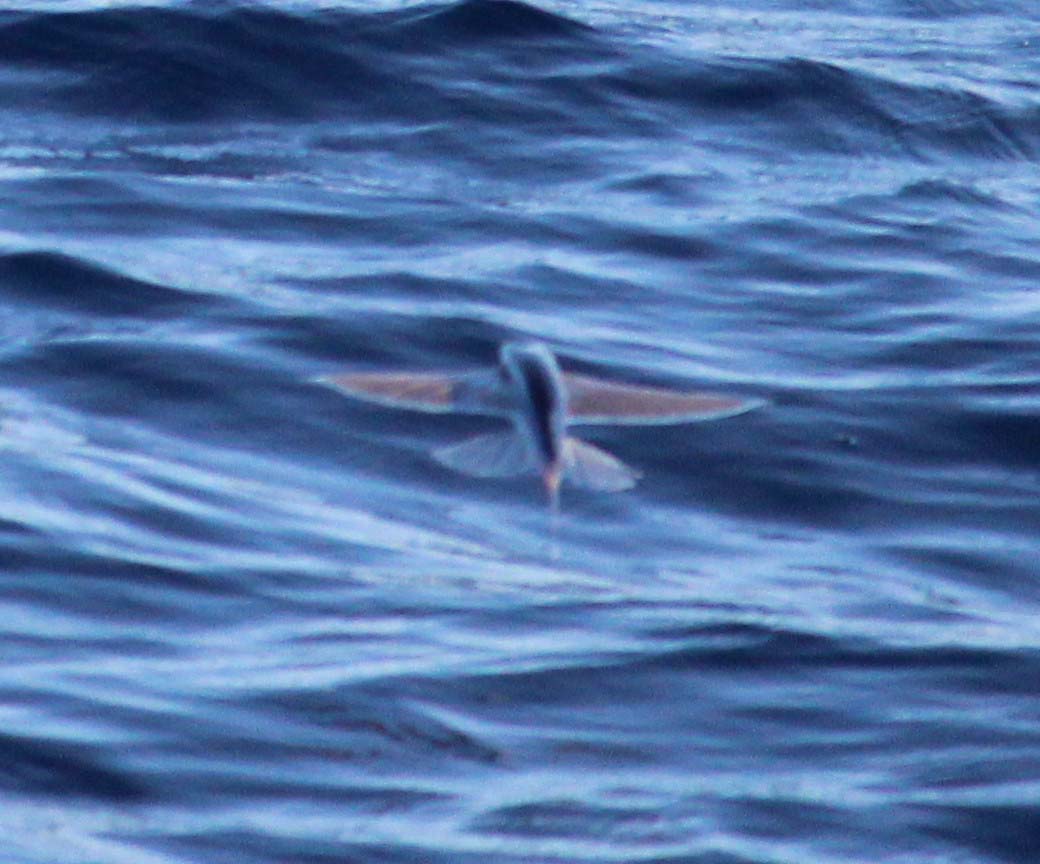
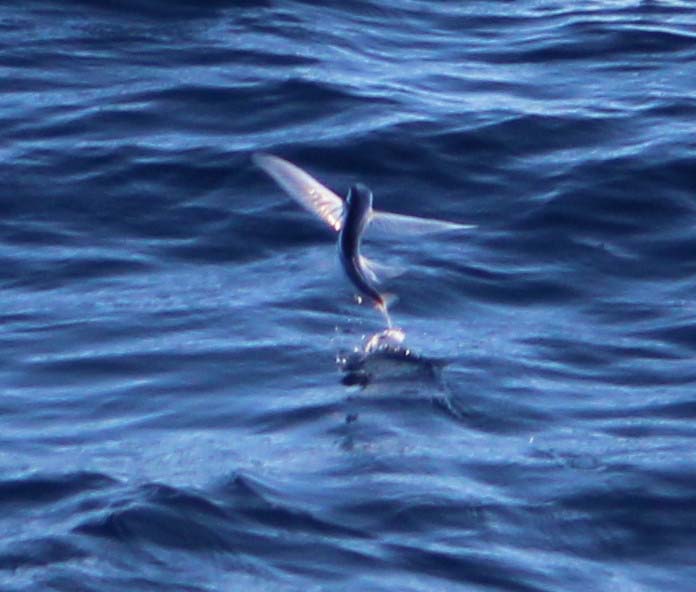
Audubon Shearwater and Flying Fish
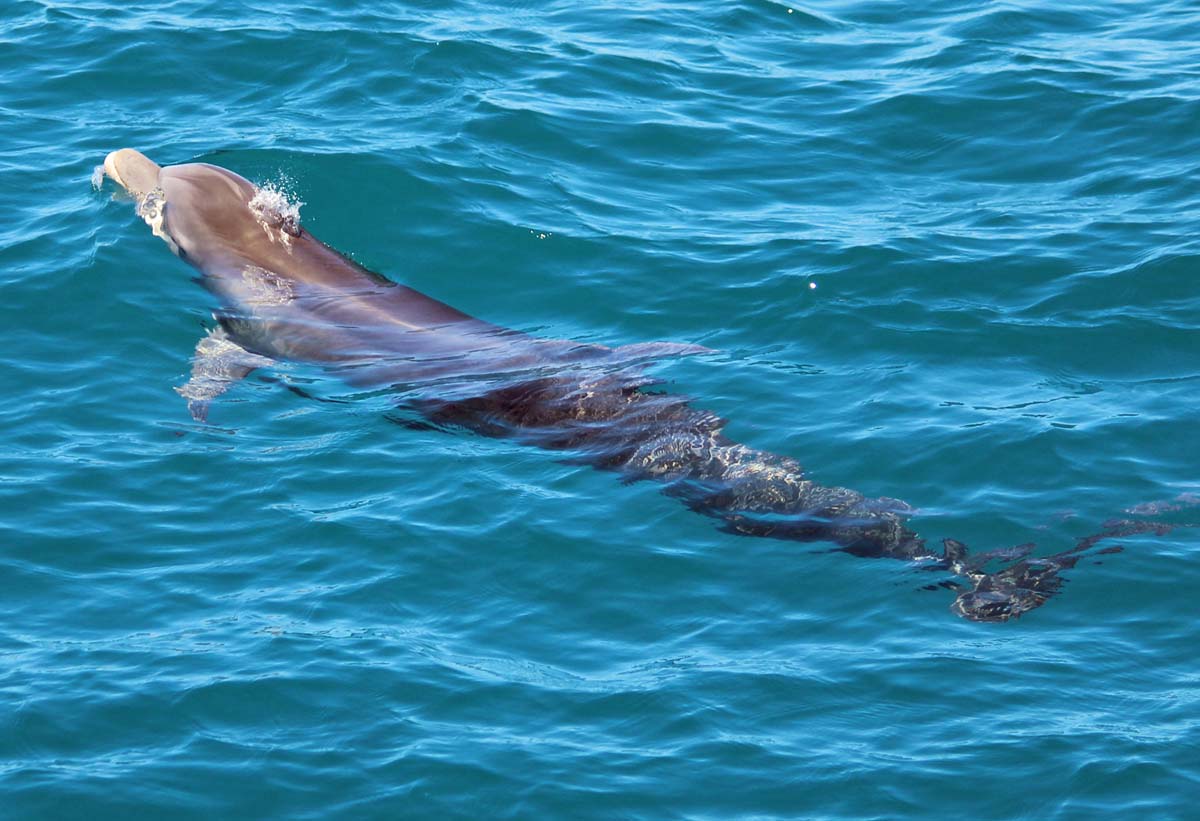
Bottlenose Dolphin and Kelli
I eventually convinced Kelli to go outside. She felt a little better and tried to eat a bit but that didn’t stay down for long. She did get a bit comfortable sitting on the side of the boat. She was Ok if she didn’t stand up. It was a long four hours to get near the Dry Tortugas. Kelli was managing just a bit better so when we got to the Tail’s End Marker she did get to see an immature Brown Booby take off and circle the boat a couple of times.
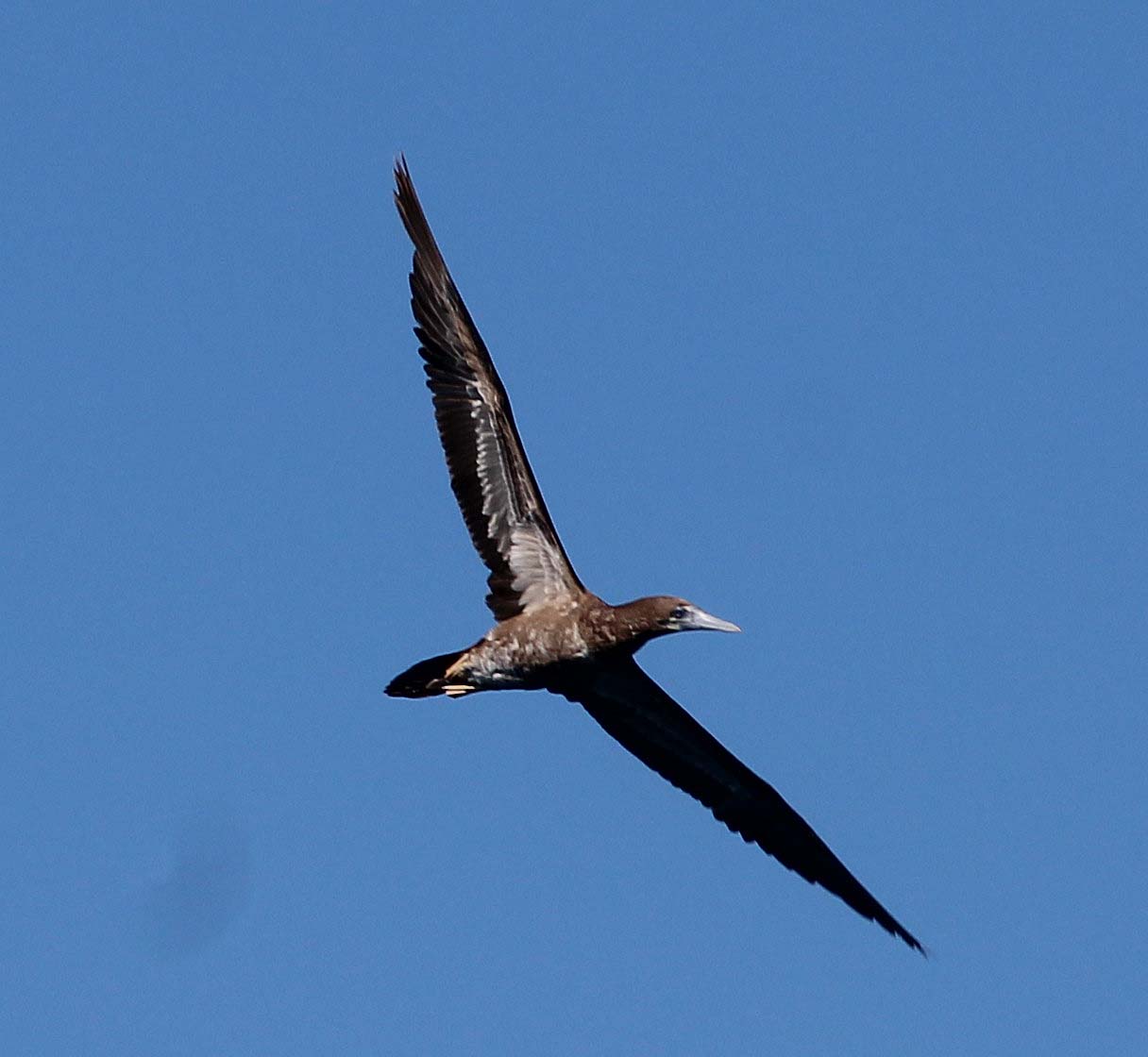
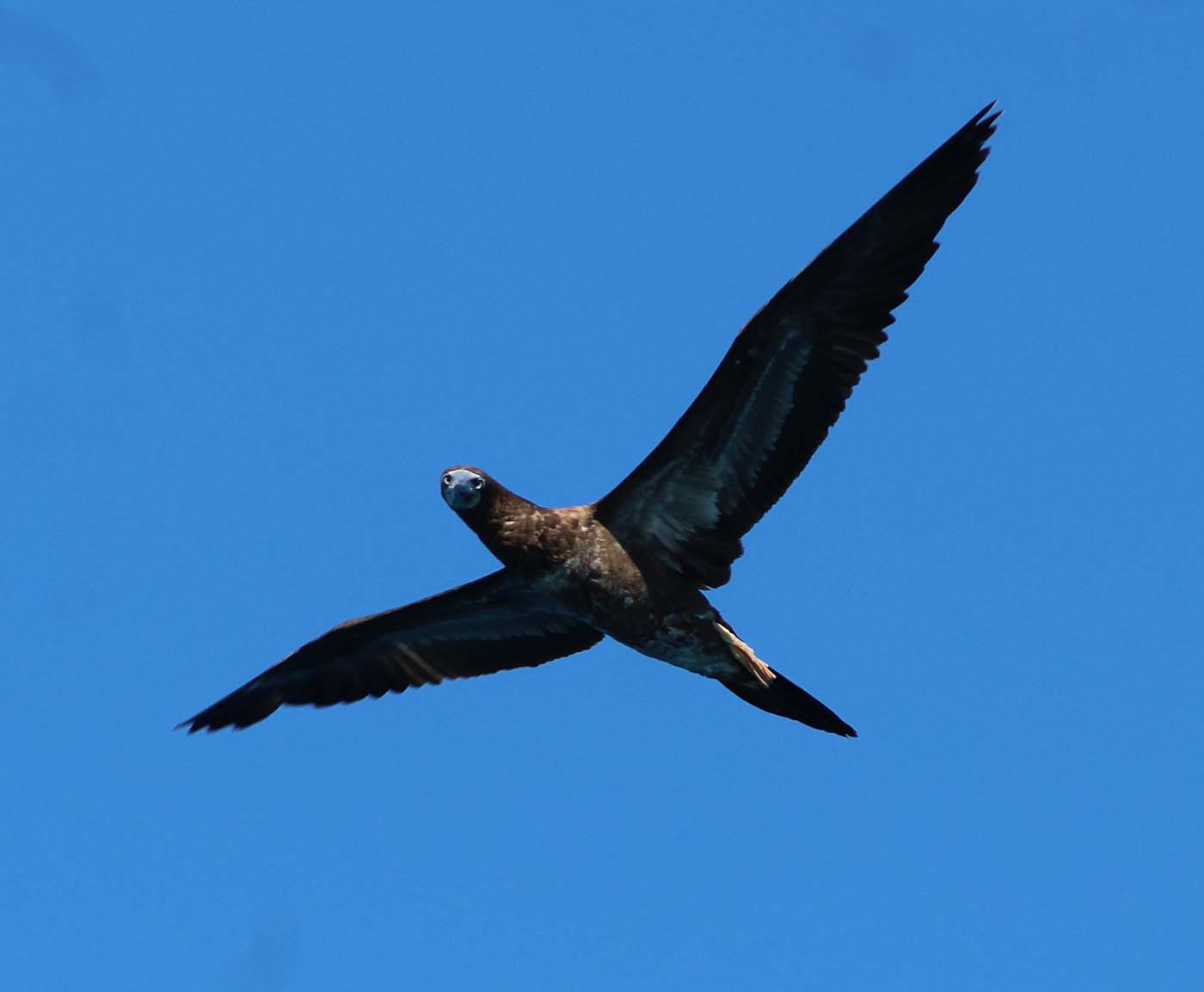
Brown Booby
We neared Hospital Key, a few Sooty Tern and Brown Noddy could be seen flying by the boat. These new lifers were #600 and 601 for North America for me, a nice milestone. Once Hospital key was in sight we could make out the colony of Masked Booby on the sand along with a few Royal Terns. A couple of boobies did fly off and were seen a bit closer to the boat. This was lifer #602.
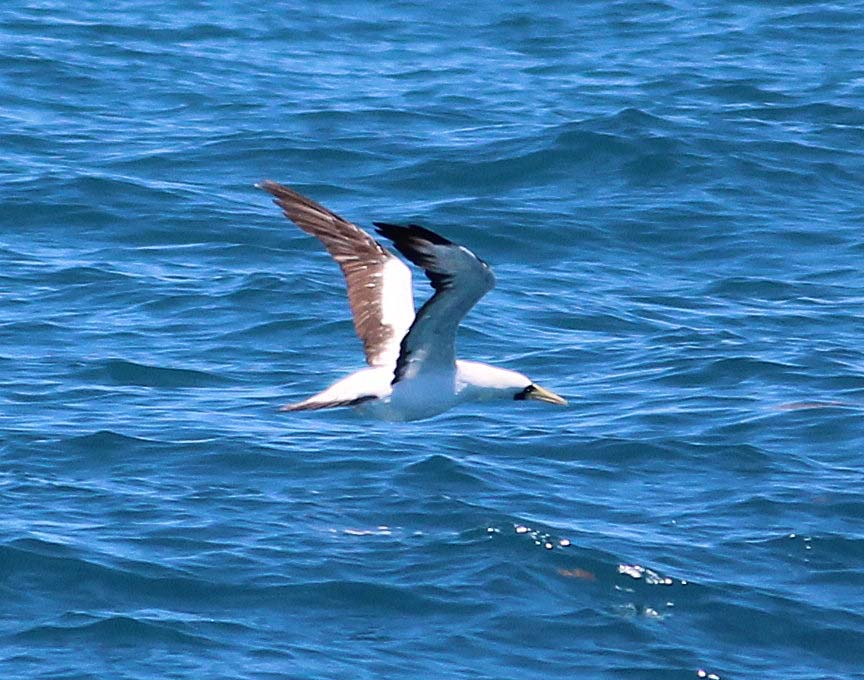
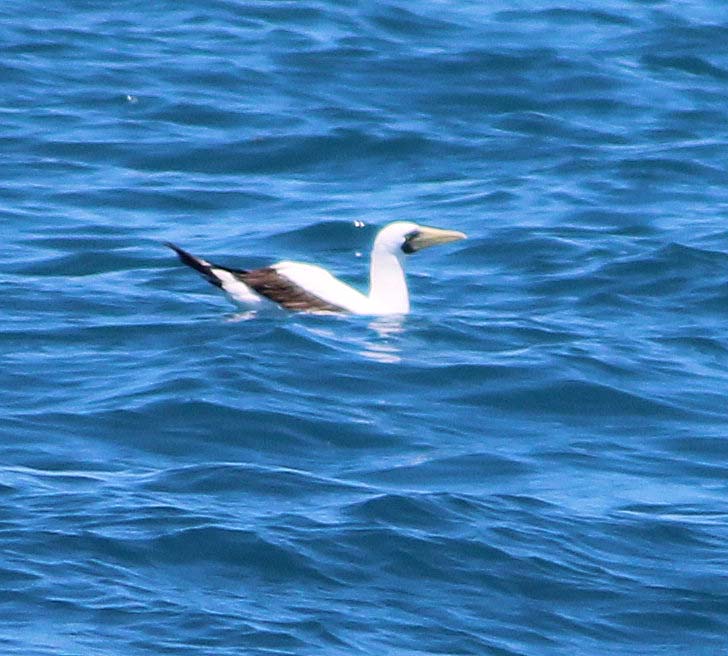
Masked Booby
We then anchored off Garden Key. Fort Jefferson could be seen taking up most of the island.
Ponce de Leon discovered the Dry Tortugas in 1513 when he caught over 100 sea turtles there. Subsequently the islands were referred to as the “Tortugas” (turtles) and “Dry since there was no fresh water to be found.
We ate lunch first on the boat. I knew Kelli would feel better once on solid ground so we were one of the first to climb into the tender for the short ride over to the key. Jenny, the boat's excellent cook. packed a lunch for Kelli. She was able to eat once on land.
As we neared the key, Adrian spotted a couple of Bridled Terns on the south coal dock ruins. I exasperatingly could not find them. A small flock of Ruddy Turnstones was on the slip where we landed. We hurriedly got off the boat. Fortunately, the Bridled Terns stayed put and after getting off the tender, we were able to view them from land. Brown Noddy and Brown Pelican also sat on the docks. In the clear water below us, we could see a few fish, Sergeant Majors and a Blue Parrotfish. A swarm of Magnificent Frigate birds swirled over our head as we waited for the rest of our group to arrive by tender.
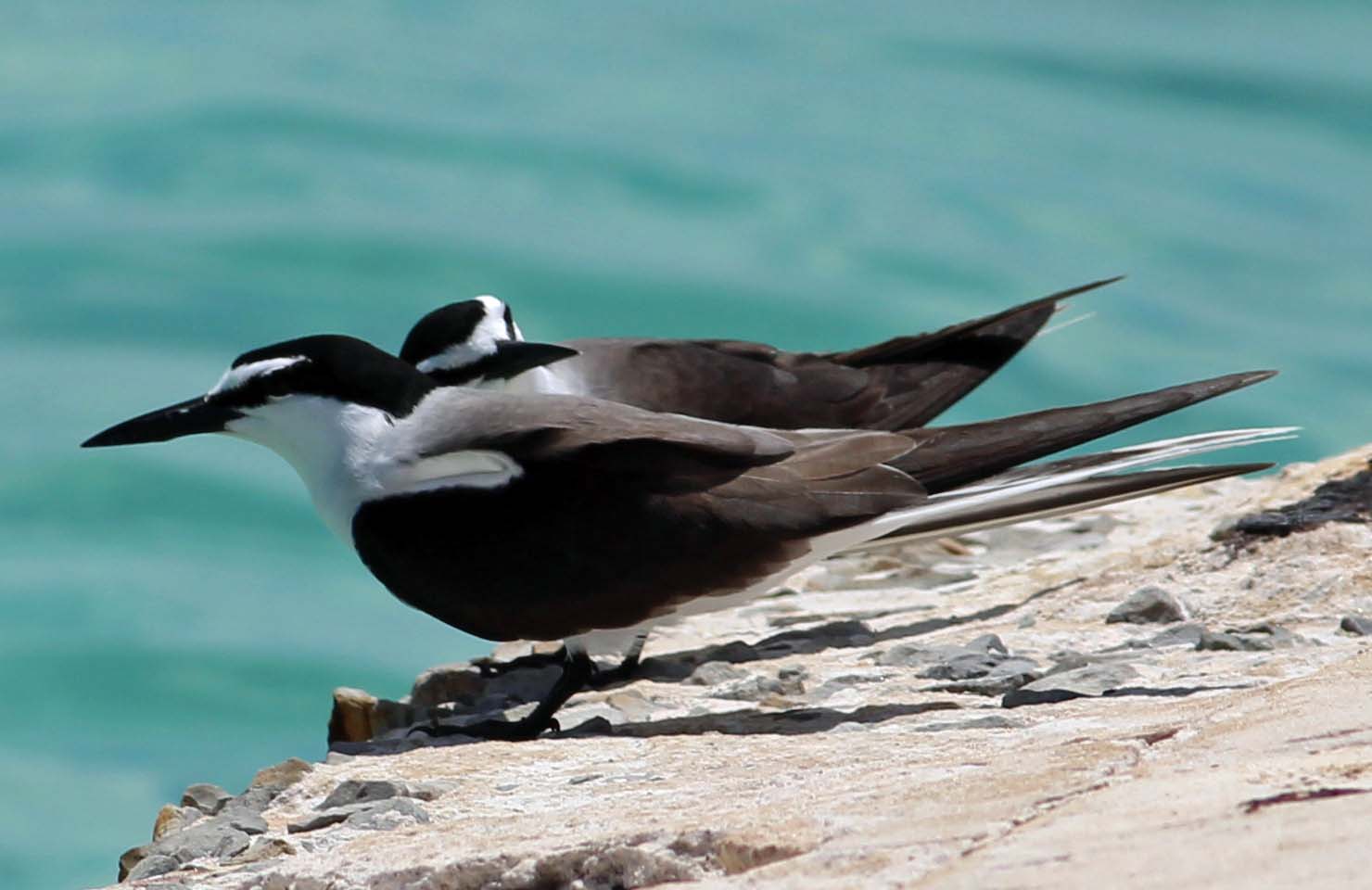
Bridled Tern
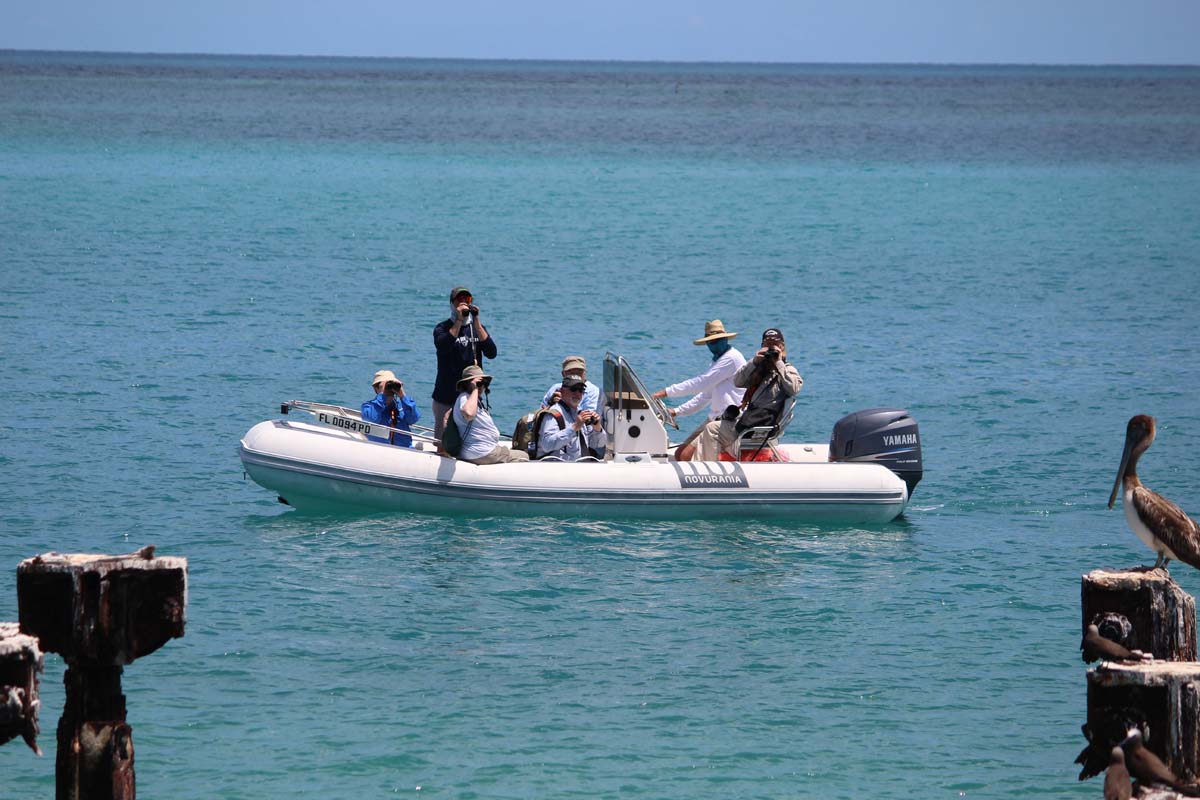
The rest of our group
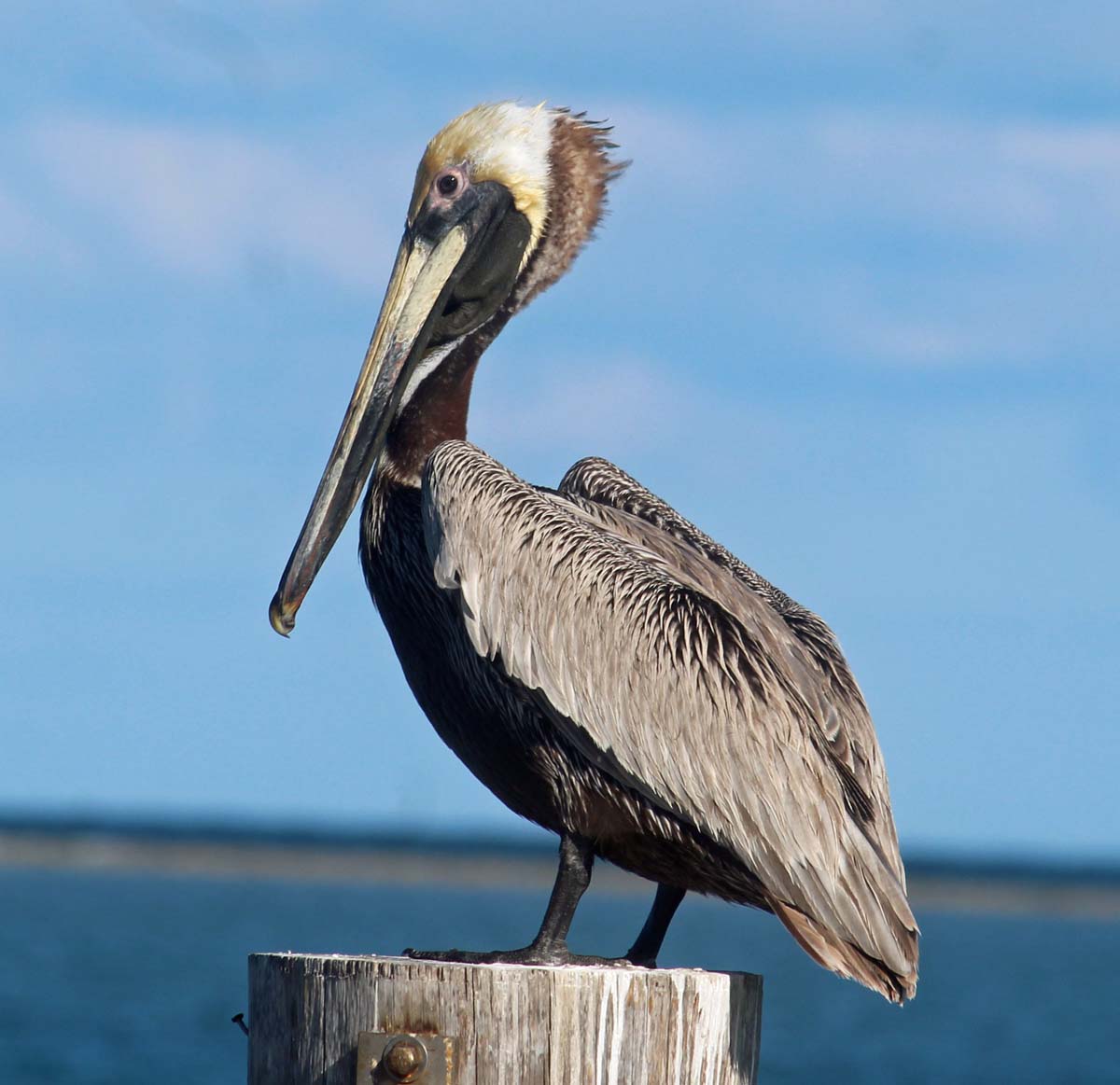
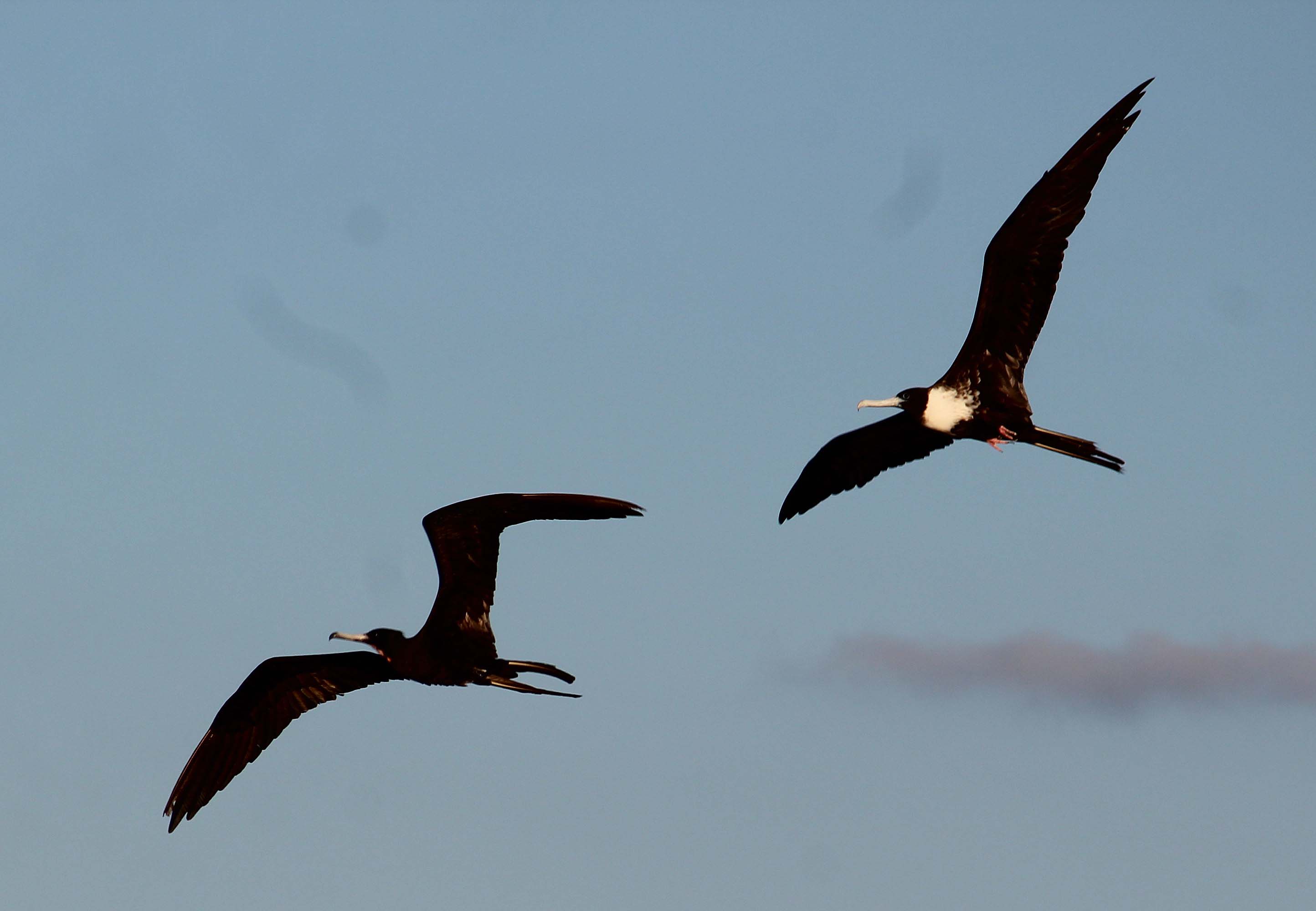
Brown Pelican and Magnificent Frigatebirds
Once together, we birded the very small campground. I spotted a Yellow-billed Cuckoo and we heard a White-wing Dove calling. Adrian spotted a Yellow-throated Warbler in a Palm Tree overhead, a lifer for Mark. We then headed inside the fort. Kelli was feeling better but still recovering so we decided to sit at the small bird fountain as the others walked around the bottom, then on top of the fort to look for a Black Noddy. We had a nice relaxing but birdy time together sitting in the shade watching birds come to the only fresh water source on the island.
A couple of Cattle Egret paraded around nearby. The water attracted Swainson's Thrush, Black-and-white Warbler, American Redstart, Cape May Warbler, Northern Parula, Chestnut-sided Warbler, Blackpoll Warbler, female Summer Tanager and female Painted Bunting.
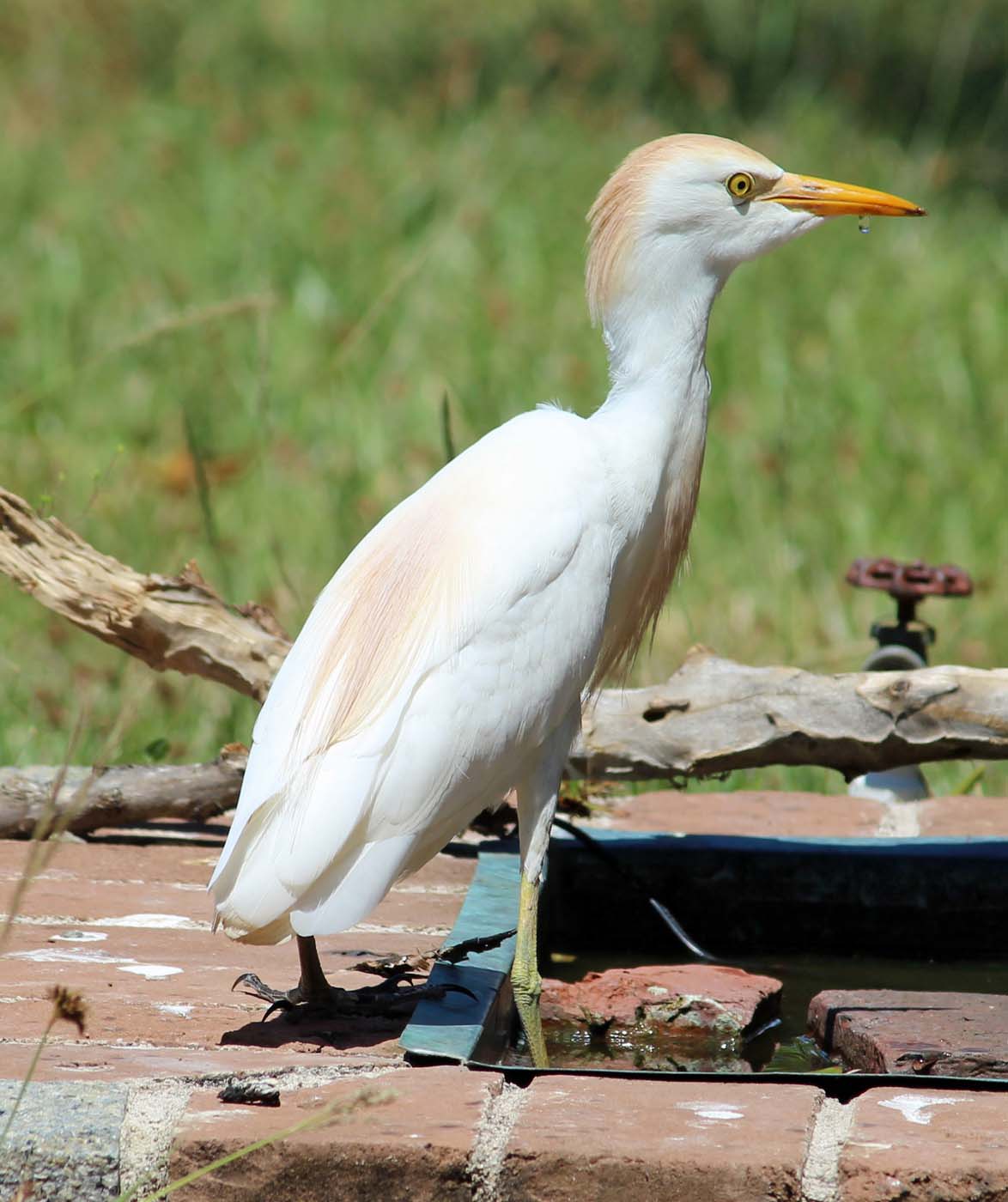
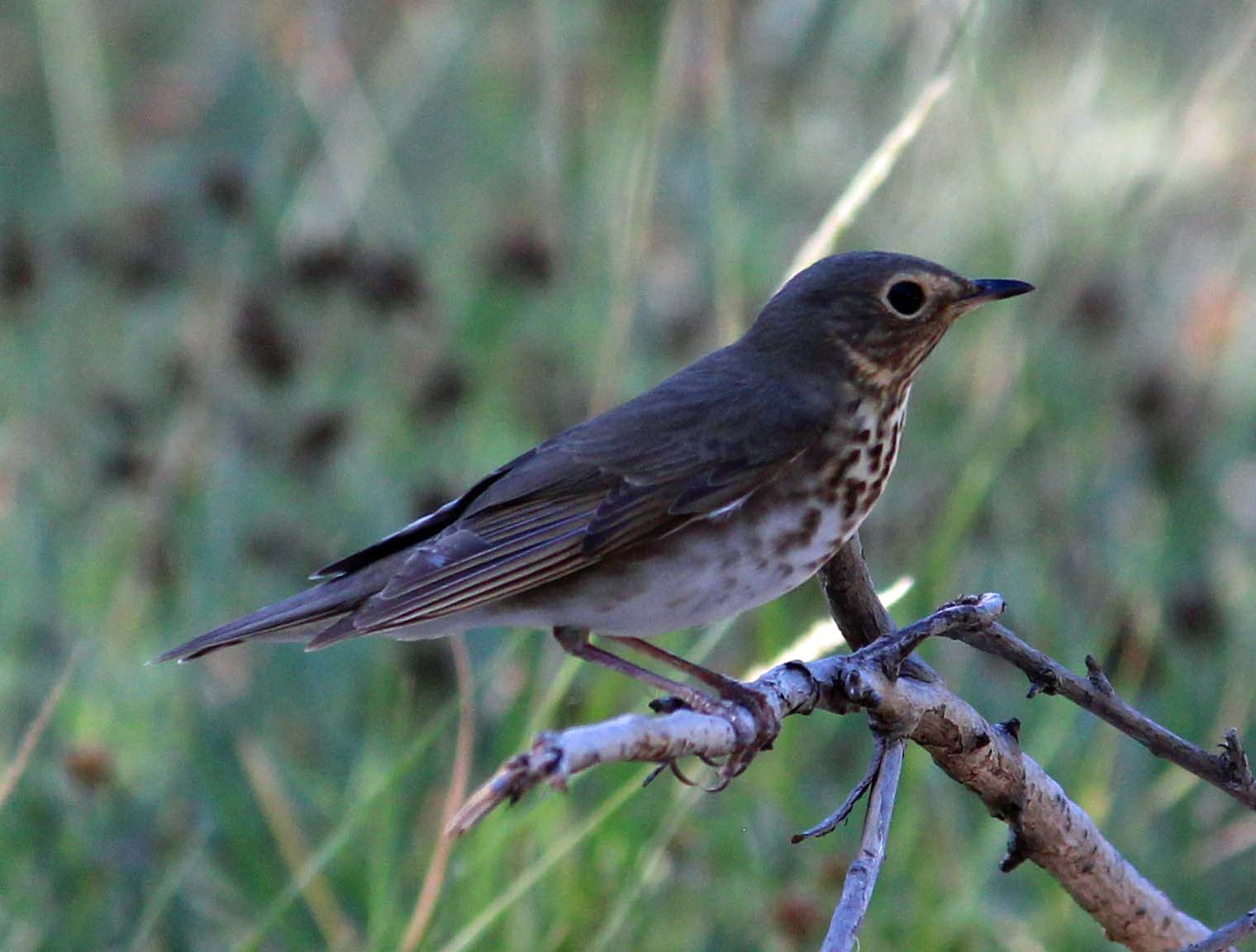
Cattle Egret and
Swainson's Thrush
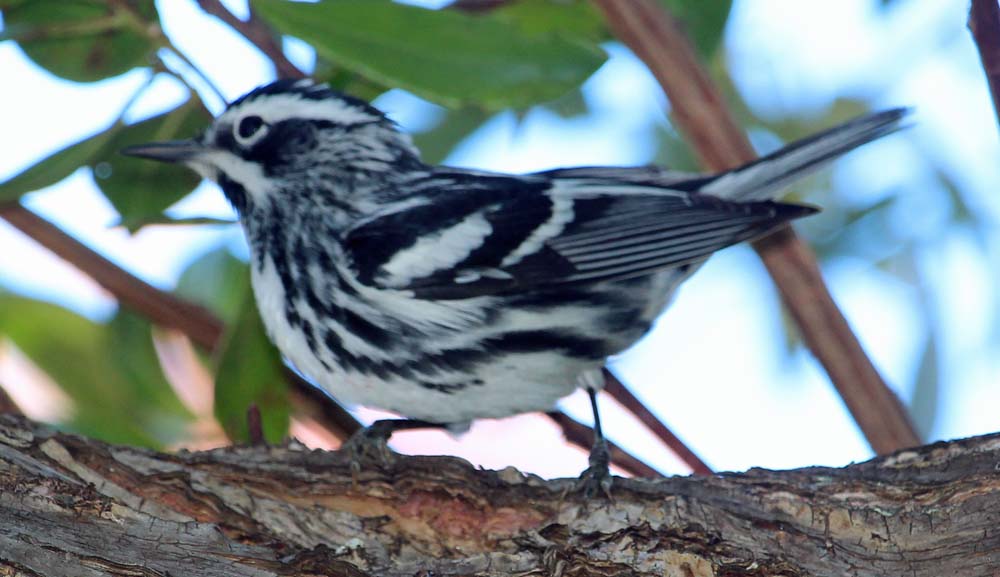
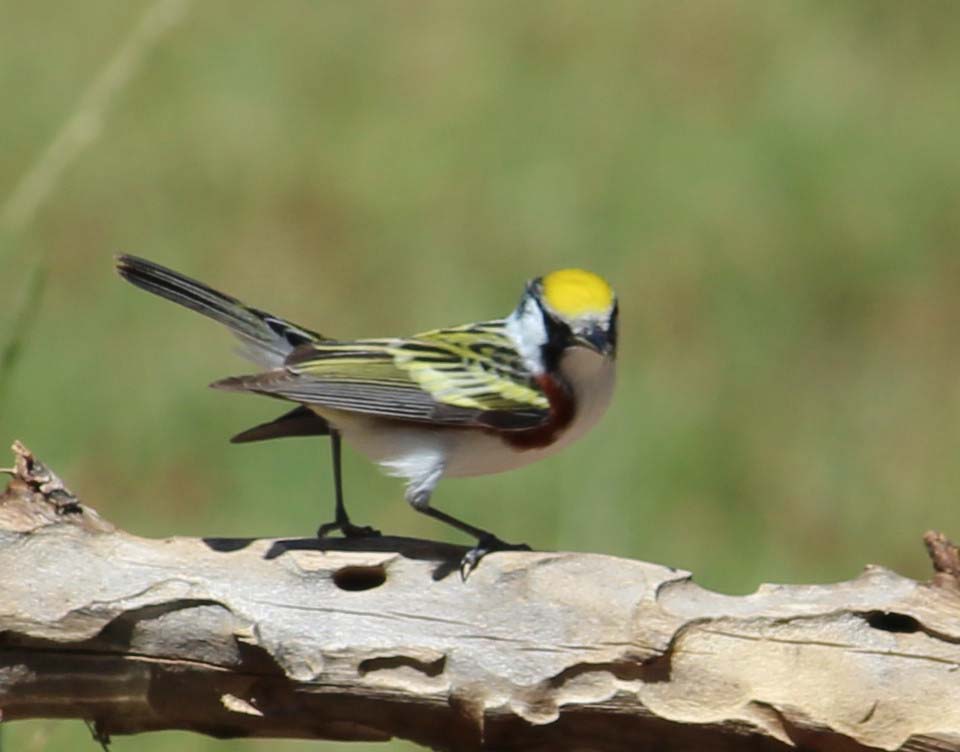
Black-and-White Warbler and Chestnut-sided
Warbler
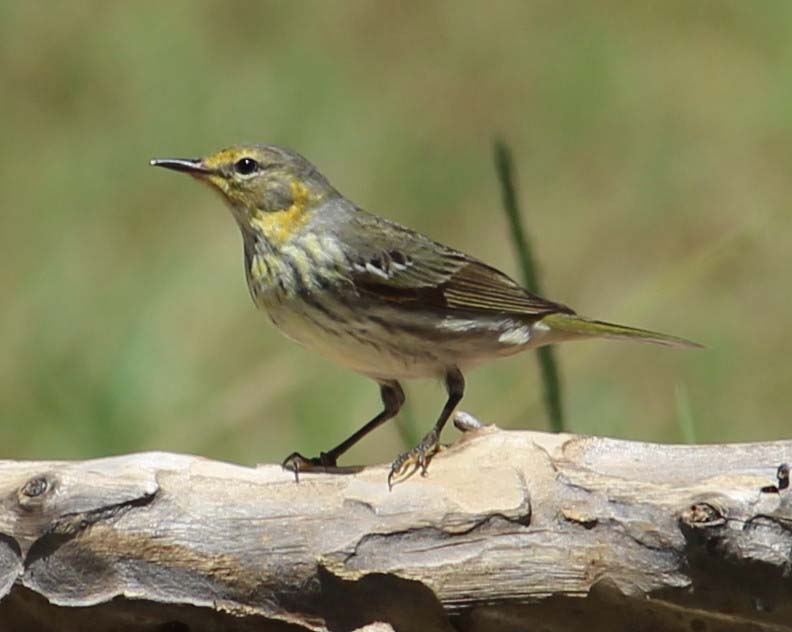
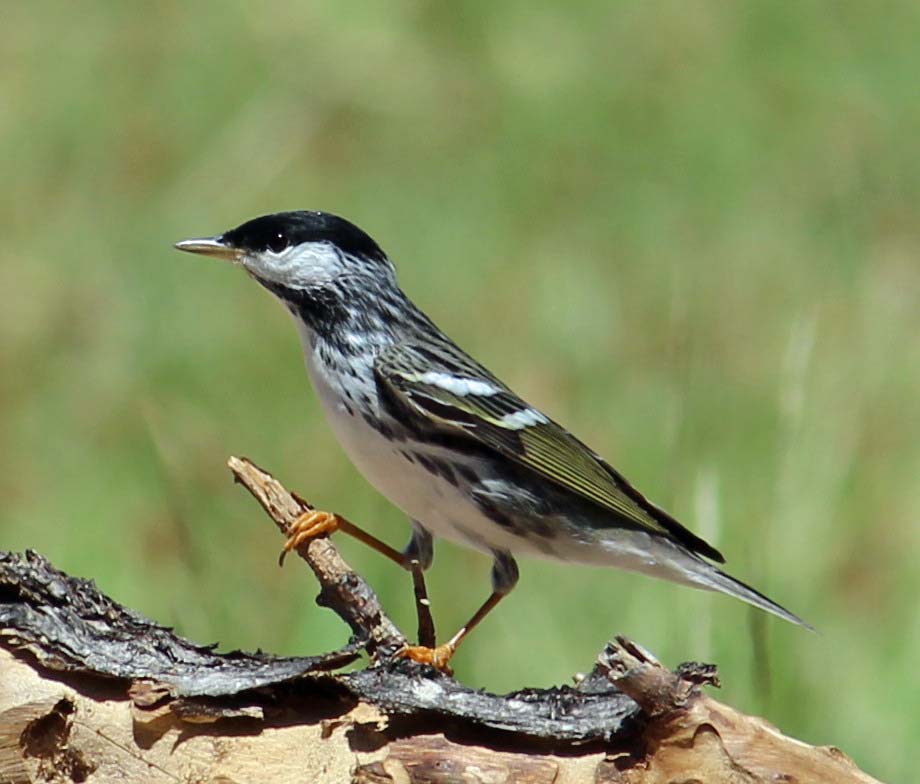
female Cape May Warbler and Blackpoll Warbler
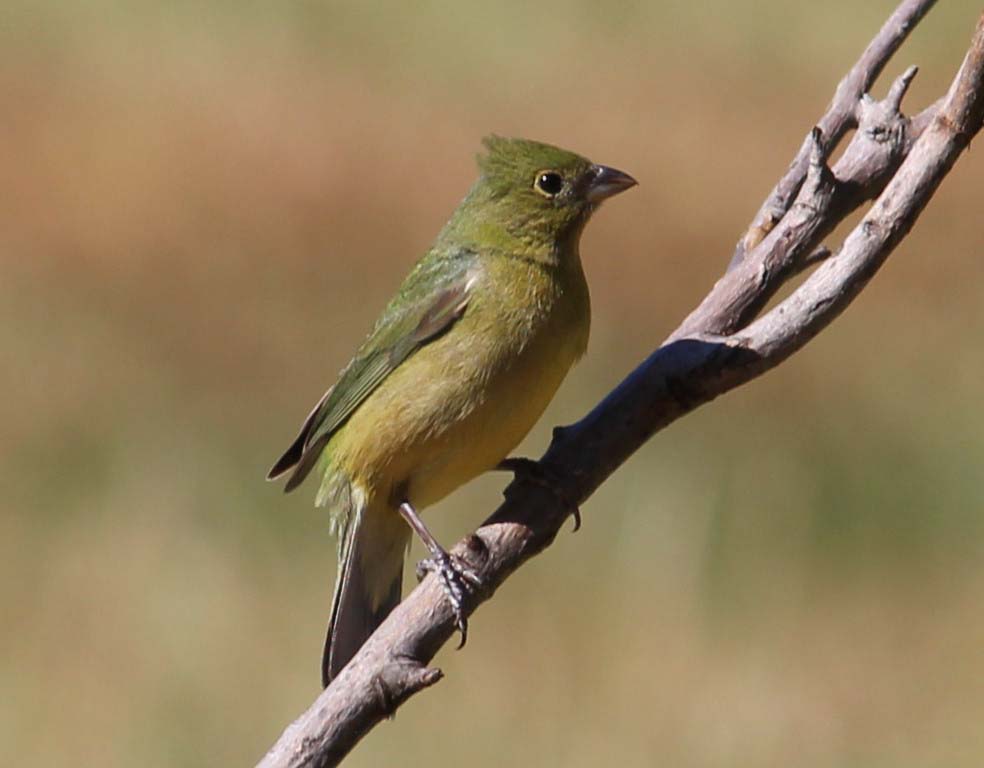
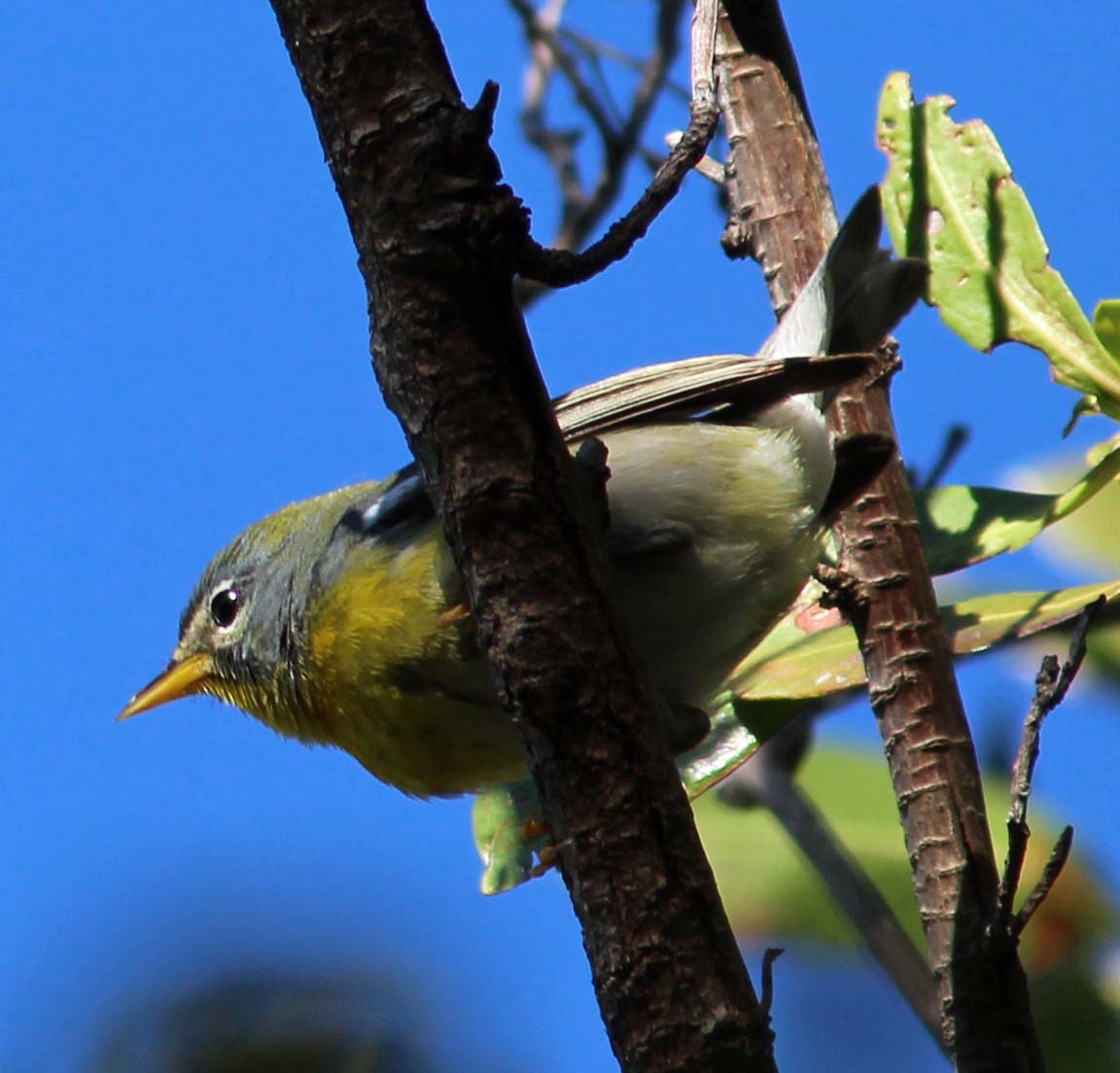
female Painted Bunting and Northern
Parula
A very tame Hooded Warbler hunted for insects on the tree branches just feet away.
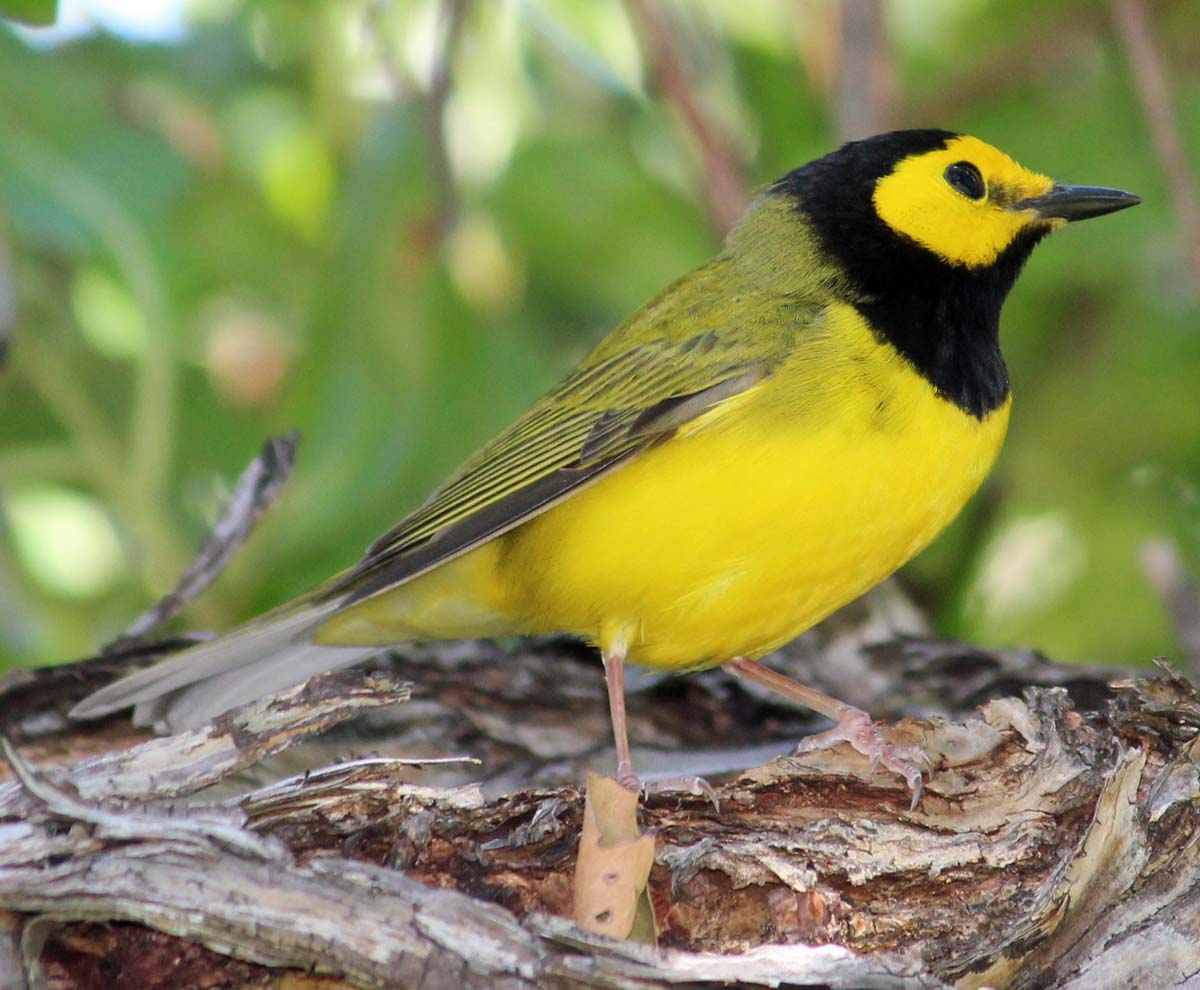
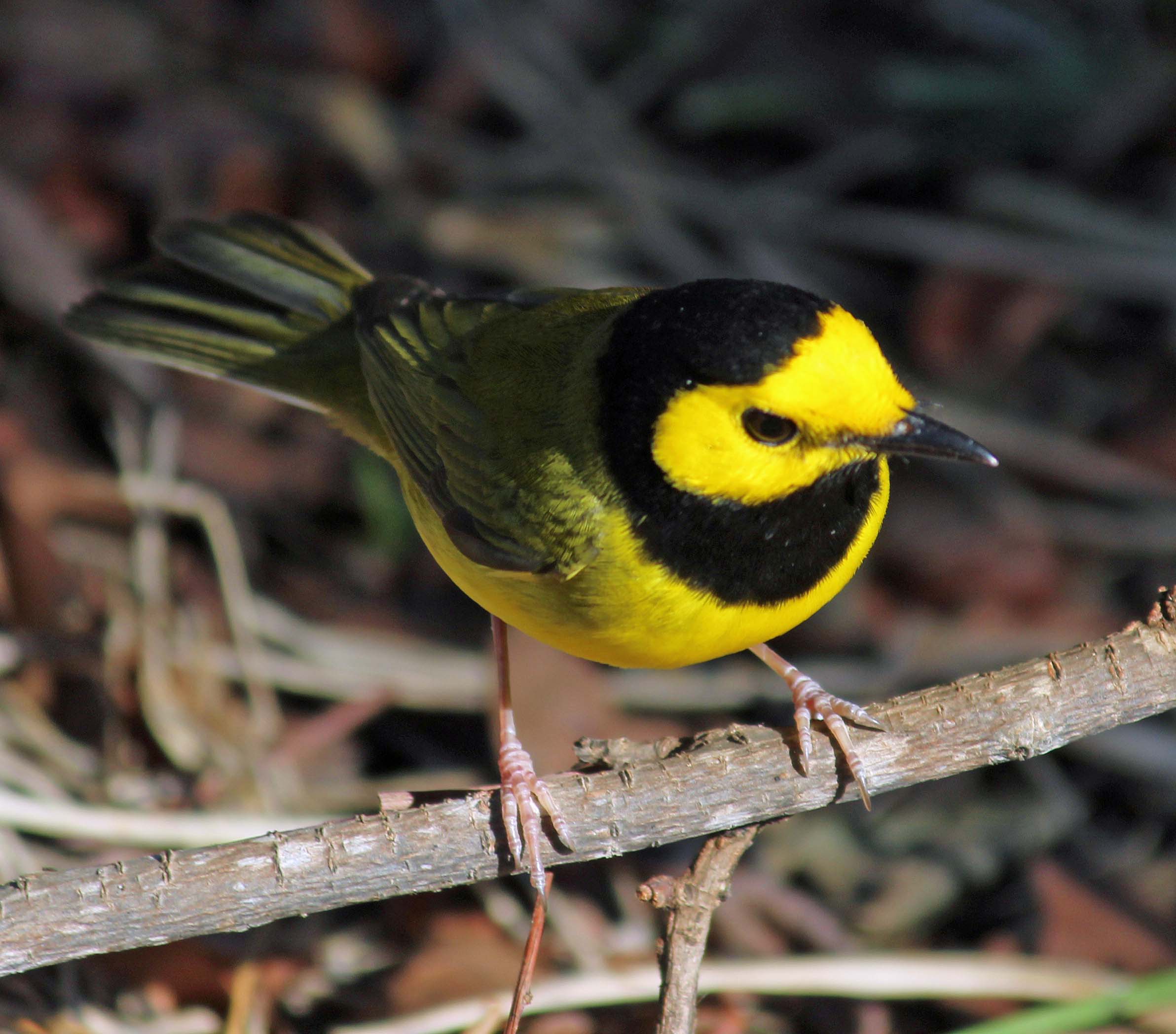
Hooded Warbler
Mark also joined us for a while. We were able to find both Black-whiskered and Red-eyed and Vireo. Black-whiskered Vireo is another Florida specialty. It only breeds in southern Florida and other parts of the Caribbean. This was a lifer for Mark and Kelli. We all had great looks at a Prothonotary Warbler, a bird Mark missed earlier in the trip.
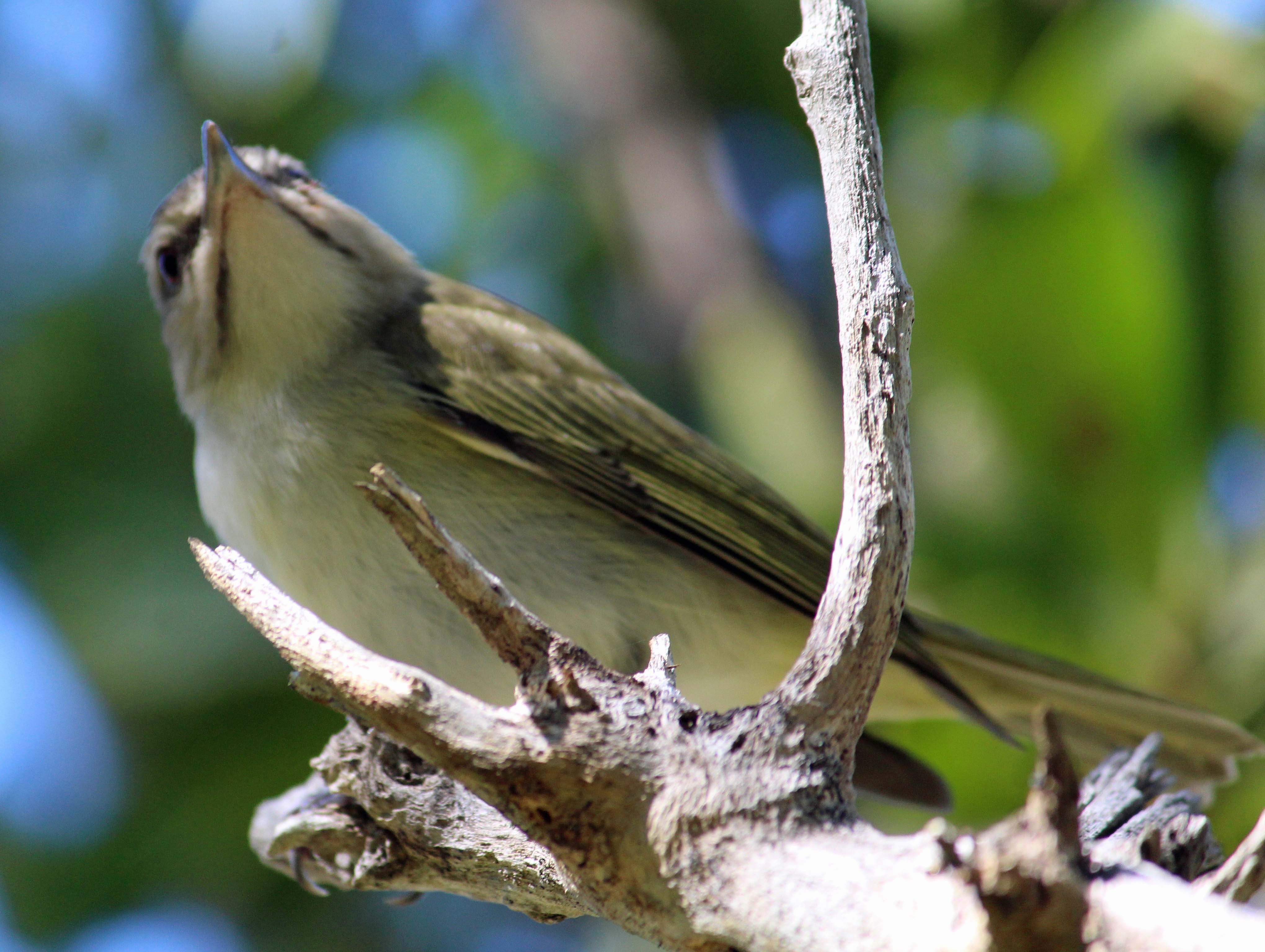
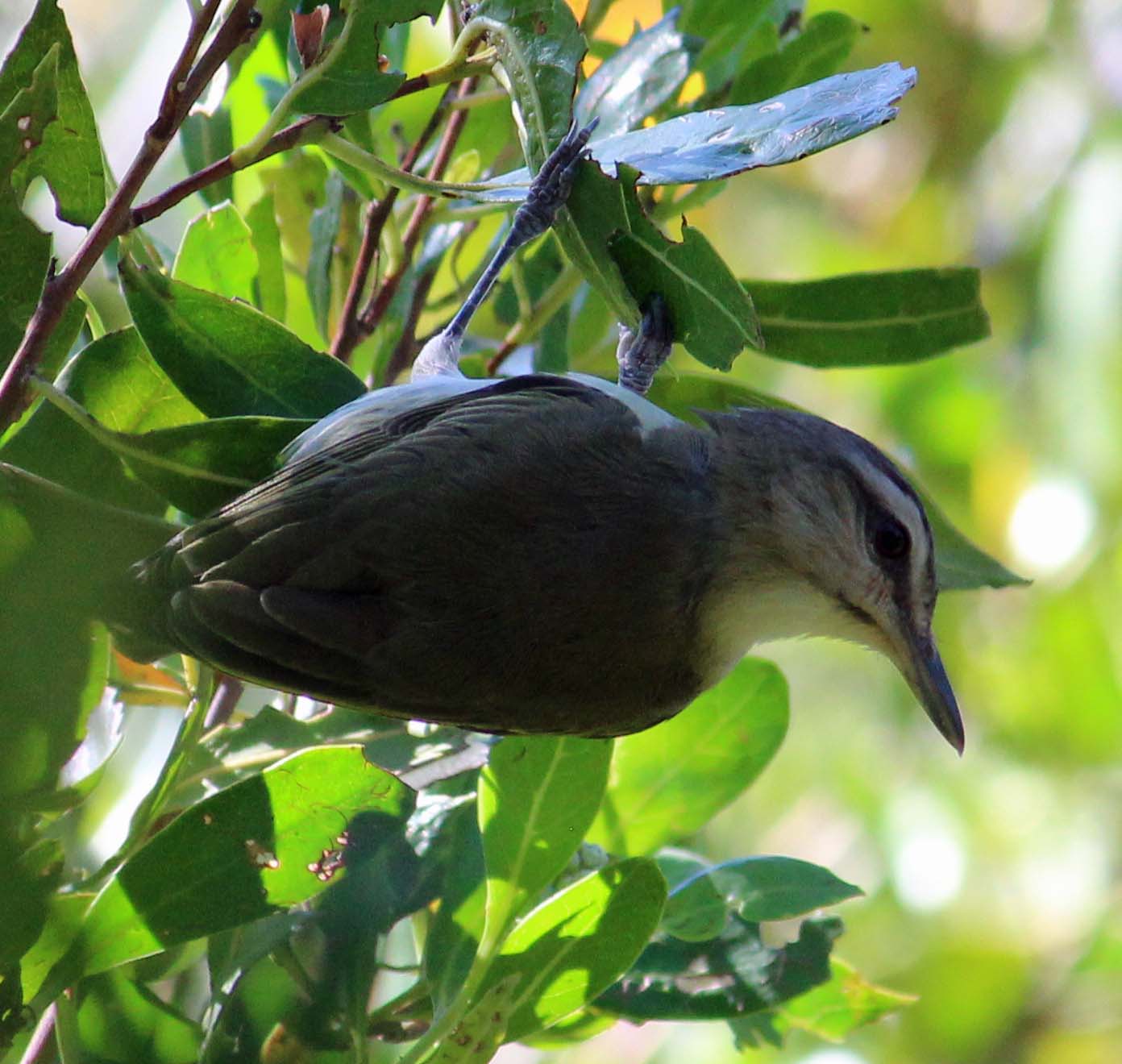
Black-whiskered Vireo
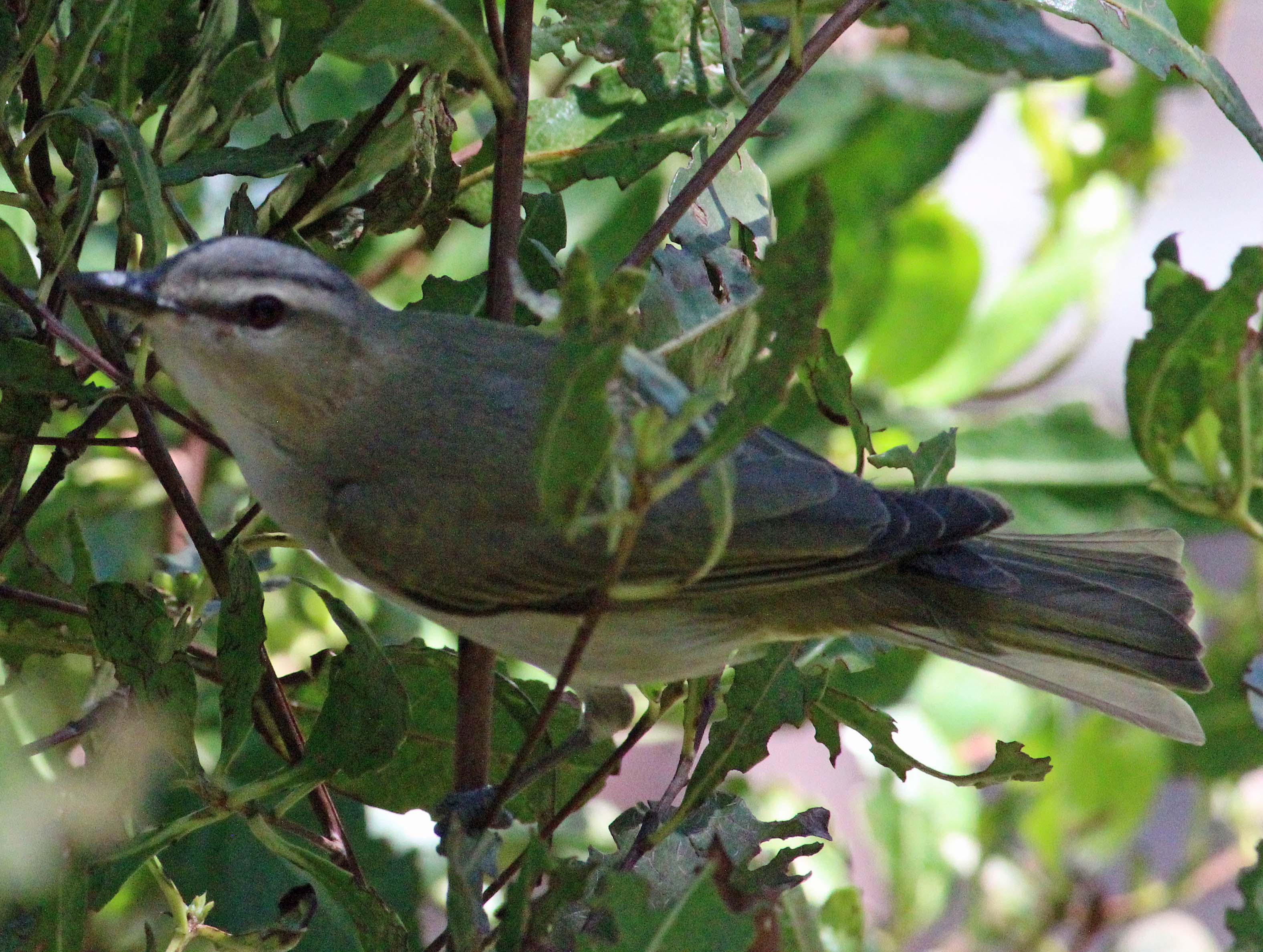
Red-eyed Vireo
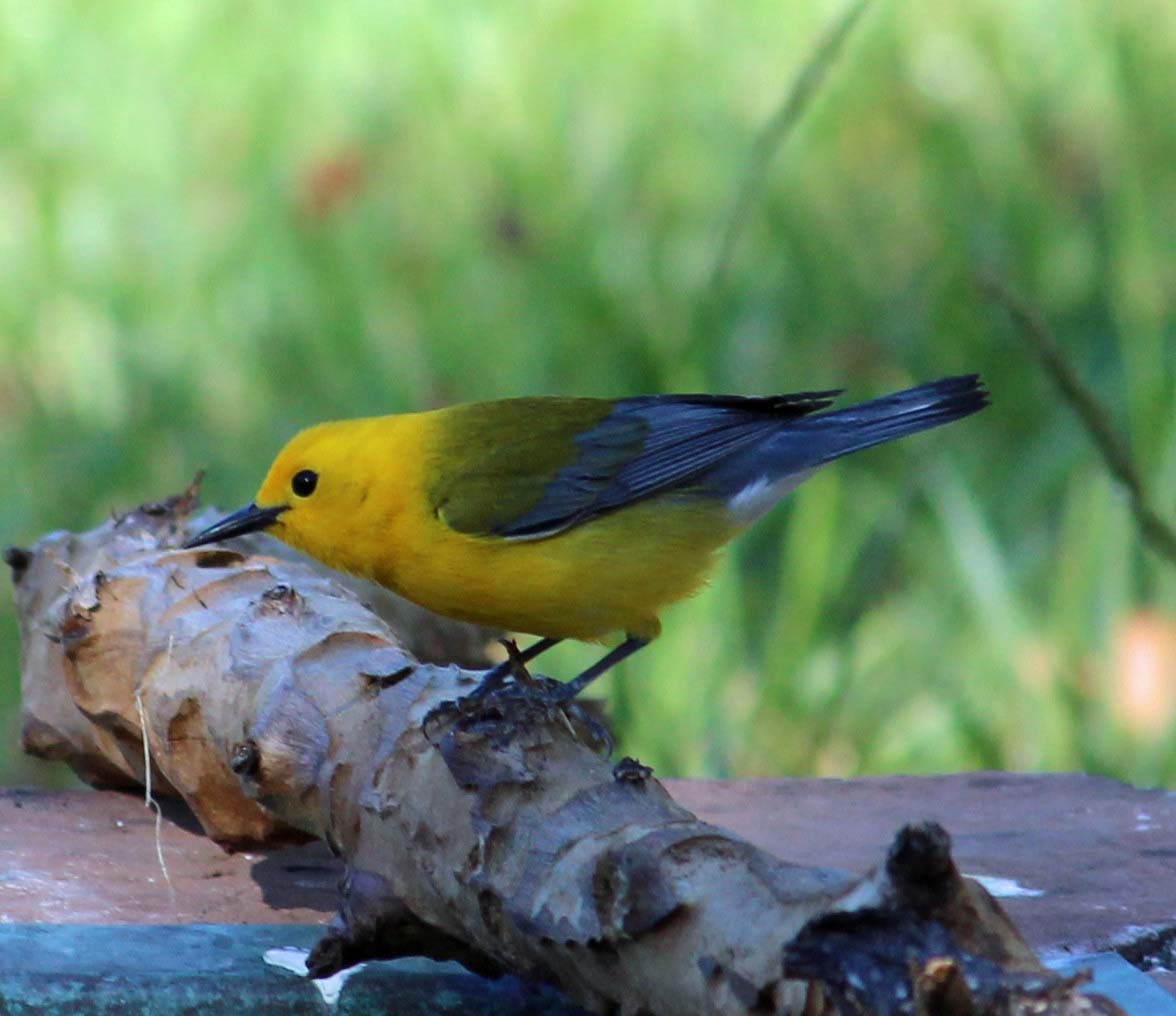
Prothonotary Warbler
Some of our group returned having just seen a Black Noddy found by Adrian. Kelli and I quickly climbed the stairs to the top of the fort and made our way over to one corner where Adrian had a couple of scopes on the bird. We could see three noddies in a bush. The middle one was slightly smaller but the key was that its white crown stayed white at any angle, unlike the nearby Brown Noddy. Lifer # 603.
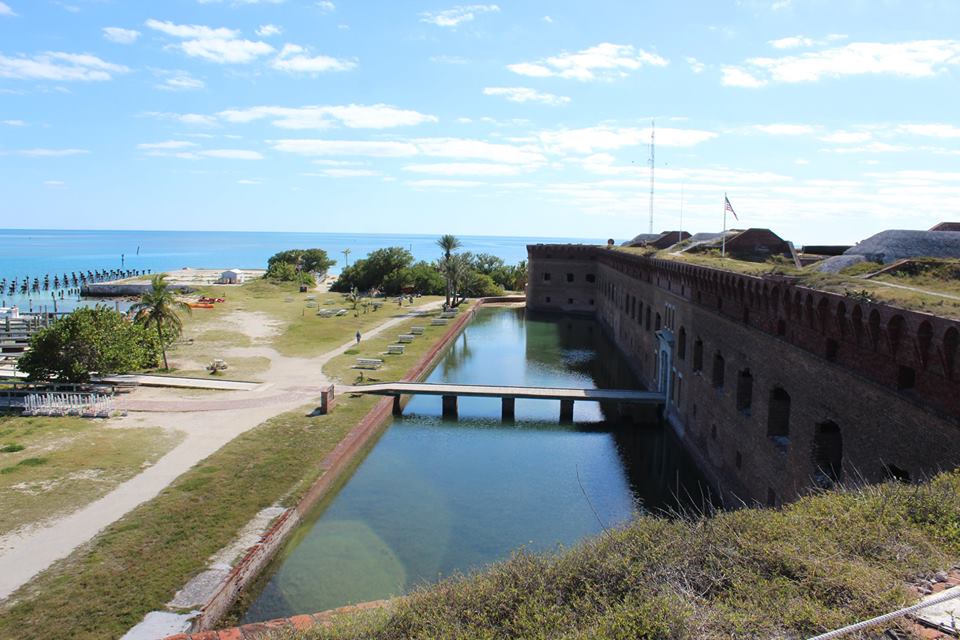
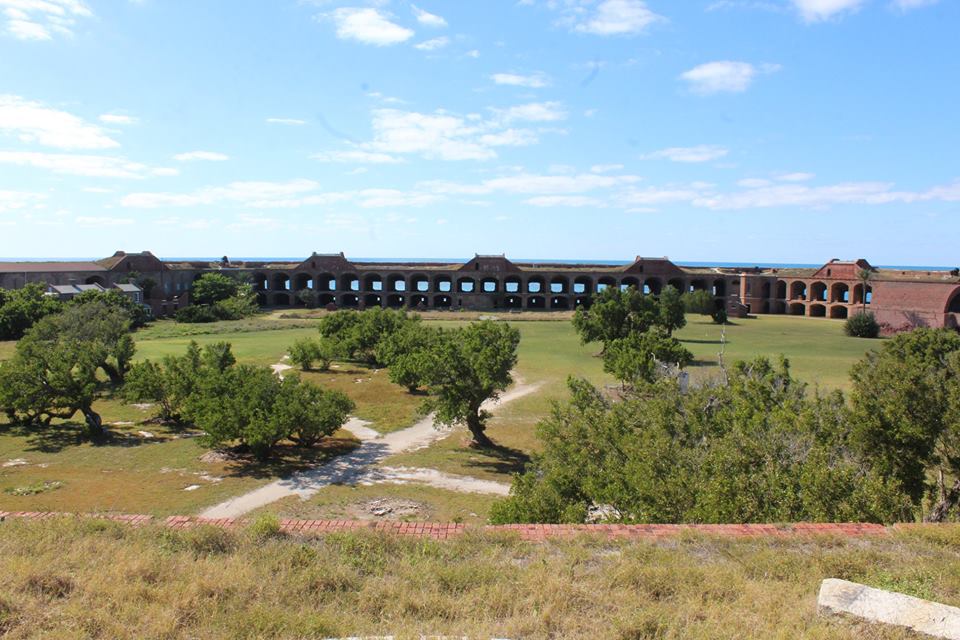
We all made our way down to the parade grounds and found a nighthawk sitting on a low tree branch in full sun. Antillean and Common Nighthawk are best distinguished by voice. They are nearly impossible to id by sight. However, this bird did have shorter wing than the tail and whitish tertials which tend to be seen in Antillean Nighthawk.
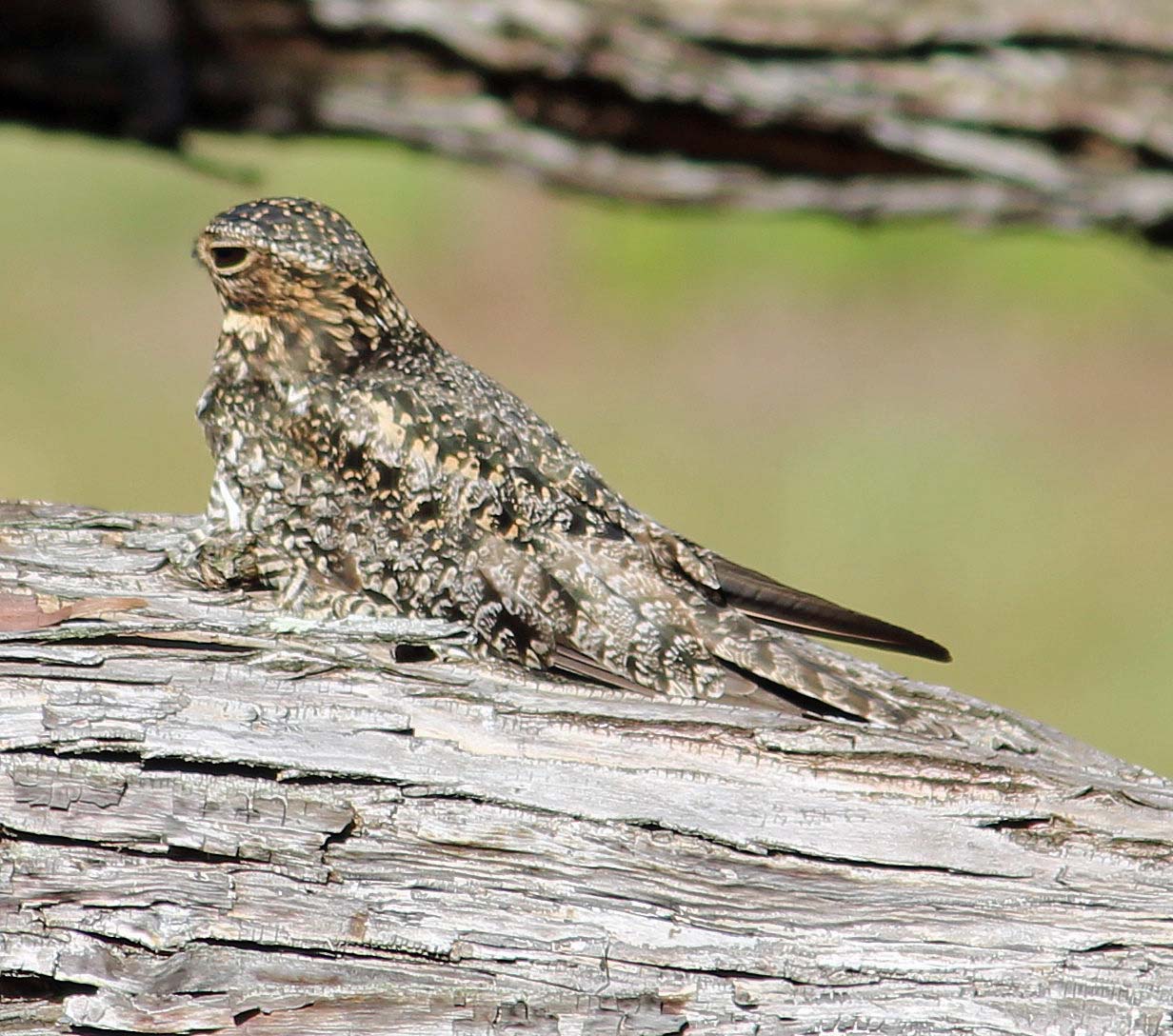
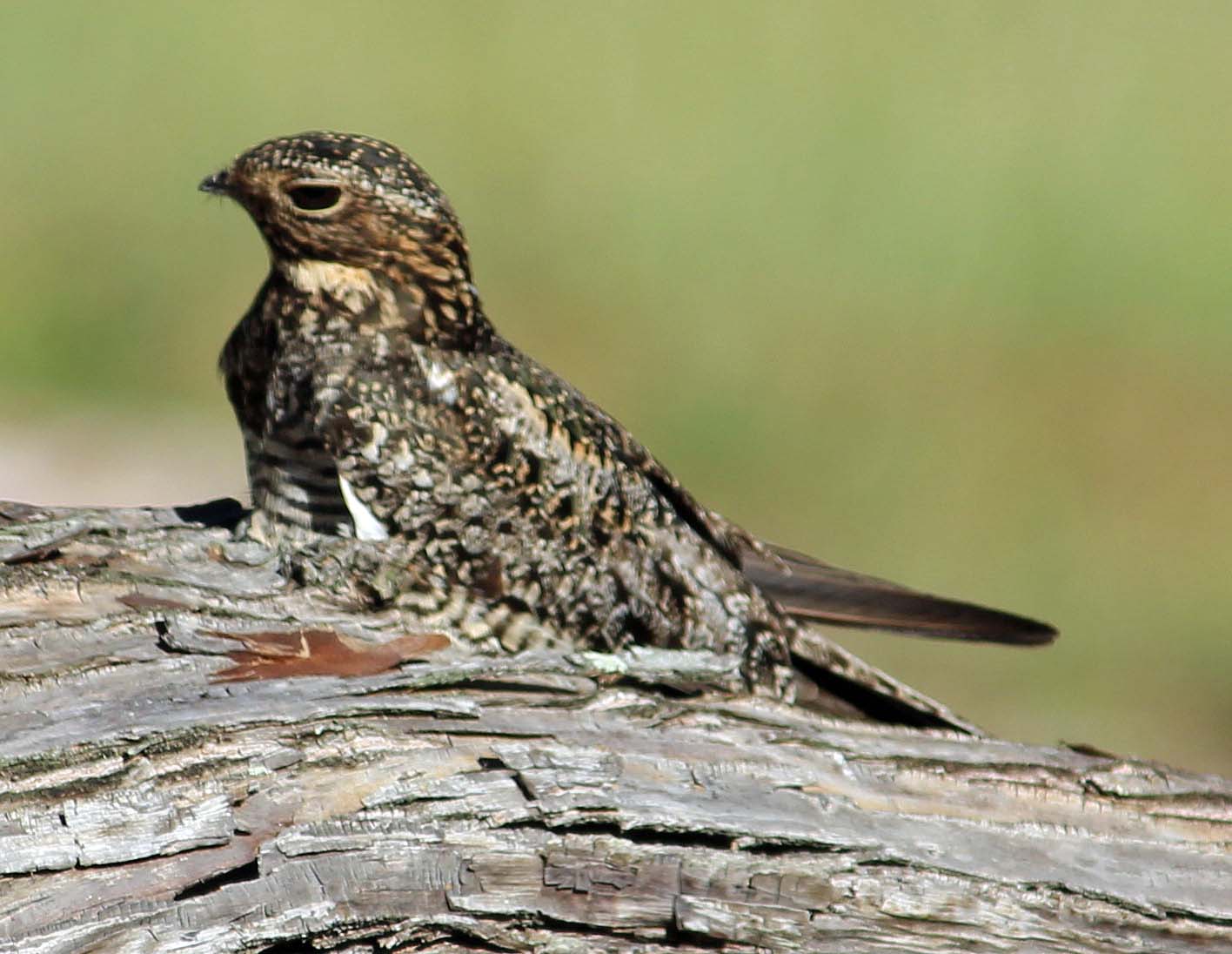
nighthawk
It was time to start the tours of the Magnificent Frigatebird colony by tender. We did it in two groups. Kelli, Mark and I stayed on the Island to give as much land time for Kelli who was now feeling fine. When it was our turn, we joined Adrian, Gary, and John with Captain Mark at the helm. I am in the front; Kelli and Mark are in the back. We slowly made our way just offshore in shallow water visiting Bush Key, then Long Key. Brown Noddy and Sooty Tern are flying all around us. Some of us got on a Sandwich Tern; seeing the yellow tipped bill briefly. We also added Lesser Yellowlegs.
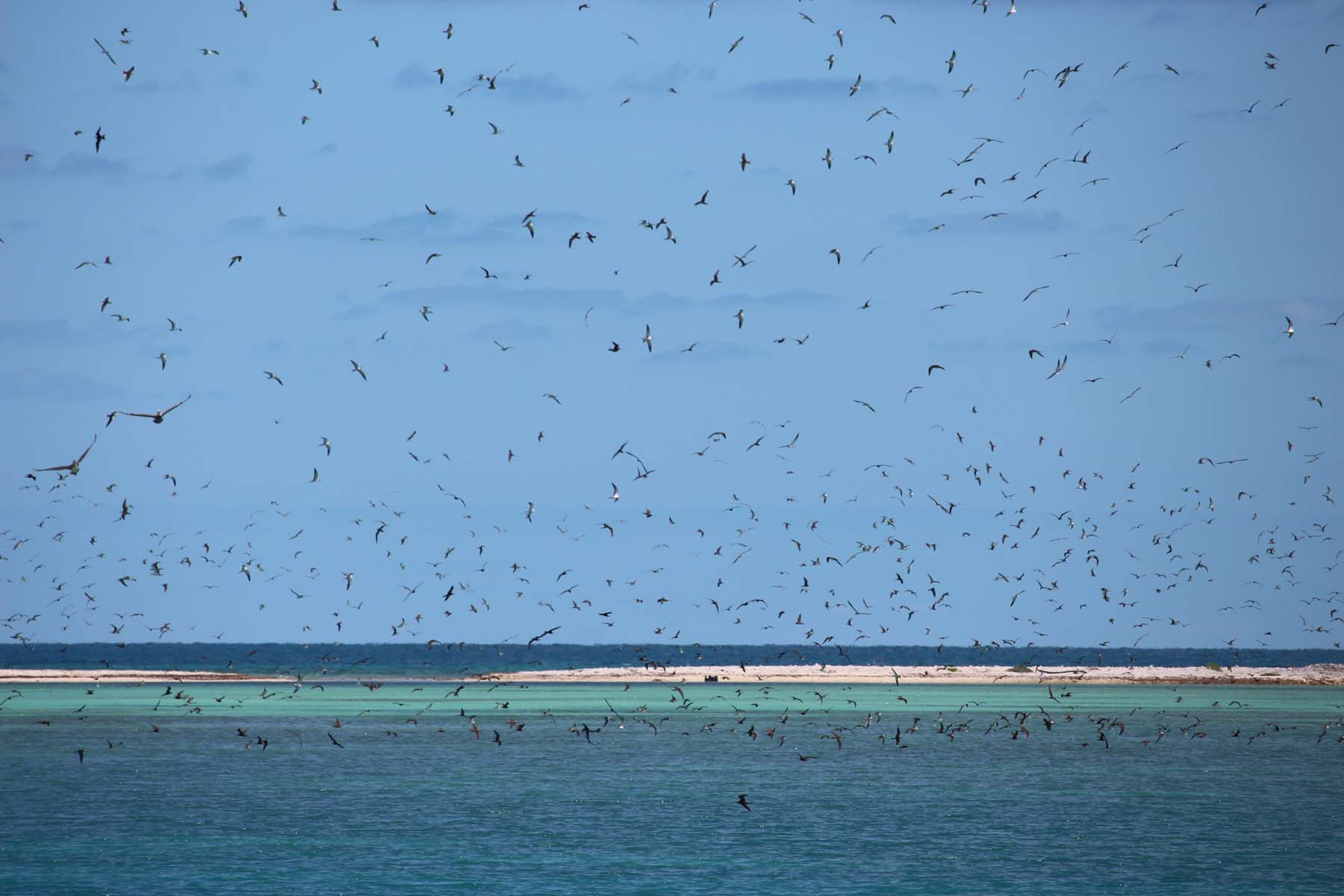
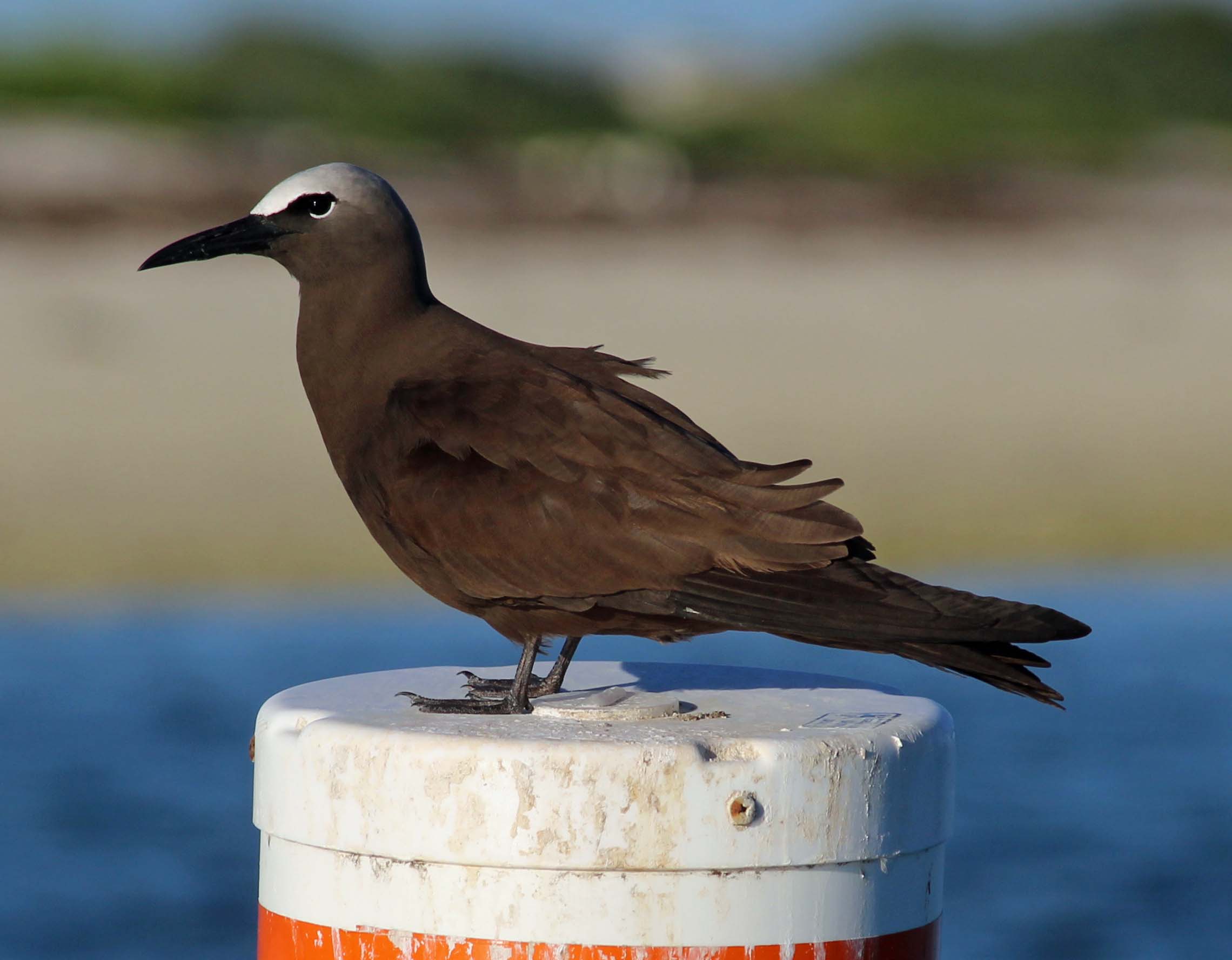
Brown Noddy
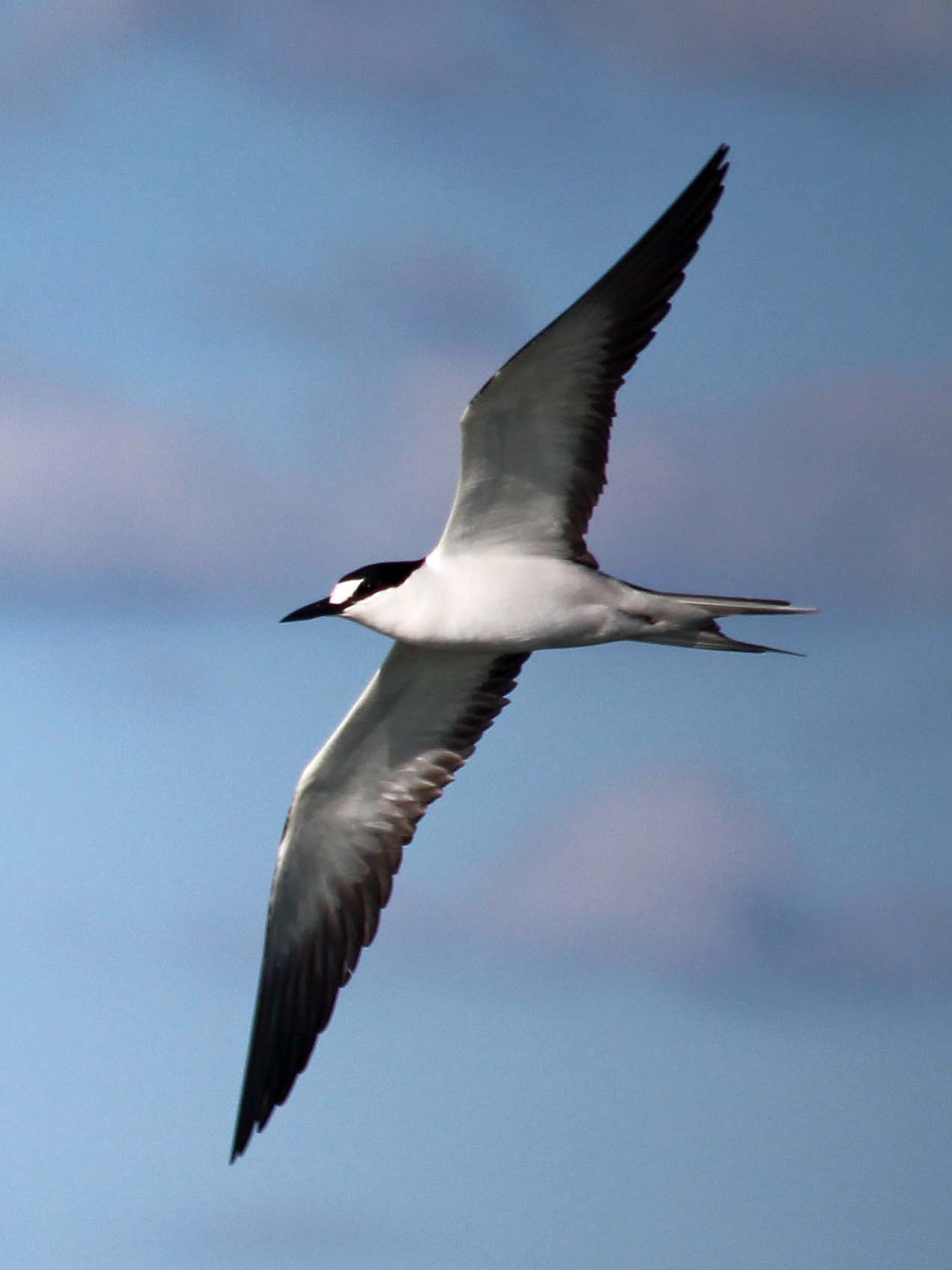
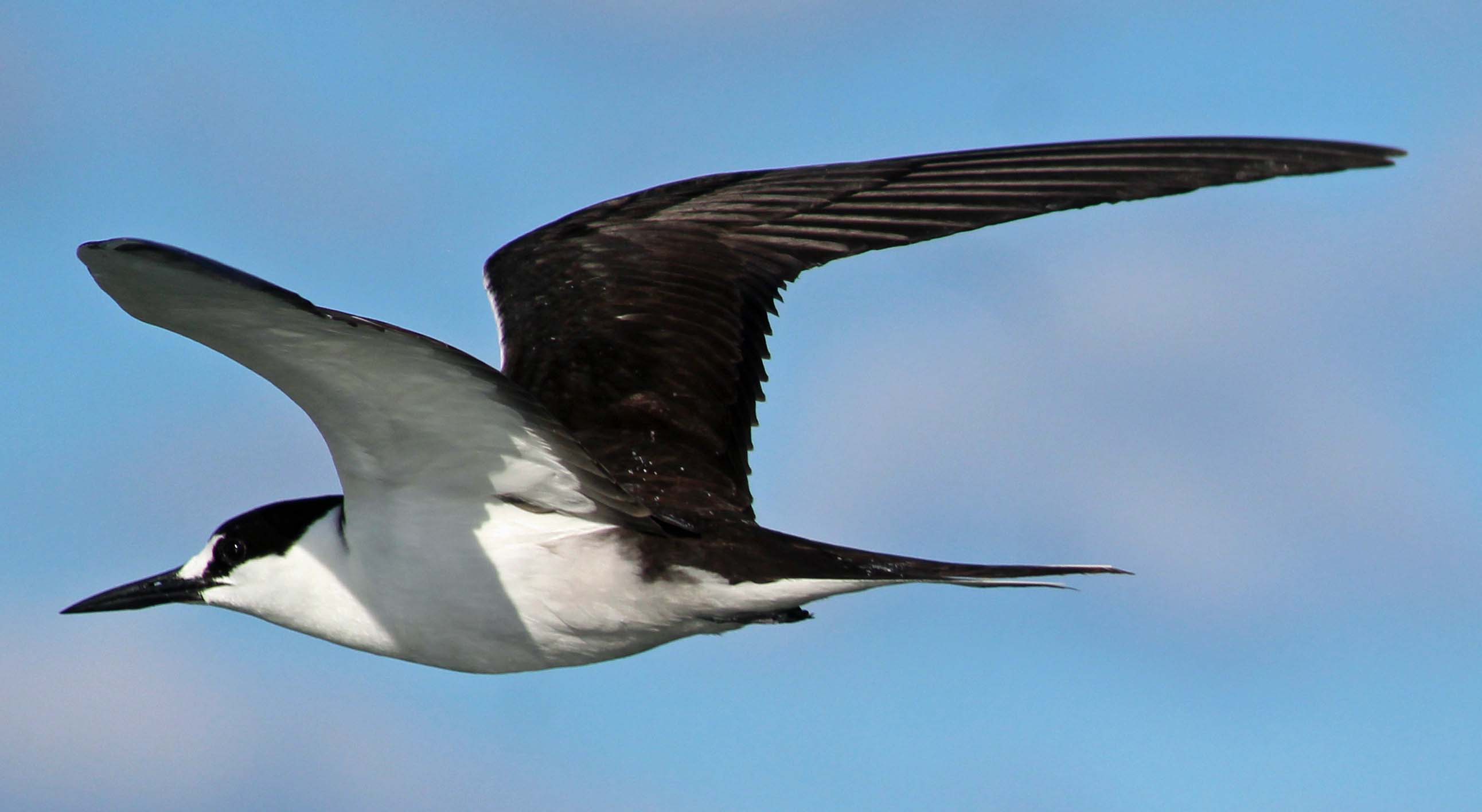
Sooty Tern
We had plenty of time to view the nesting Magnificent Frigatebirds. Male are all dark with a red throat patch that they inflate to attract a female. Females have a white throat and upper breast. We could hear the bill clapping of the males.
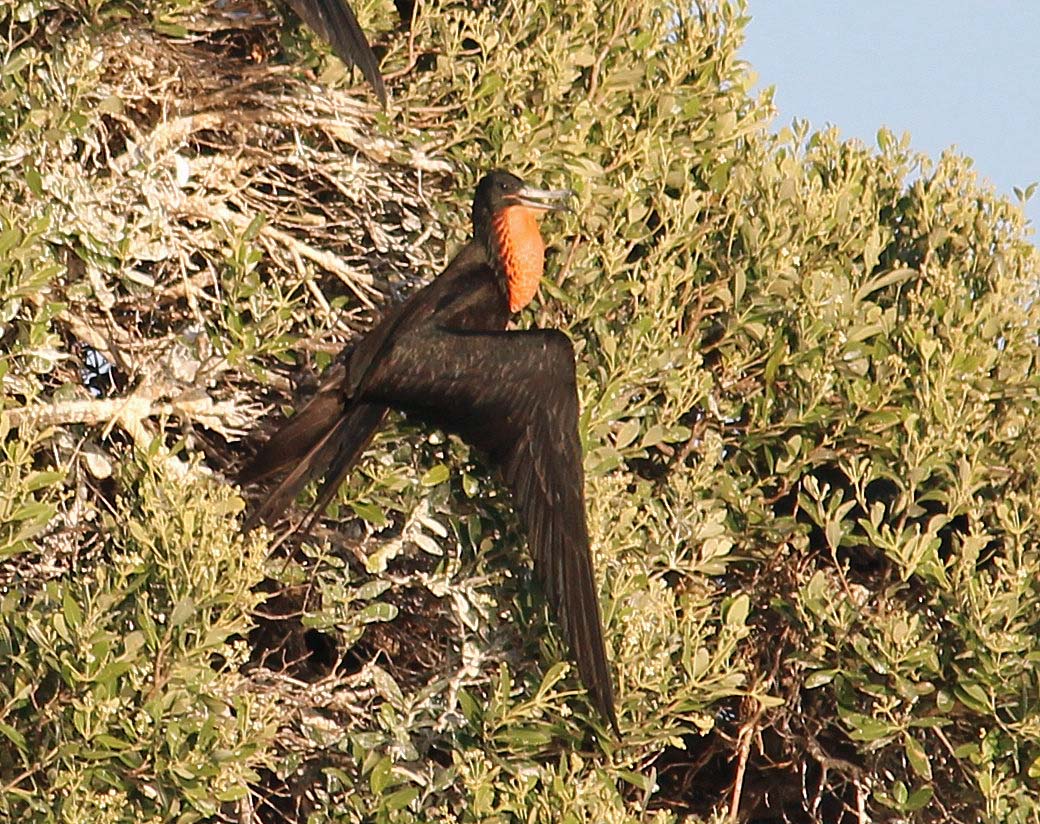
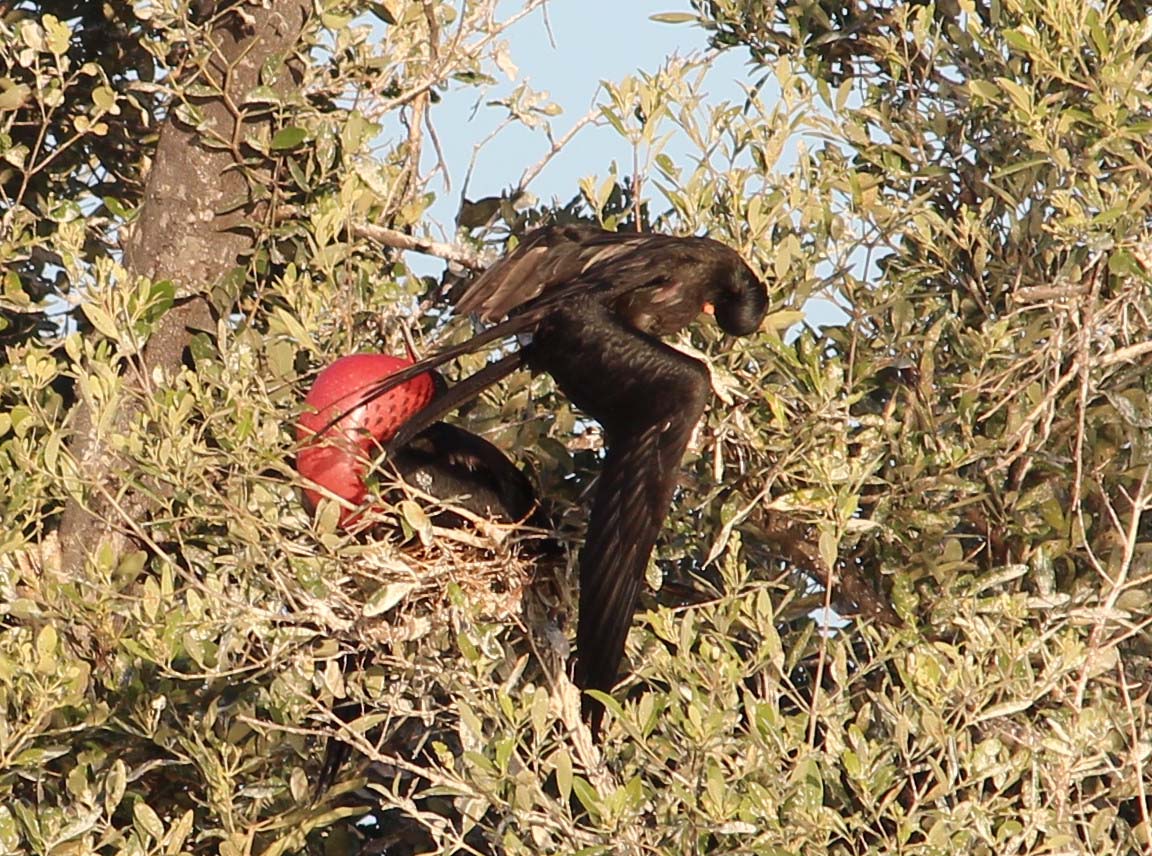
nesting Magnificent Frigatebirds
After satisfying views, we start to make our way back to the boat. We are in shallow water when someone spots a small 2-3inch fin sticking out of the water; a small shark was nearby. It approached us; John decides he might grab it. Then unexpectedly the small fin raises out of the water to about 16 inches. It was now next to the boat and it turns out to be an eight-foot Hammerhead Shark. It realizes we are next to it and gives a big slap of its tail. A huge explosion of water gets John soaked and everyone a little wet. What a cool encounter!
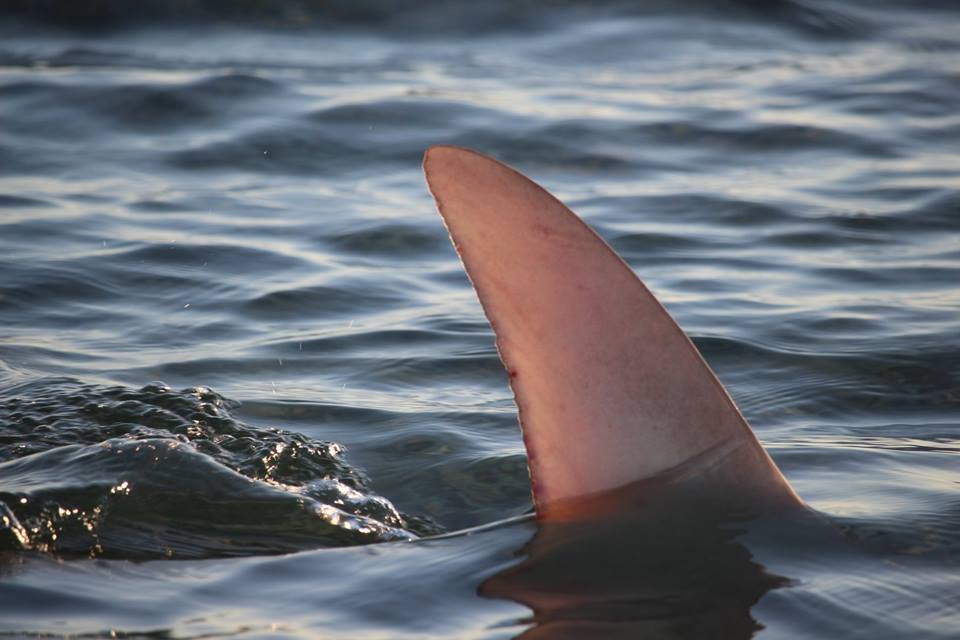
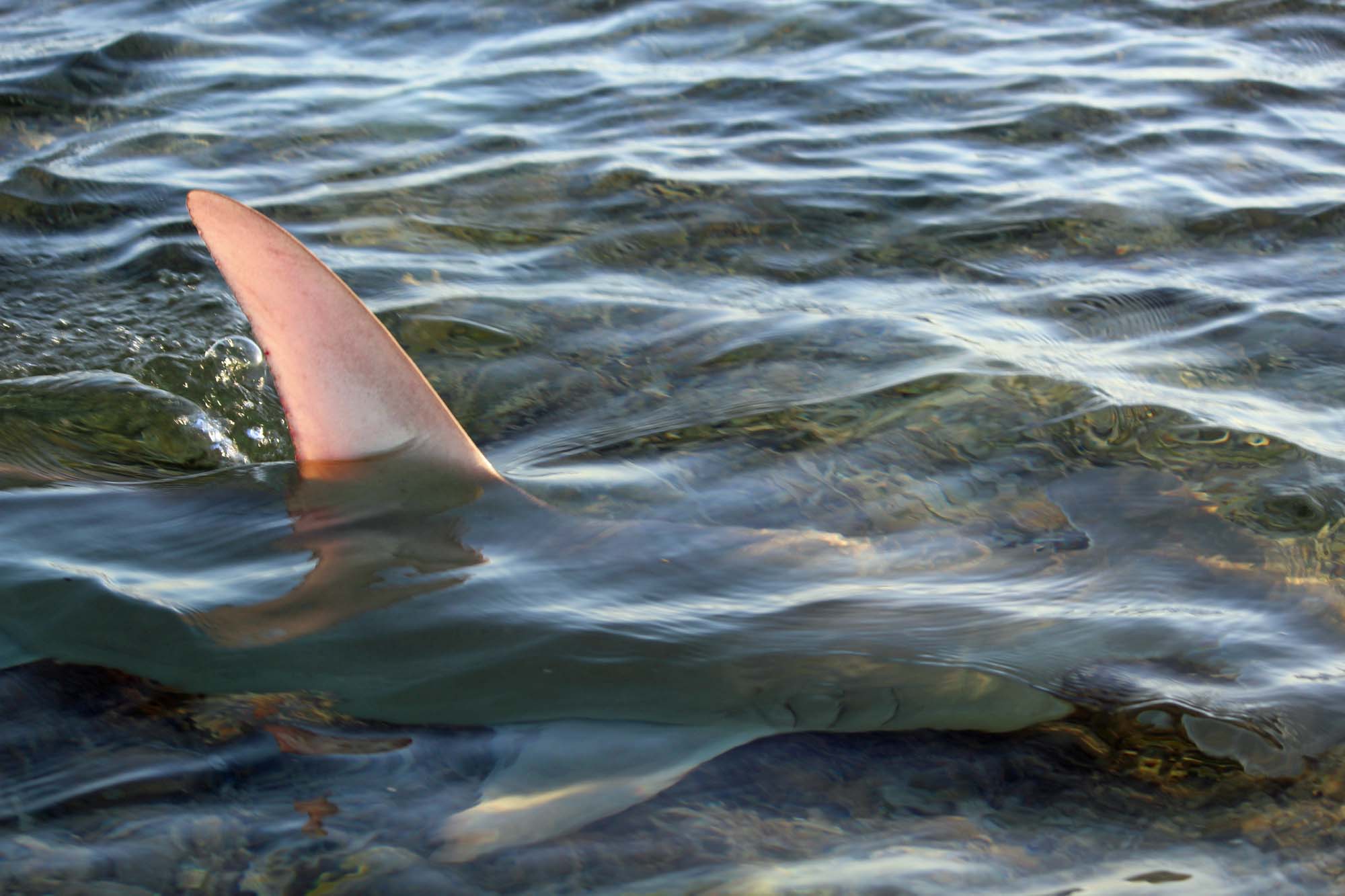
Hammerhead Shark
Back at the boat, Kelli was really hungry and feeling fine. We had a wonderful dinner! Kelli kept taking the seasick pills and was fine for the rest of the trip. We watched the sunset. At night, we did some stargazing. The above was filled with stars and we could see the Milky Way across the sky.
Tuesday,
April 23
The Plane Crash
We are sleeping well on the boat. Better than we imagined. Today we will bird the fort in the morning, return to the boat for lunch then back to the fort for more birding followed by a repeat of viewing the frigatebird colony by tender.
We had another great breakfast aboard the Makai. Kelli was feeling fine. Someone yelled that a Sora had landed on the ship. We all ran out. It was a bit dazed, exhausted and hunched near the front of the boat. We had great looks and were worried about the bird. But as we were getting ready for the day, the bird perked up, walked around the deck a bit and took off for dry land.
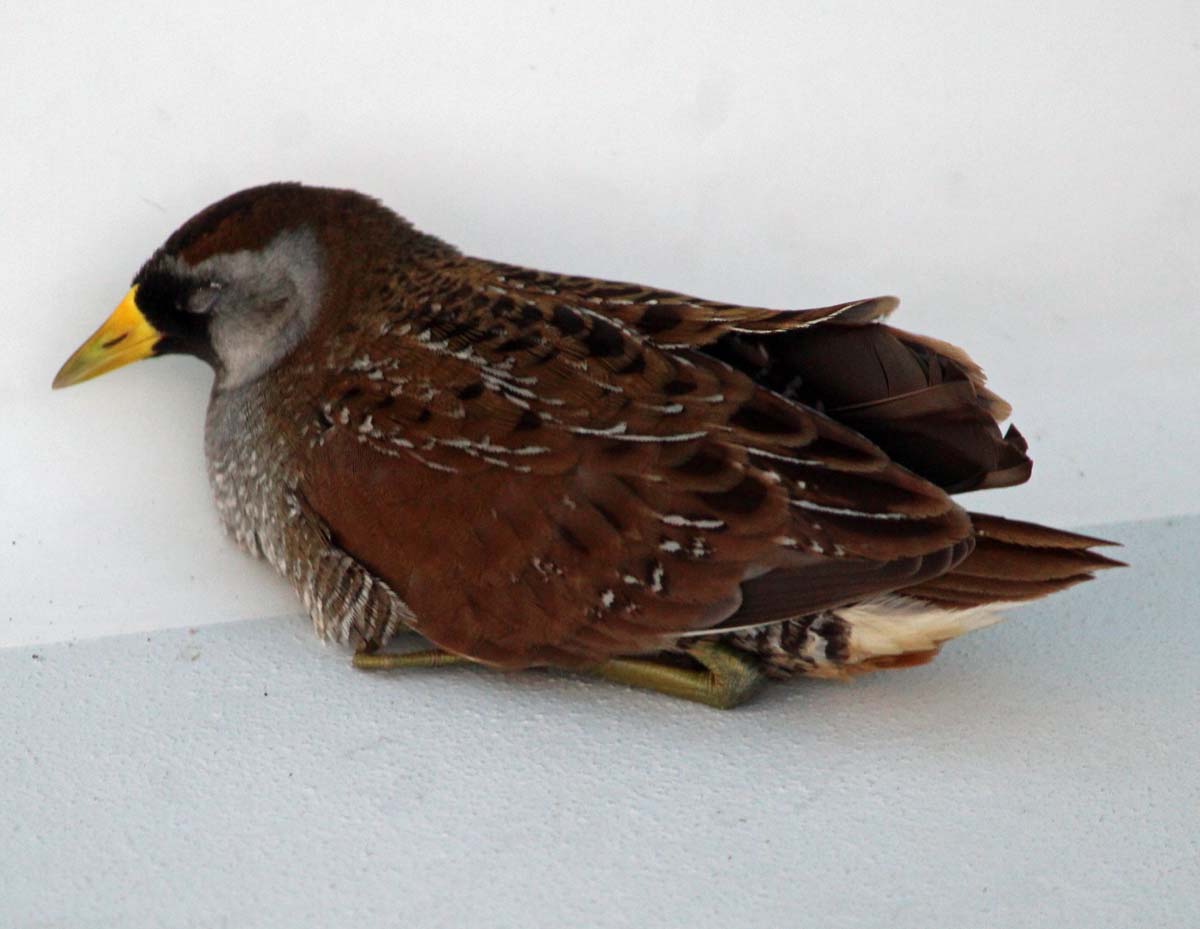
Sora
Once on Garden Key, a Peregrine Falcon landed on the tower. Using a spotting scope, we could see three dead terns near the falcon that were once meals. Inside the fort, we found another falcon, a Merlin. Falcons hunt other birds and the Tortugas are a great food source. It is easy hunting with plenty of birds exhausted from migration.
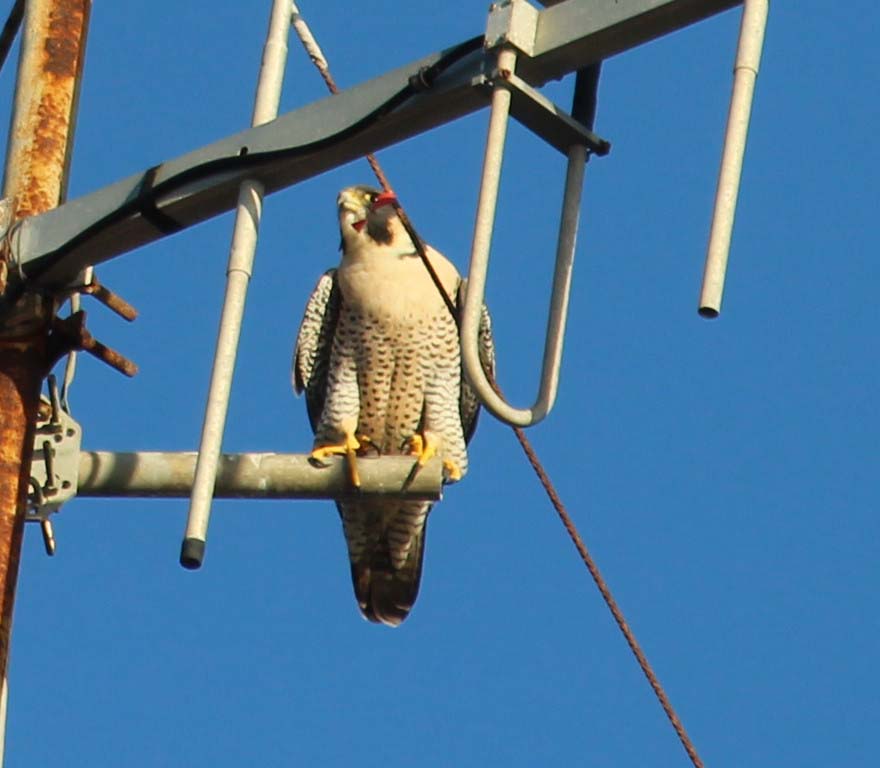
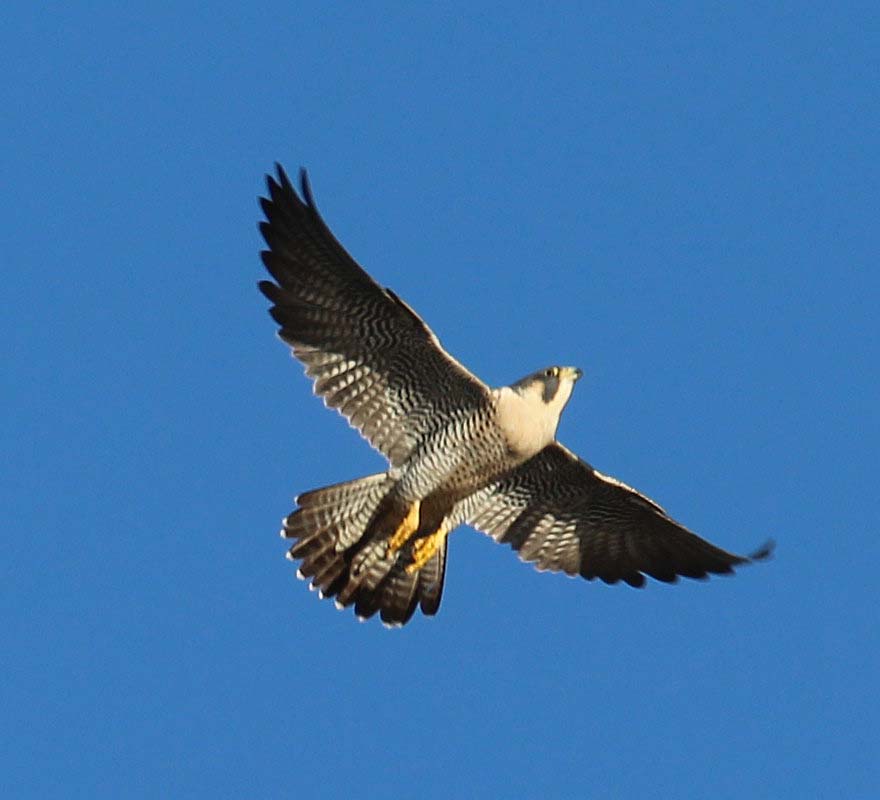
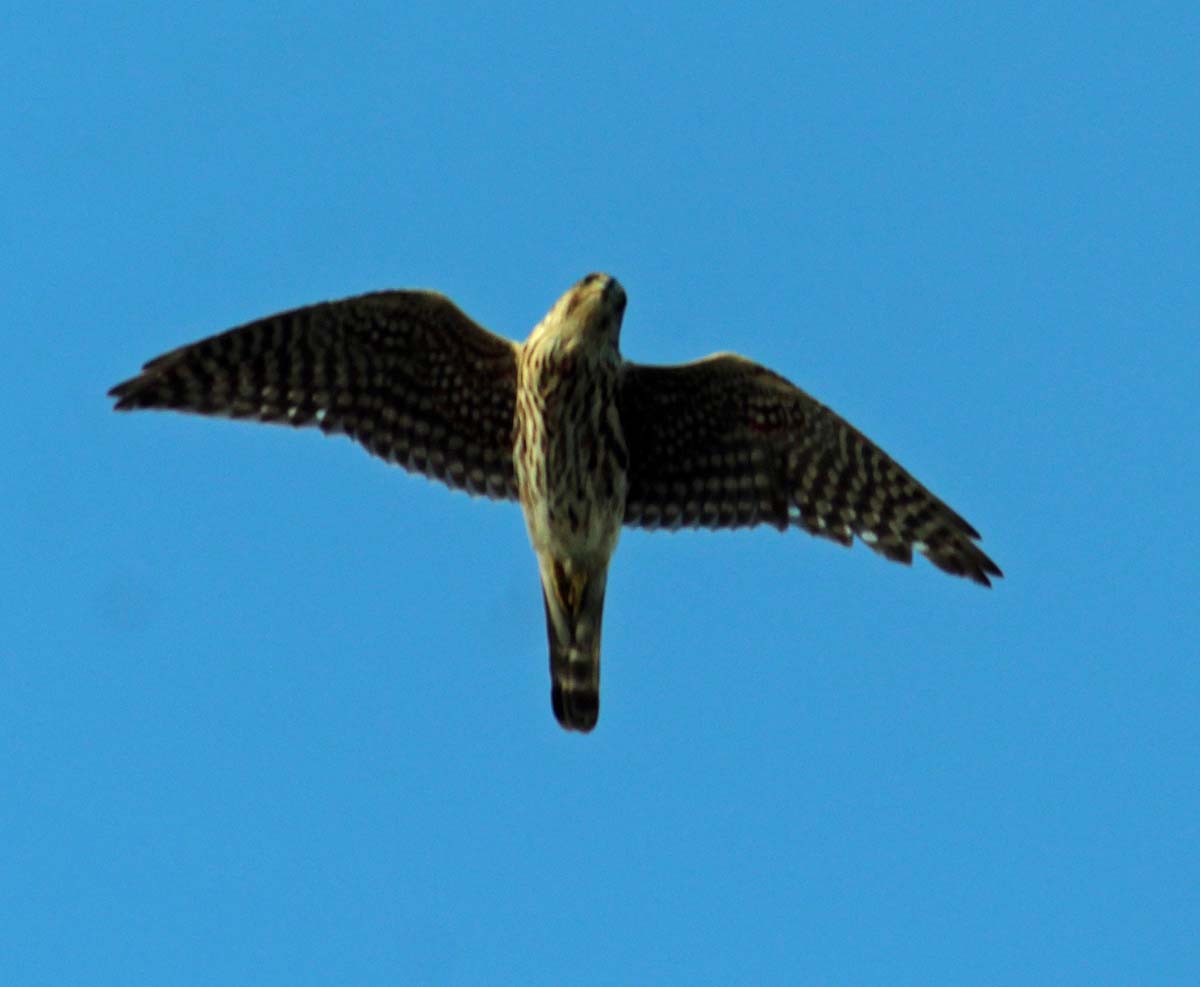
Peregrine Falcon and Merlin
We saw many of the same birds as yesterday. A female Summer Tanager perched for some great pictures.
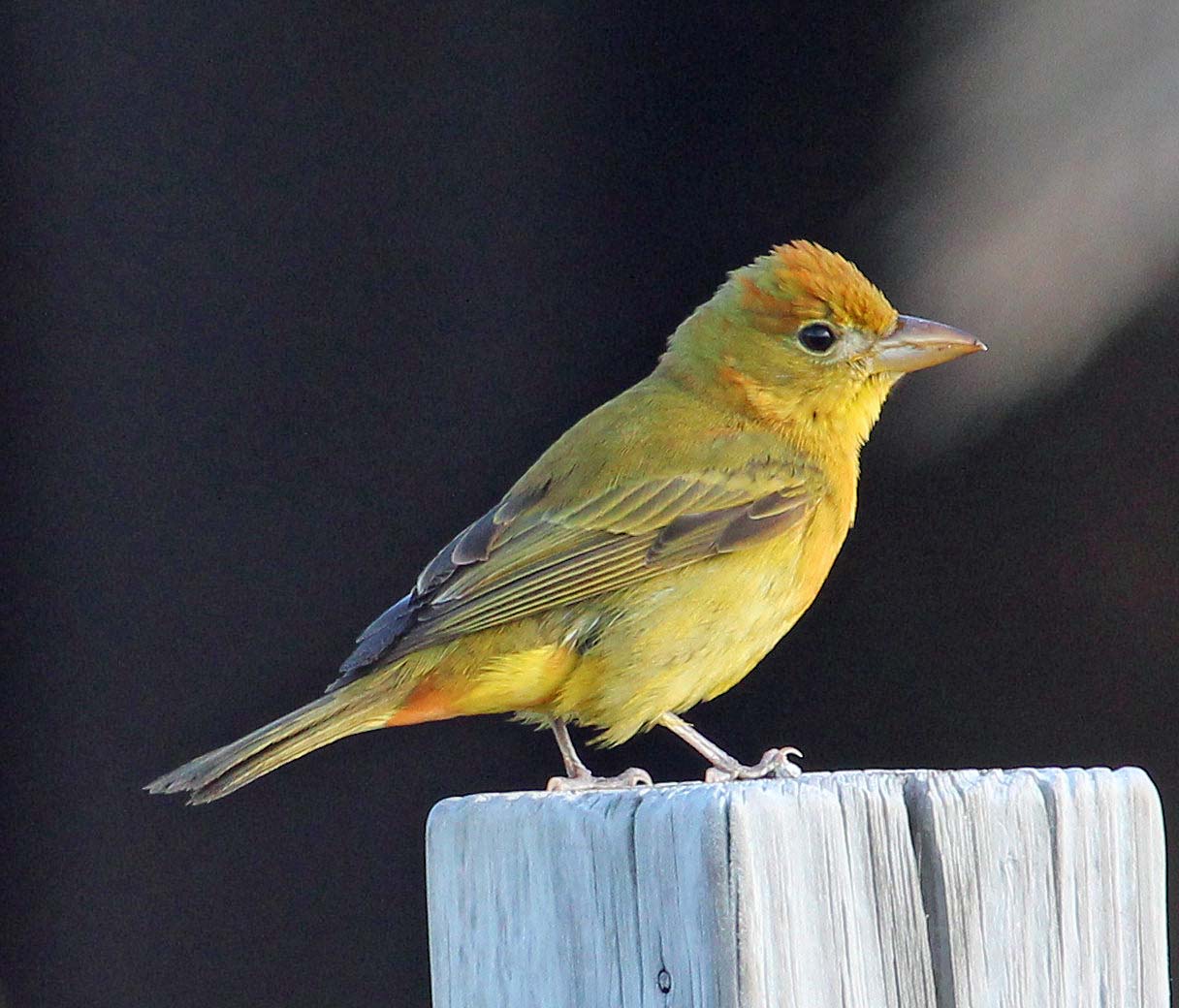
female Summer Tanager
On the small beach, we found a couple of Ghost Crabs and a Florida Prickly Cockle shell. In the grass, we found a Hermit Crab.
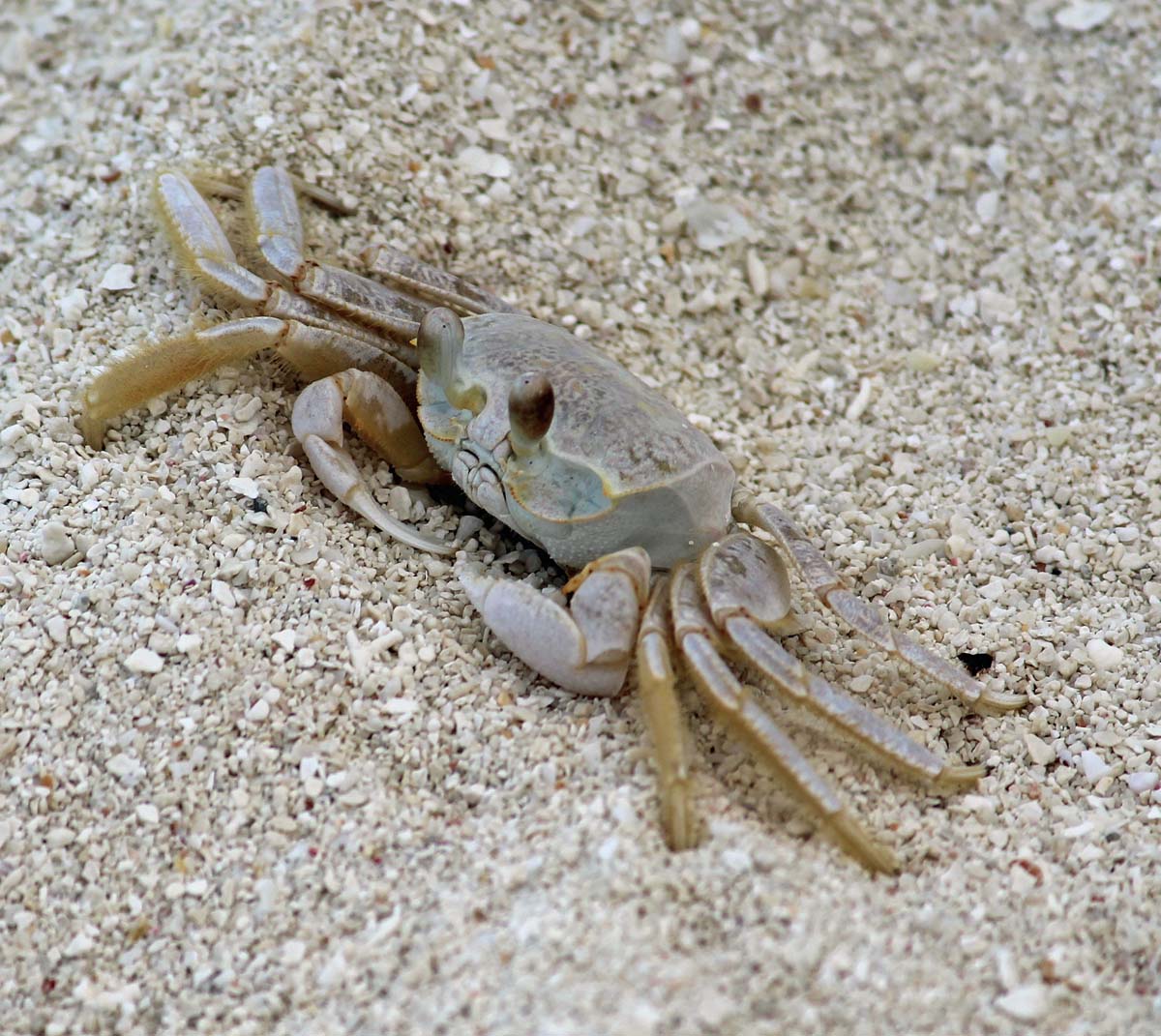
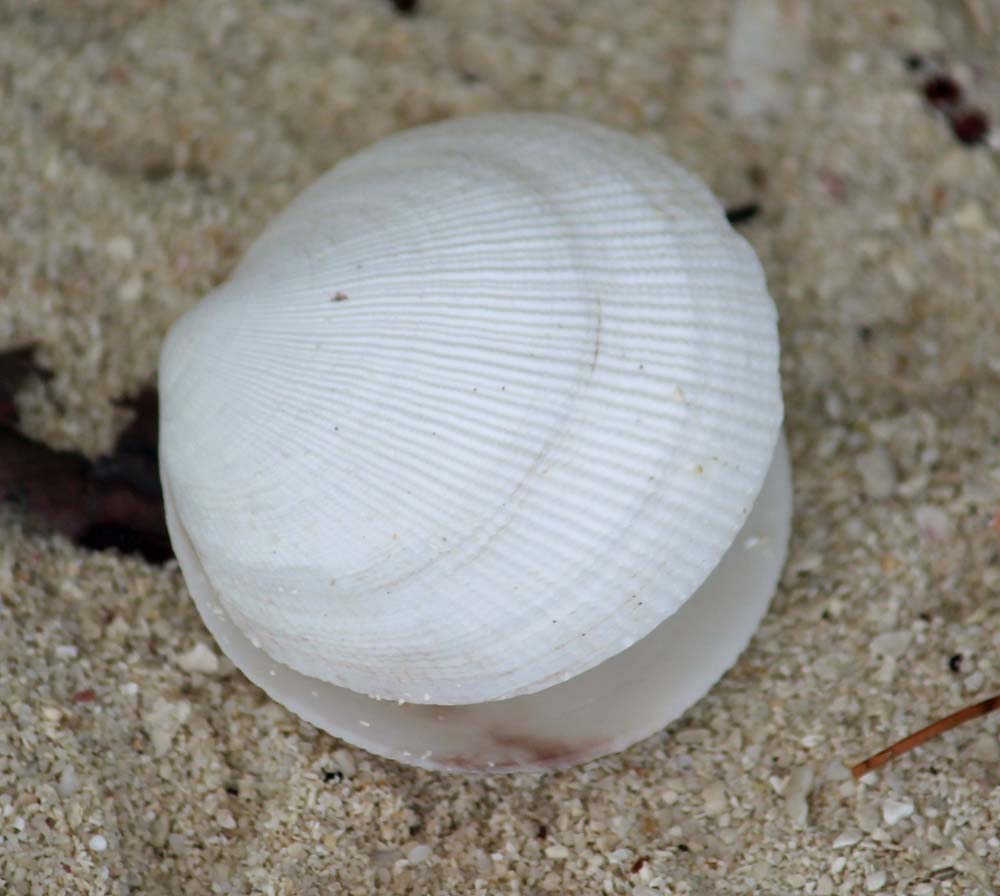
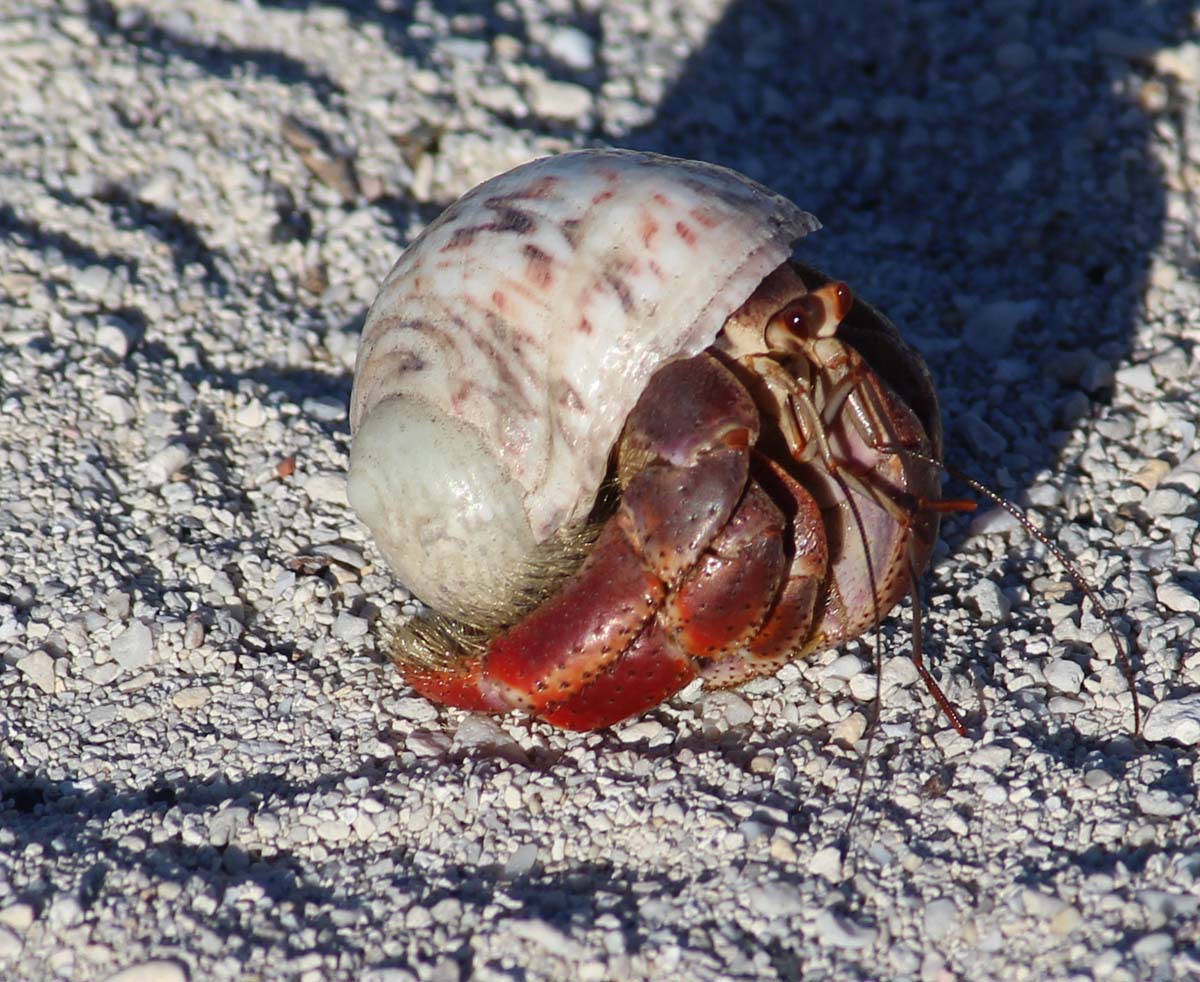
Ghost
Crab, Florida Prickly
Cockle shell and Hermit Crab.
We toured Fort Jefferson to learn more of the history.
Fort Jefferson is a six-sided building constructed of 16 million handmade red bricks. Construction began on Garden Key in December 1846 and finished in 1861. The Civil War broke out in 1861 and the fort could not be finished with bricks from the south. Bricks came in from the north and the color difference can be seen towards the top.
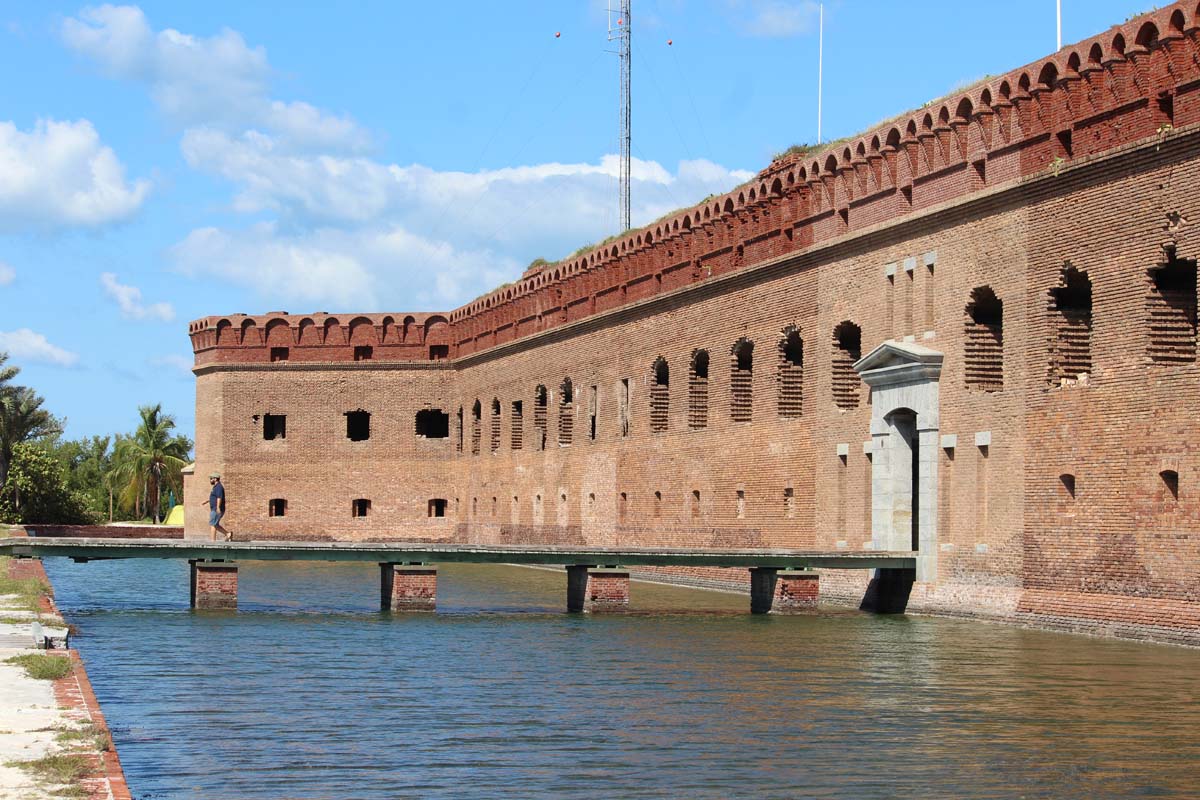
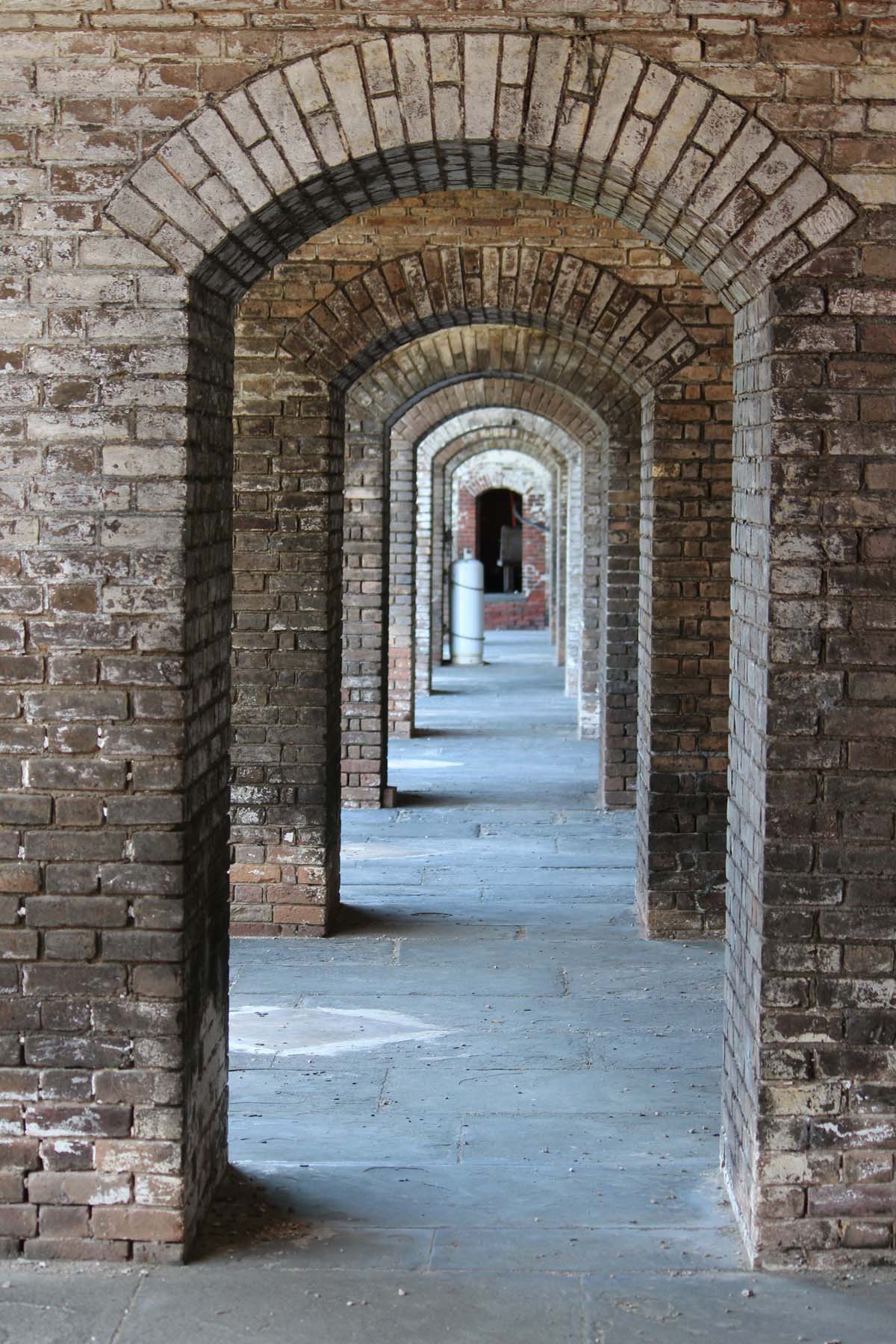
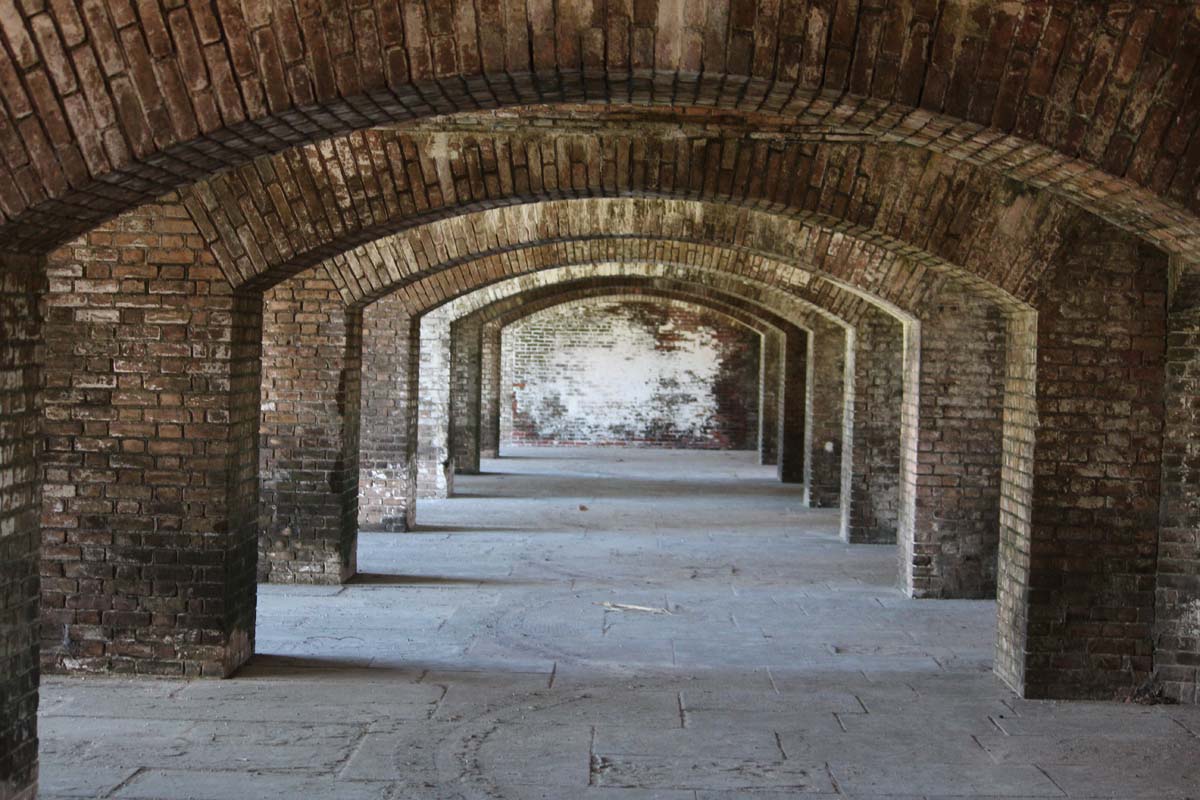
To supply fresh water, an innovative system of cisterns was built into the walls of the fort. Sand-filled columns were placed at regular intervals in the inner walls. The columns were intended to filter rainwater from the rooftop for long-term storage in a series of underground chambers. However, they used salt water in the cement for bricks. The cisterns became permeable to salt water, making the water unfit for drinking. Only the rainwater runoff stored under the parade ground was fresh for drinking and is still used today.
The fort was not very stable. Whenever they fired the big cannons, the fort would shake and bricks would come crumbling down. The fort was used to hold civil war prisoner. In 1865 it received its most famous prisoner; Doctor Samuel Mudd. Mudd was the doctor that set John Wilkes Booth broken leg and was convicted of conspiracy in the assassination of President Abraham Lincoln.
Mudd helped provide medical care during a yellow fever epidemic at the fort in 1867. Mudd was pardoned by President Andrew Johnson and released.
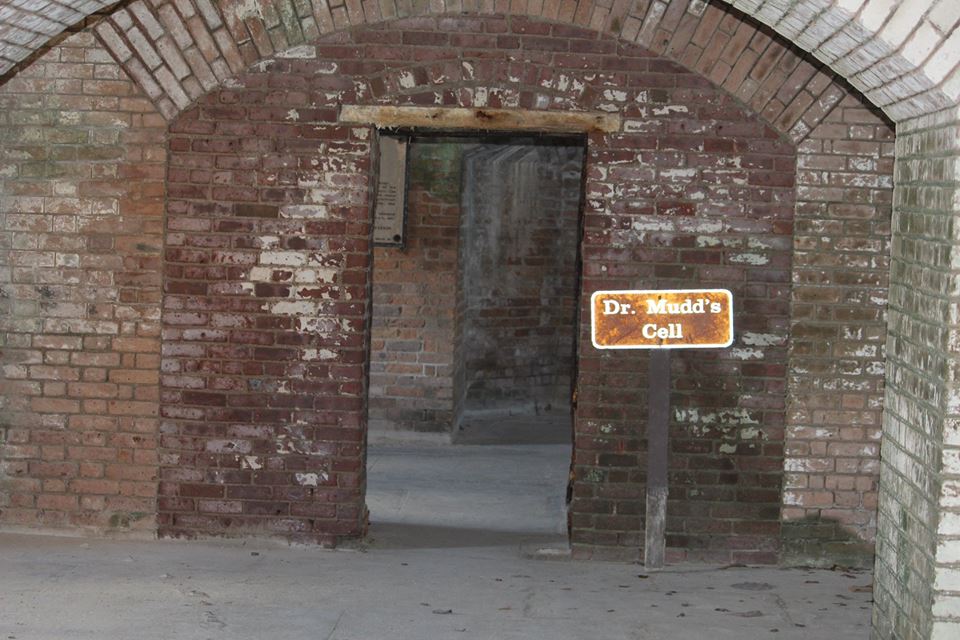
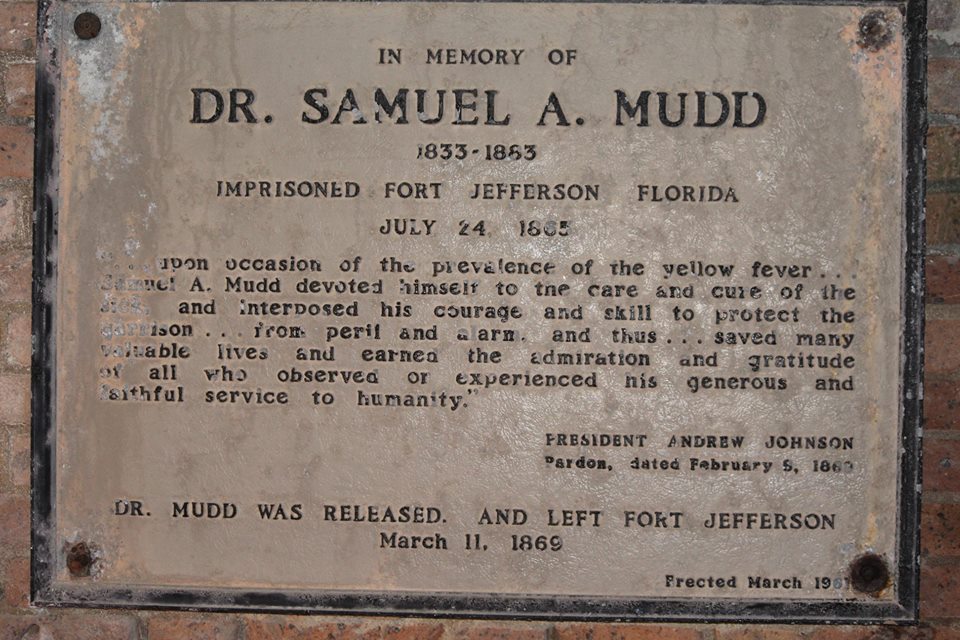
By 1888, the military usefulness of Fort Jefferson had waned, and the cost of maintaining the fort due to the effects of frequent hurricanes and the corrosive and debilitating tropical climate could no longer be justified.
President Franklin D. Roosevelt visited the area by ship, and designated the area as Fort Jefferson National Monument in 1935.
Many Cuban refugees landed on the island. We saw one of their makeshift boats, complete with a car engine to drive the propellers.
We gathered outside the fort and took a walk on the moat wall to look for sea life in the water. We saw more Sergeant Majors, Gray Snappers and added upside-down jellyfish, Queen Angelfish and Creole Wrasse. We also had a Belted Kingfisher.
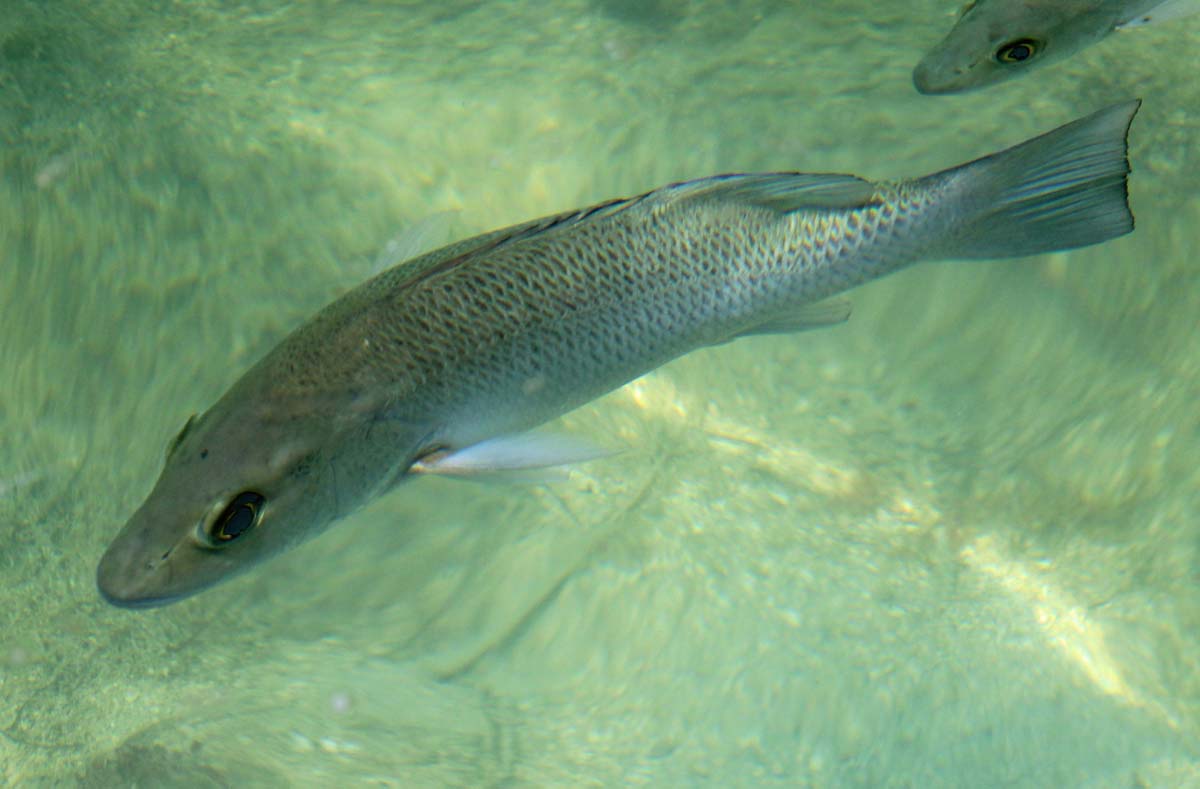
Gray Snapper
We made our way to the docks to get on the tender to have lunch on the Makai. Captain Mark said some girls up in the fort saw a plane crash in the water. We couldn’t see anything out there so we thought they just saw a seaplane land and did not know that was normal. We took the tender back to our boat. Back at the boat, Captain Joe asked us to hurry up and get on board. There really was a plane crash in the water. The captain saw it as well. The plane tumbled over and over a couple of times. There were people in the water and we had to go with our boat to pick them up. But before we could weigh anchor, another boat had picked them up. We could see some of the plane sticking out of the water. It disappeared later. We did learn that all four passengers and the pilot survived.

Plane Crash!
During lunch on board, we could see a helicopter patrolling the water out there. It then came in and flew over us and landed on Garden Key. Another boat passed us and talked to our captain. They were also nearby and were asked to pick up debris in the water, including a pocketbook.
After lunch we returned to the key and added species such as Rose-breasted Grosbeak, Northern Harrier, Bobolink, Dickcissel, Ruby-throated Hummingbird, female Scarlet Tanager, Golden-winged, Blue-winged, Black-throated Blue, Palm, and Prairie Warbler.
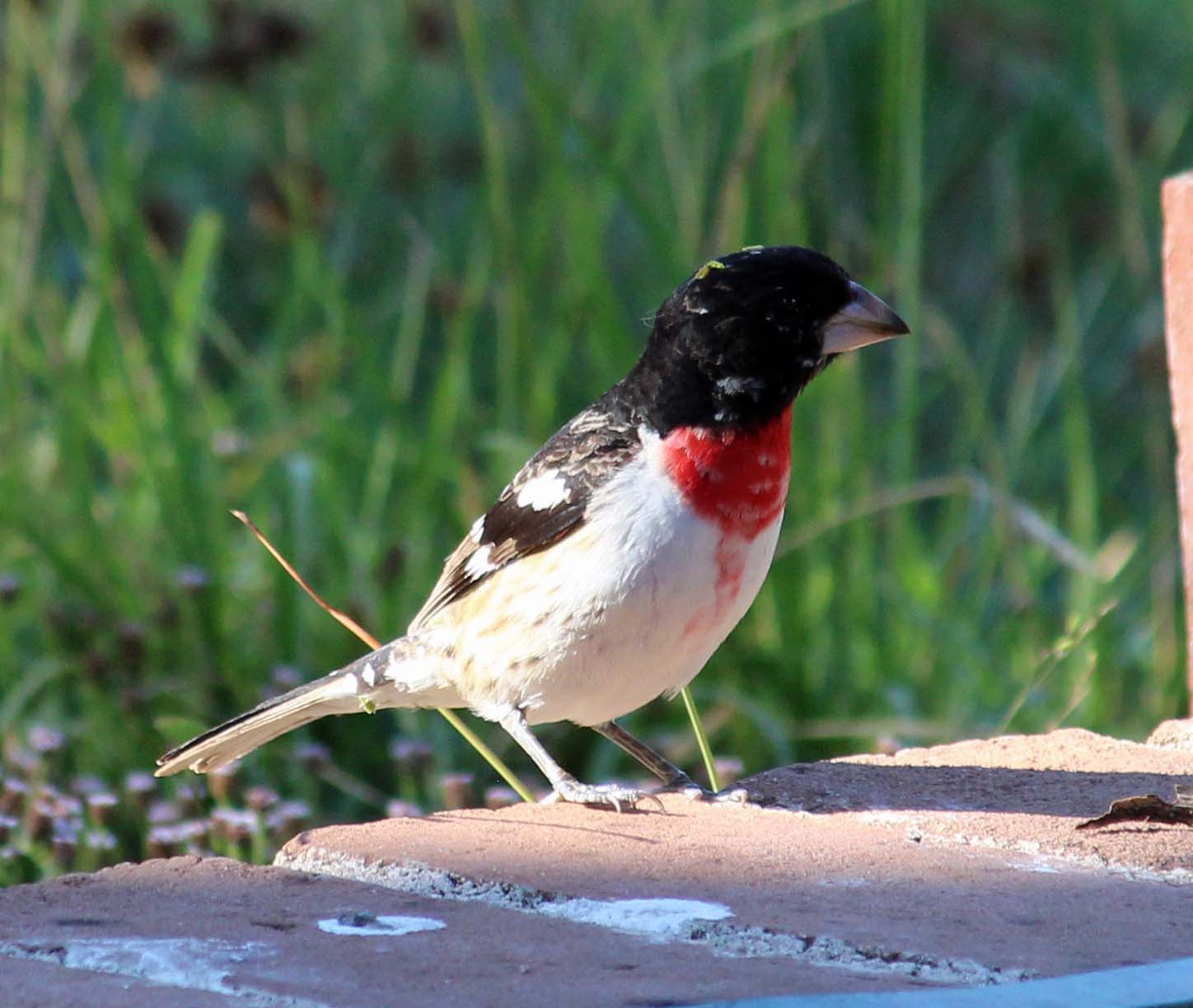
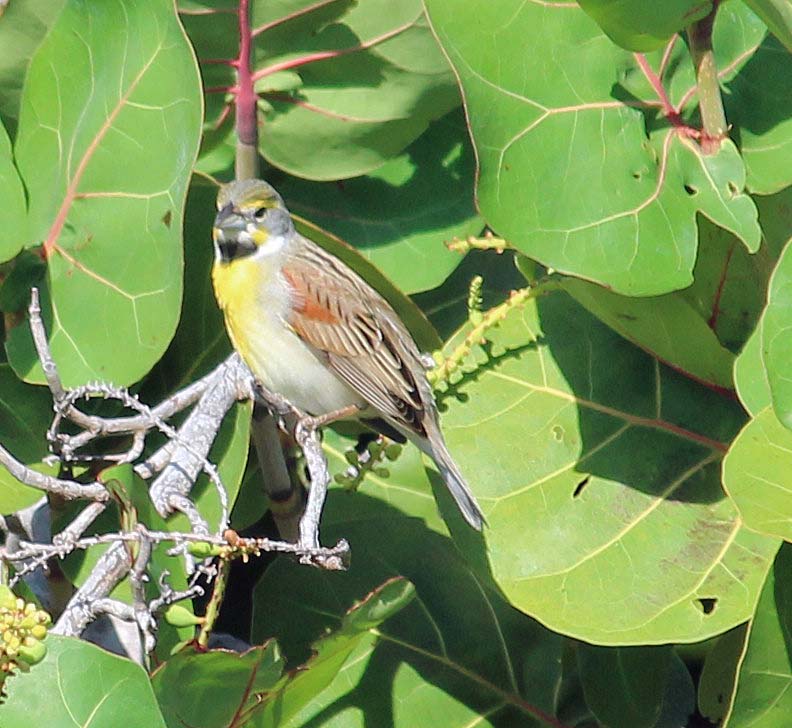
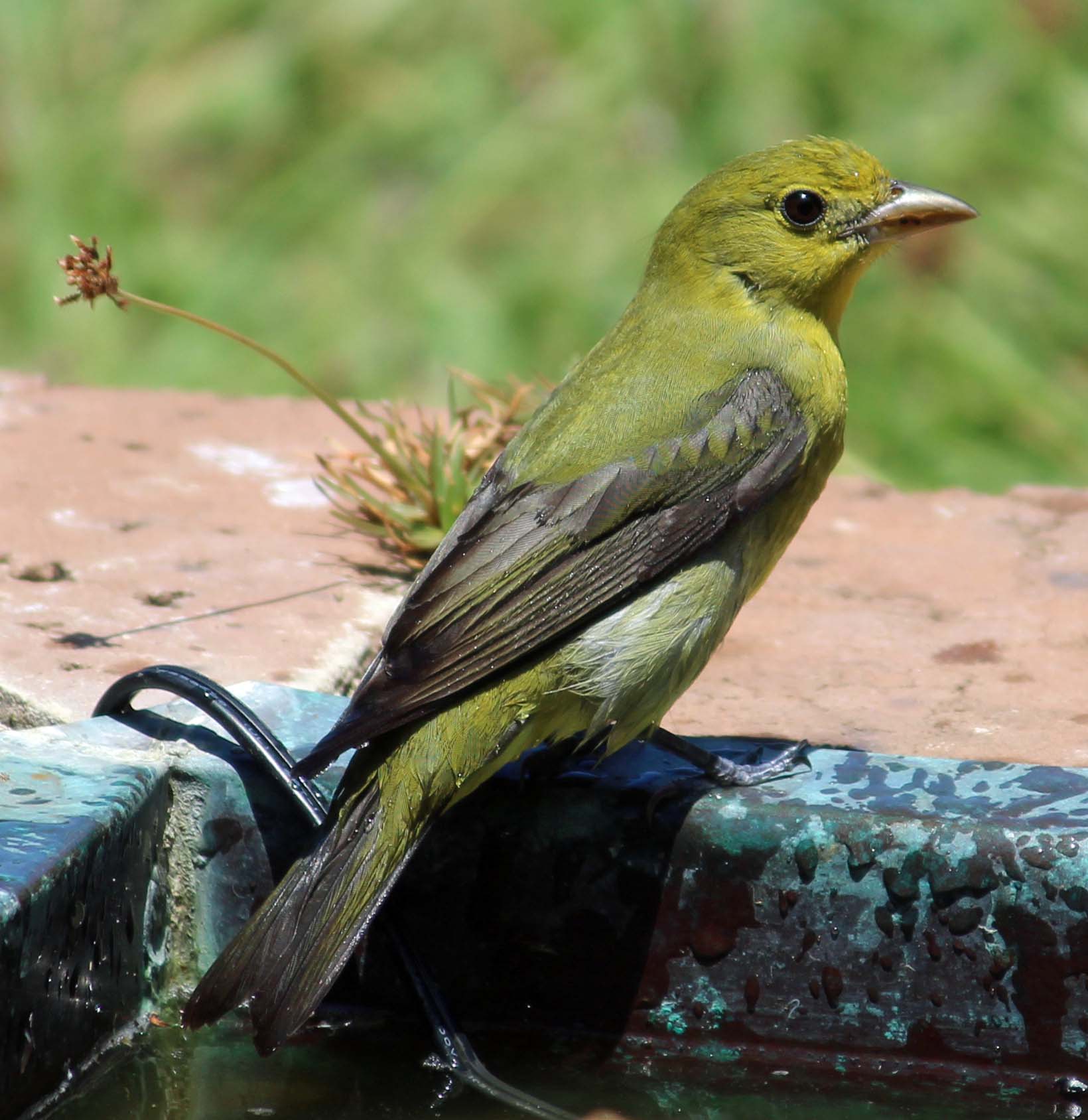
Rose-breasted Grosbeak,
Dickcissel, female Scarlet Tanager
A Black-whiskered Vireo fed above us and visited the fountain for some great looks.
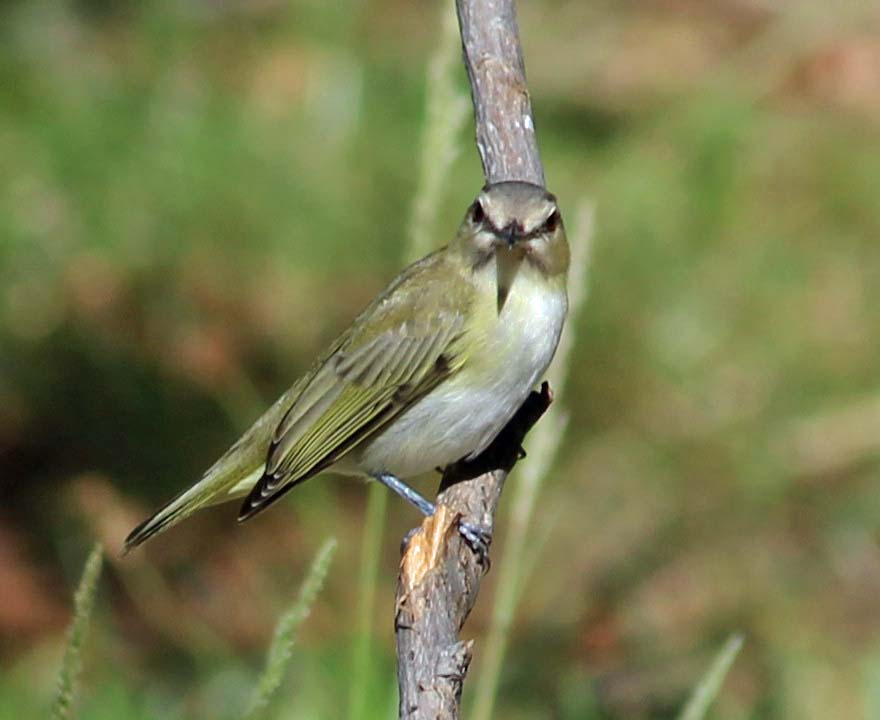
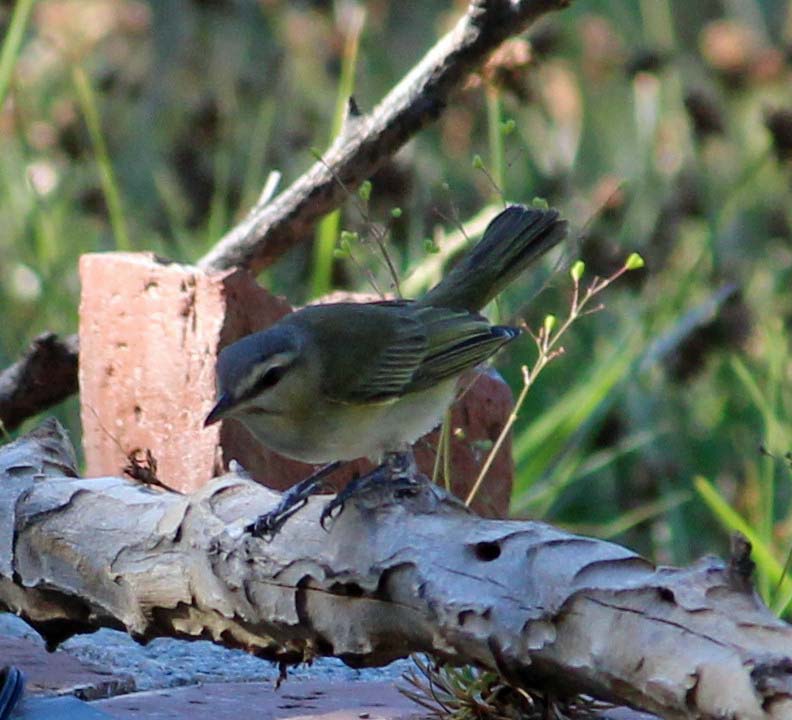
Black-wiskered Vireo
Soon after the bird of the trip was found; a Bahama Mockingbird. We got up from the bench. I grabbed my binoculars but not my camera. The bird flew by me and perched. It was right above Kelli but she could not see it. I had a great close view but no camera. Kelli had to circle around and it flew up into the tree. We could get partial views of it through the leaves. As its name implies, the bird is only a rare stray into Florida. This was lifer # 604 for me.
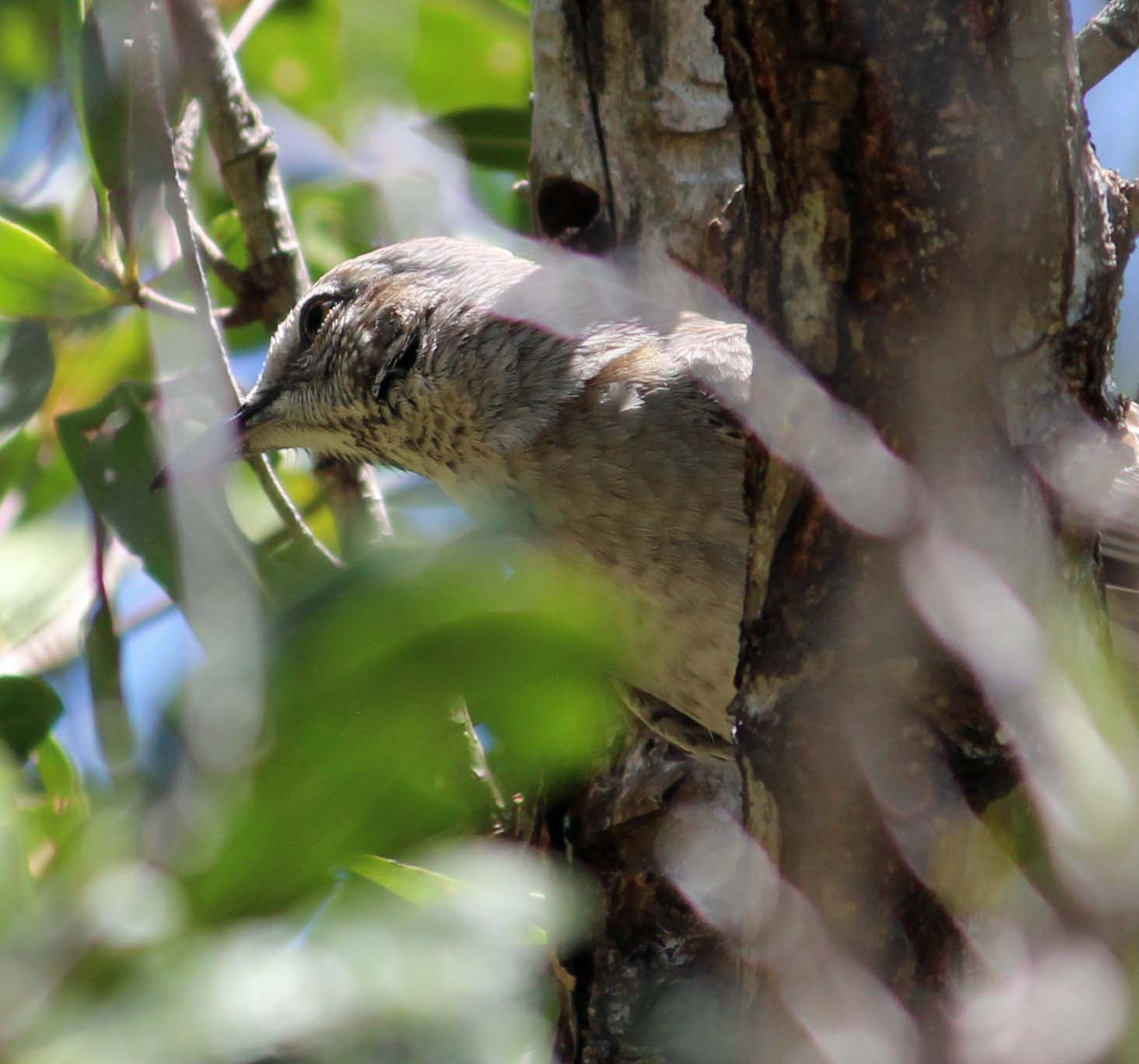
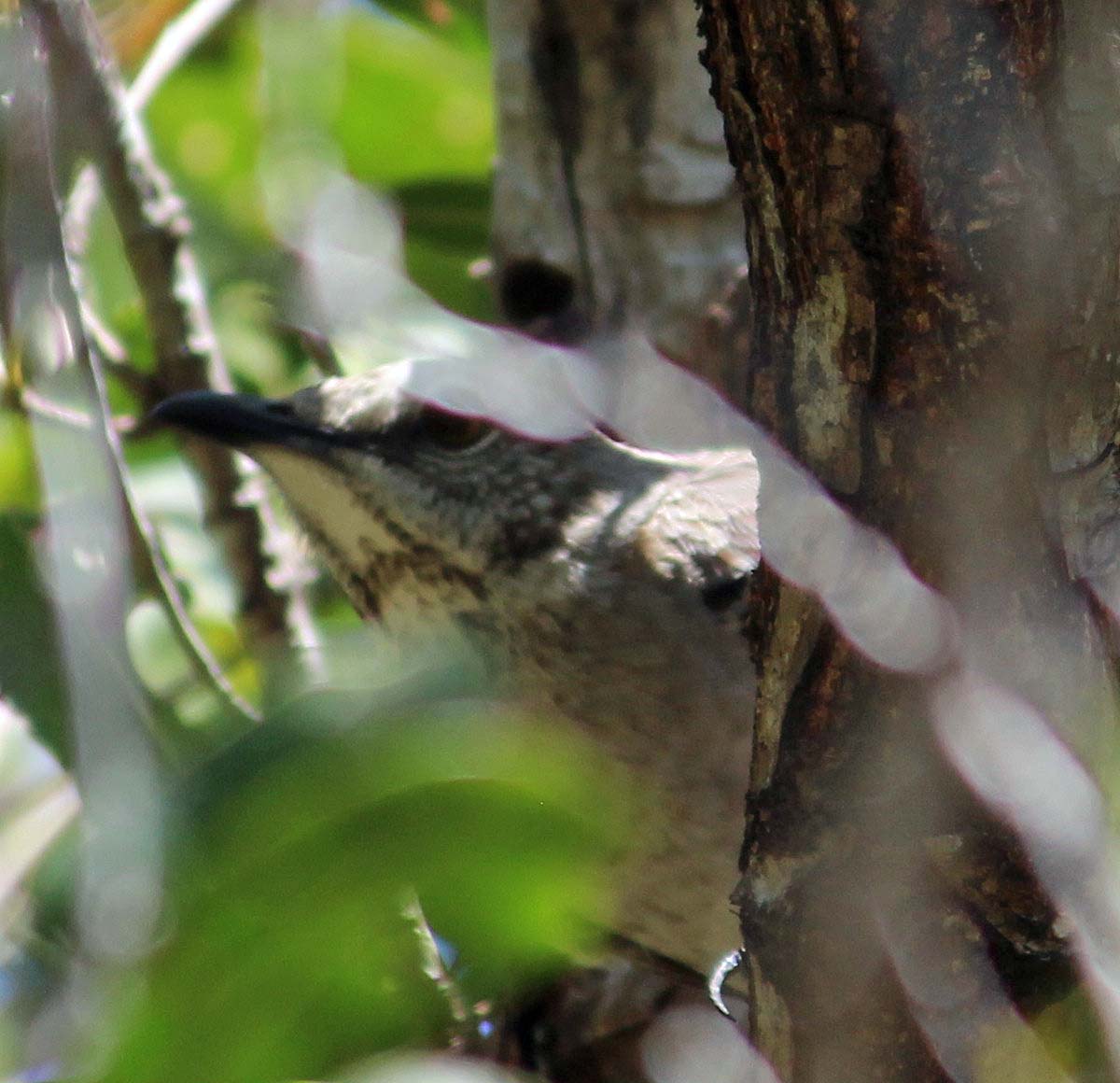
Bahama Mockingbird
Later on we were awarded with five Indigo Buntings at the water fountain and finally a male Painted Bunting appeared.
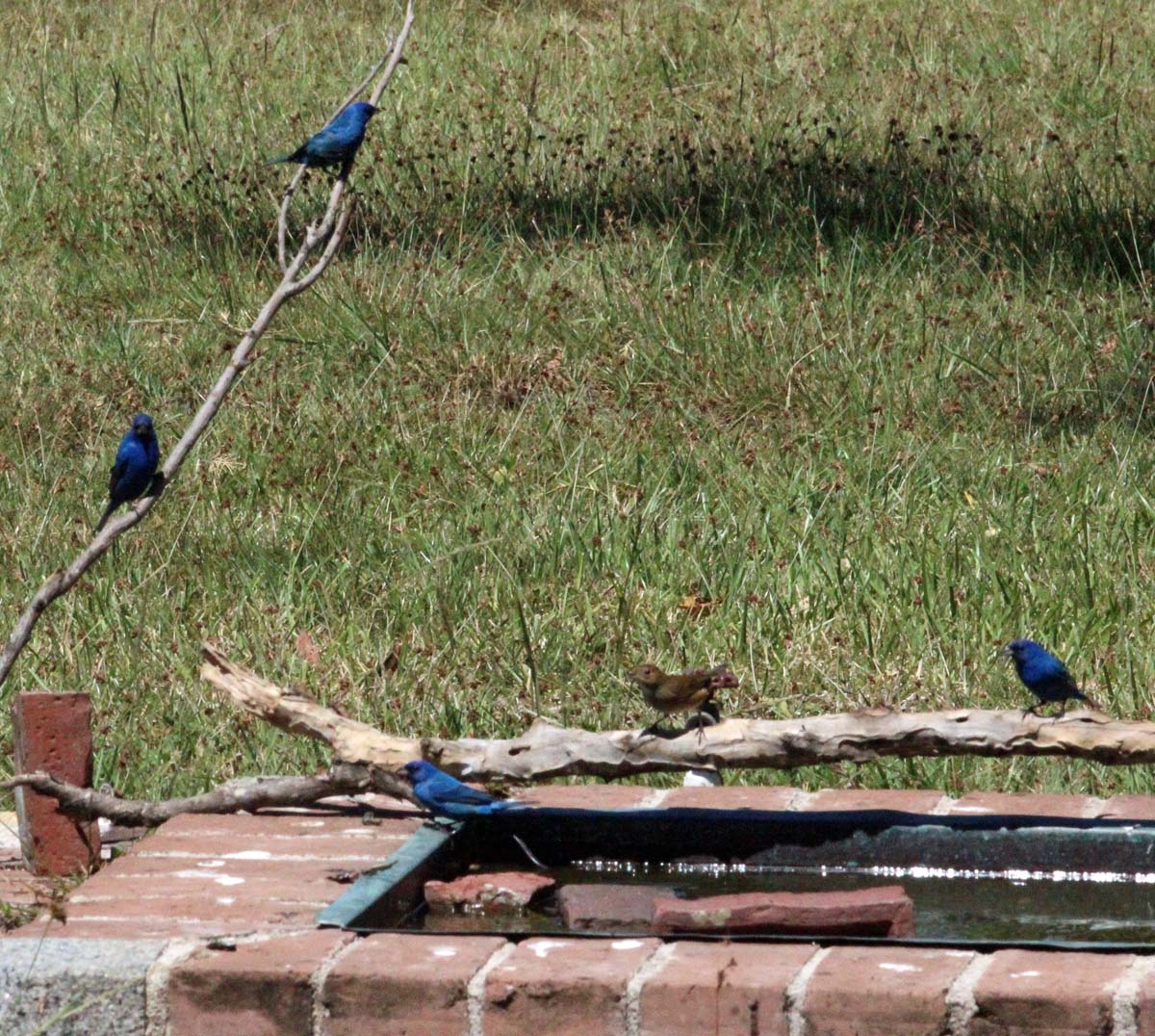
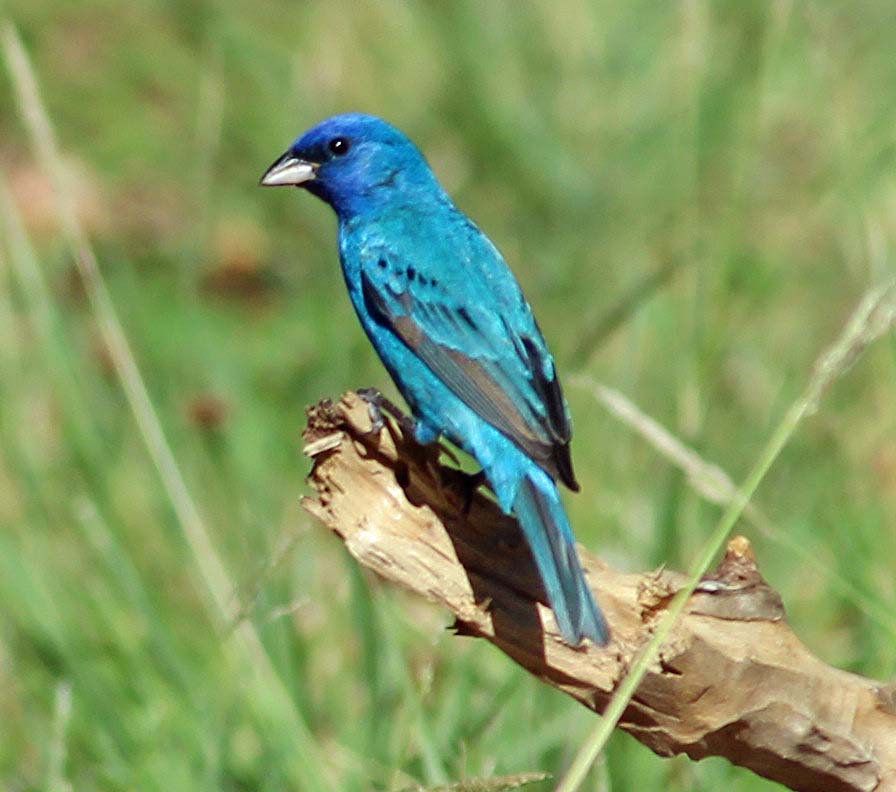
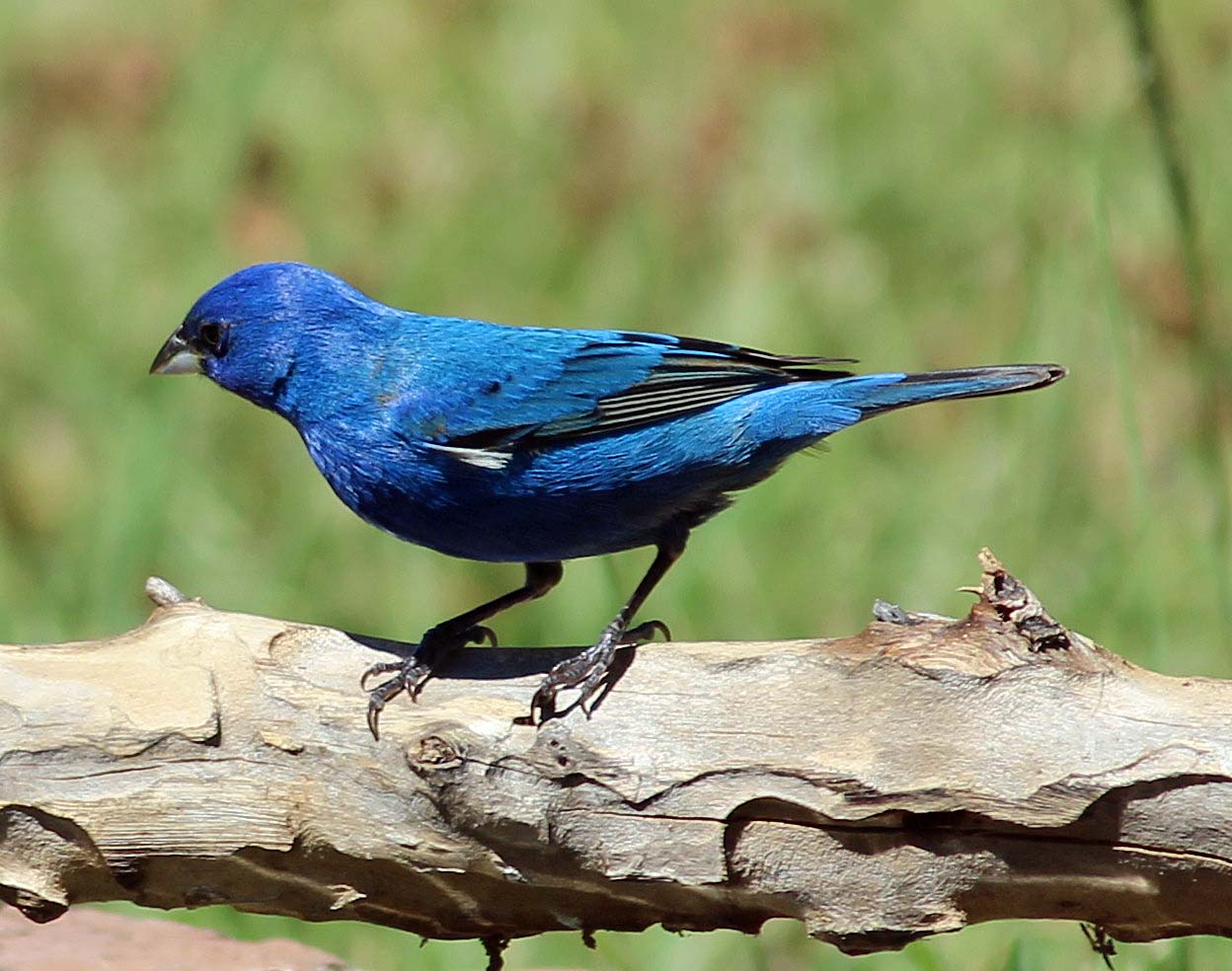
Indigo Bunting
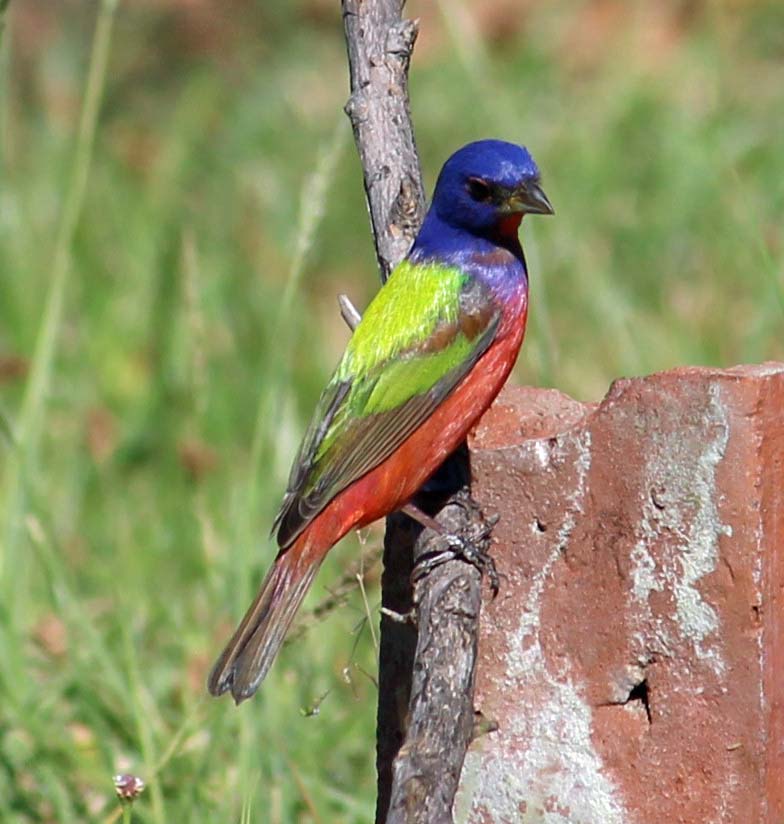
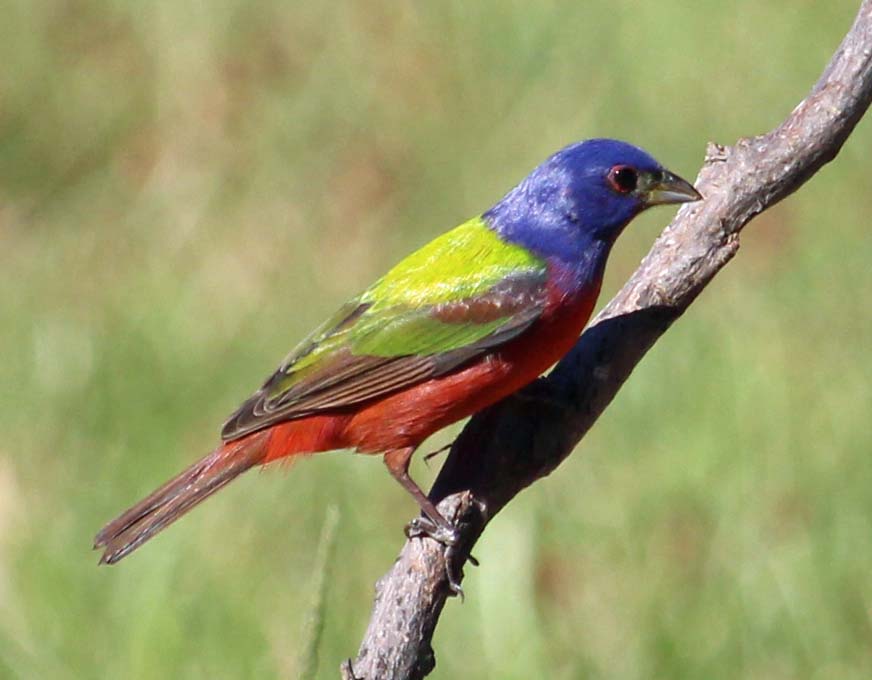
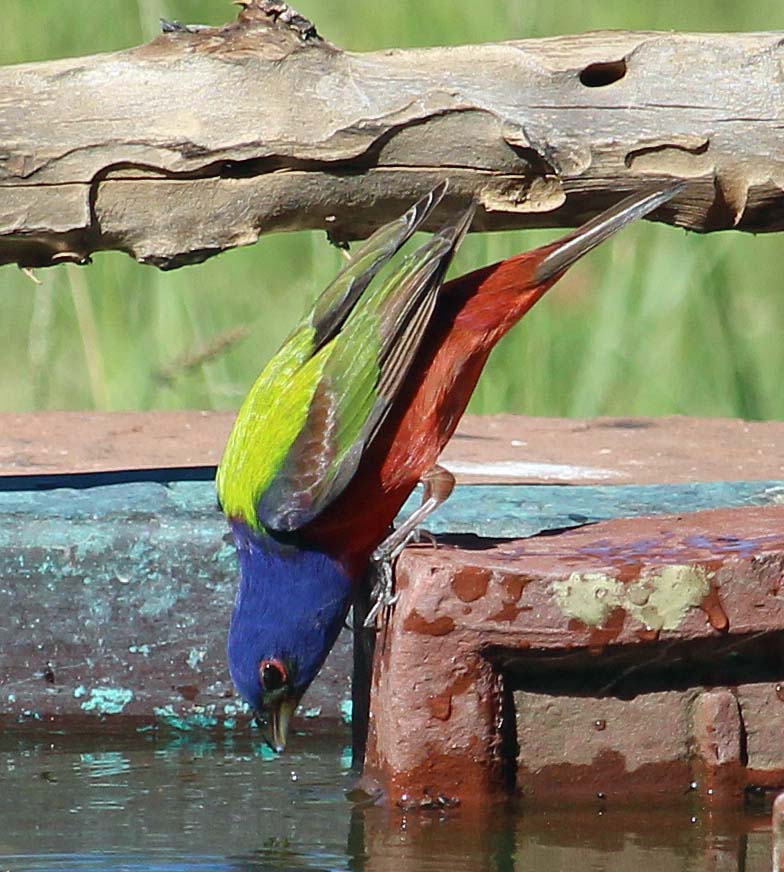
Painted Bunting
We birded some areas just outside the fort and added Tennessee Warbler, Northern Waterthrush and Semipalmated Plover. I was able to photograph a couple of Bank Swallows in the air.
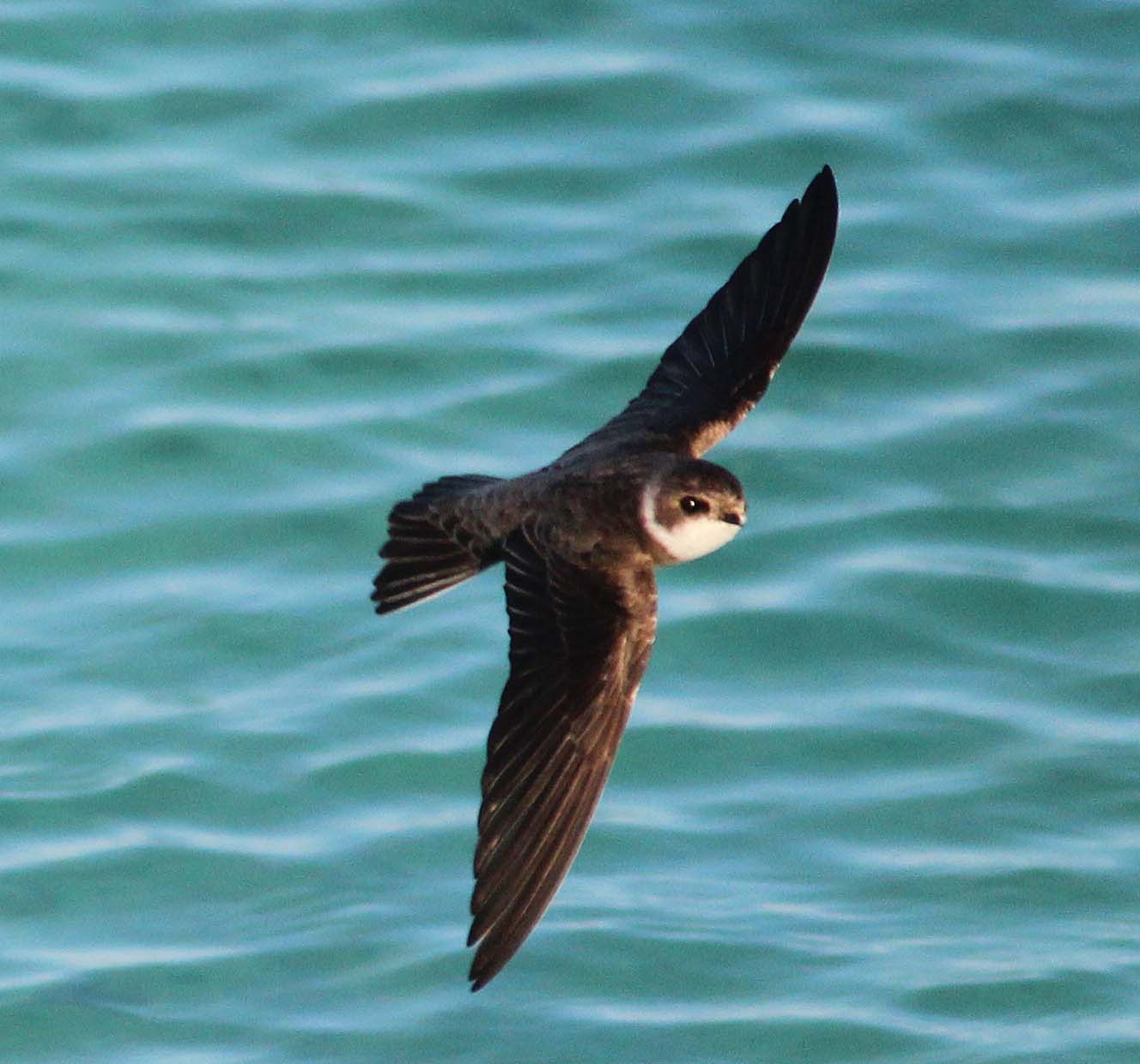
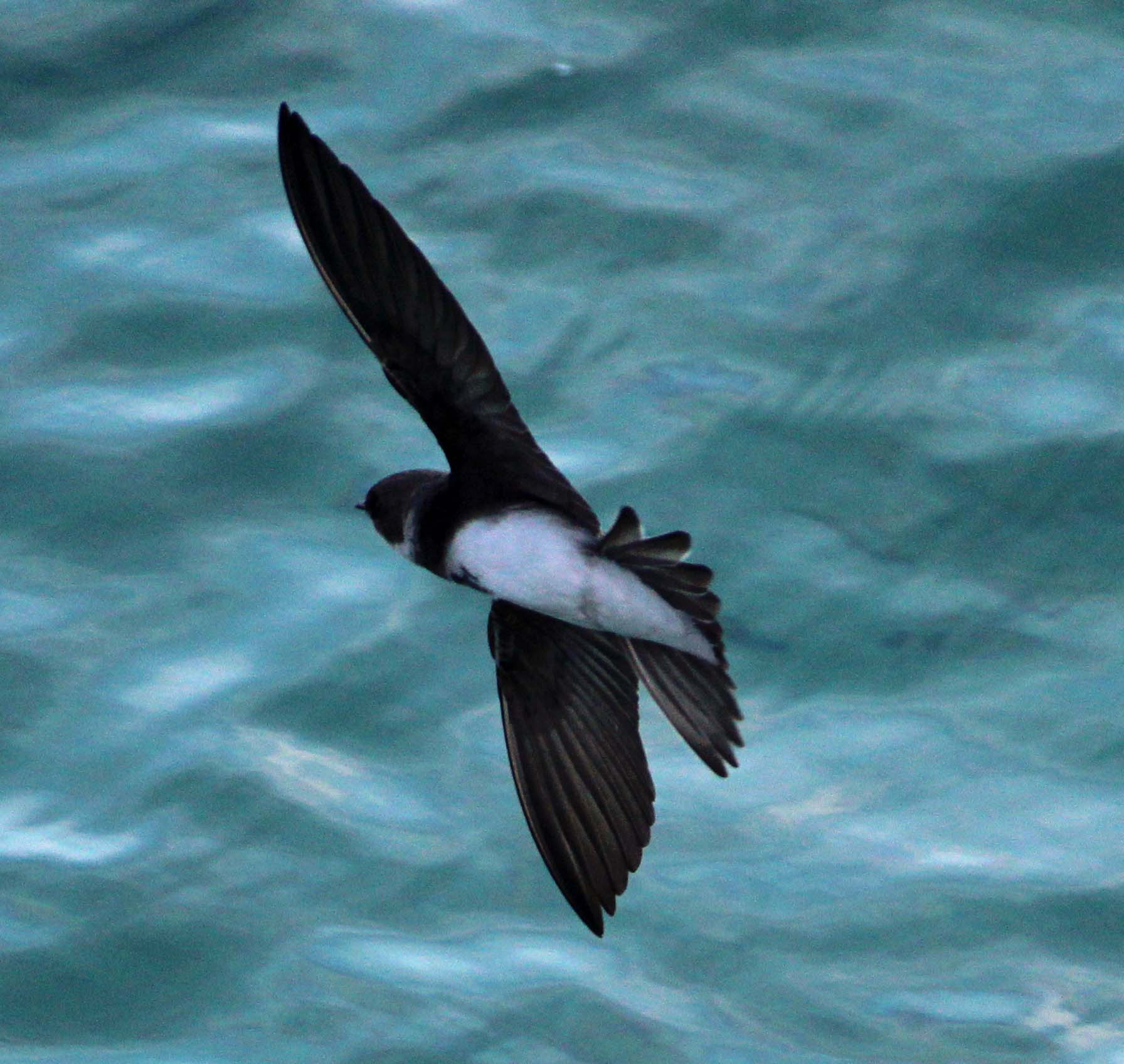
Bank Swallow
It was time to tour Bush Key and Long Key by tender again. We added Snowy Egret, Little Blue Heron, Green Heron and an immature Yellow-crowned Night-Heron. We enjoyed our last great and close looks at Brown Noddy, Sooty Tern and Magnificent Frigatebird. Our last dinner on the Makai was delicious as usual. We did some stargazing again before retiring to our cabin for the night.
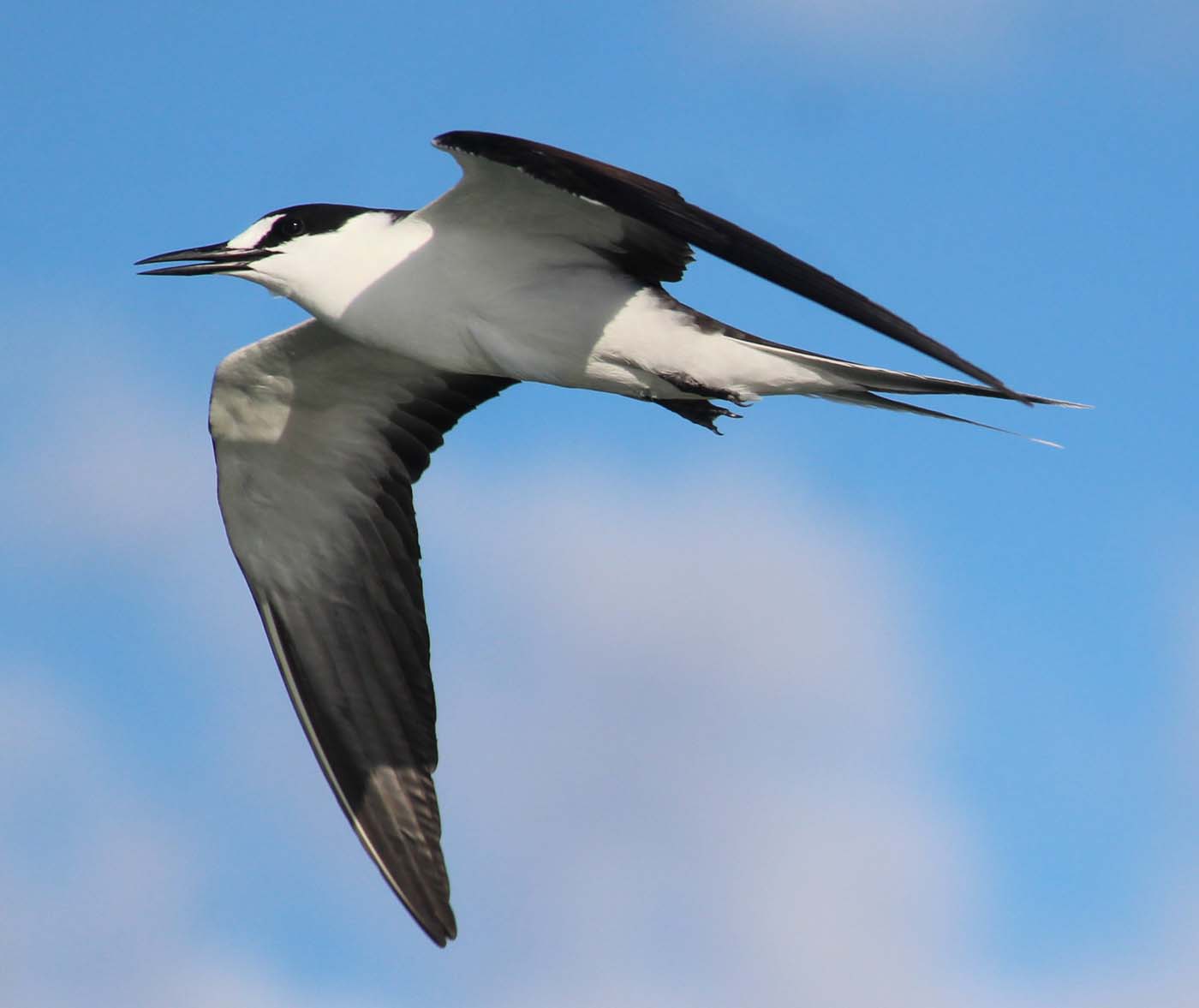
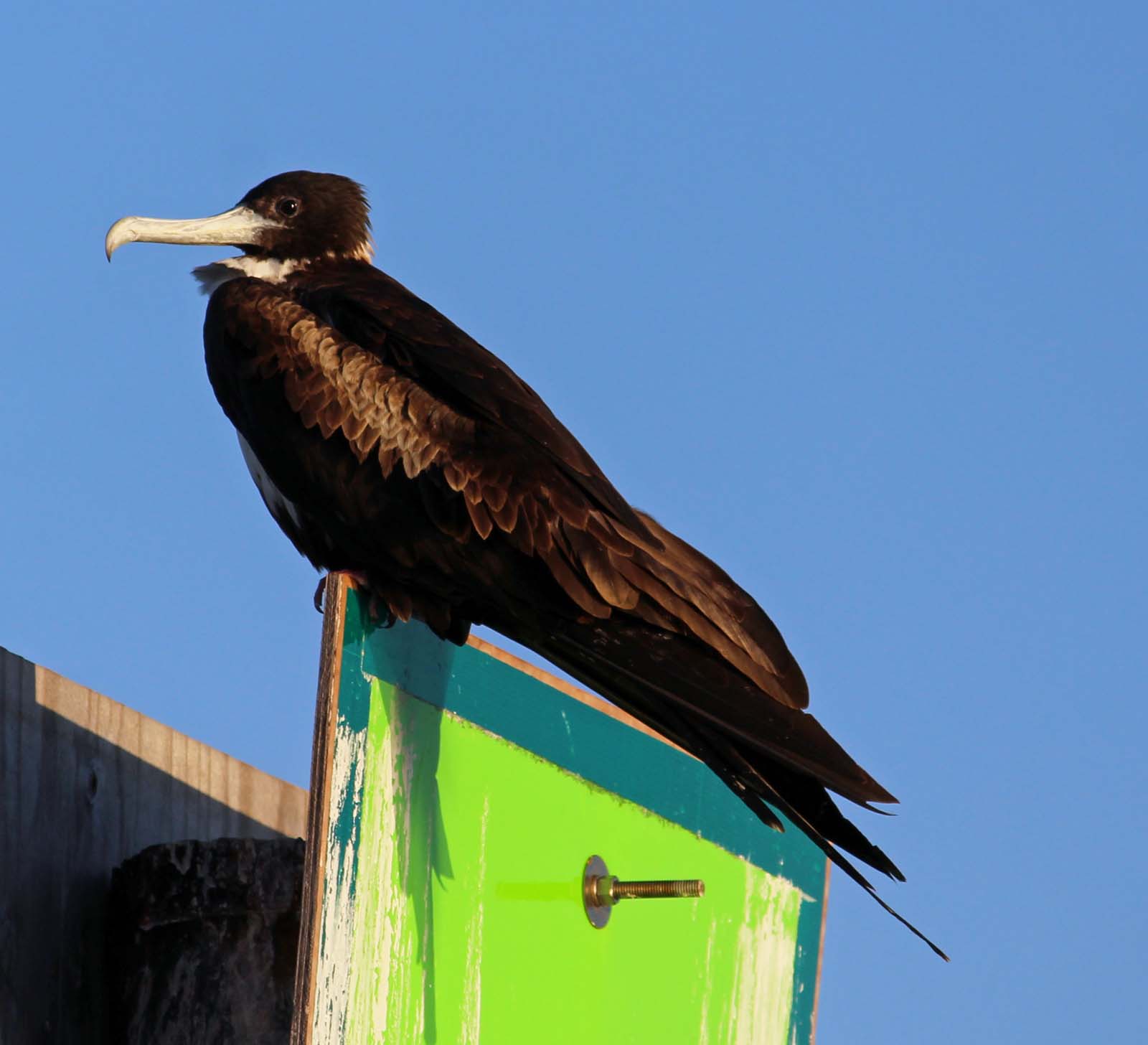
Sooty Tern and Magnificent
Frigatebird
Wednesday
April 24
Back to Key West
Today the boat gets to dock briefly on Garden Key for a short visit before we head back to Key West. After breakfast, we docked and had about 90 minutes on the Island. We didn’t see anything new but had good looks at Black-throated Green Warbler, Cape May Warbler,Northern Waterthrush and Tennessee Warbler. We gathered for a group photo in front of the fort sign.
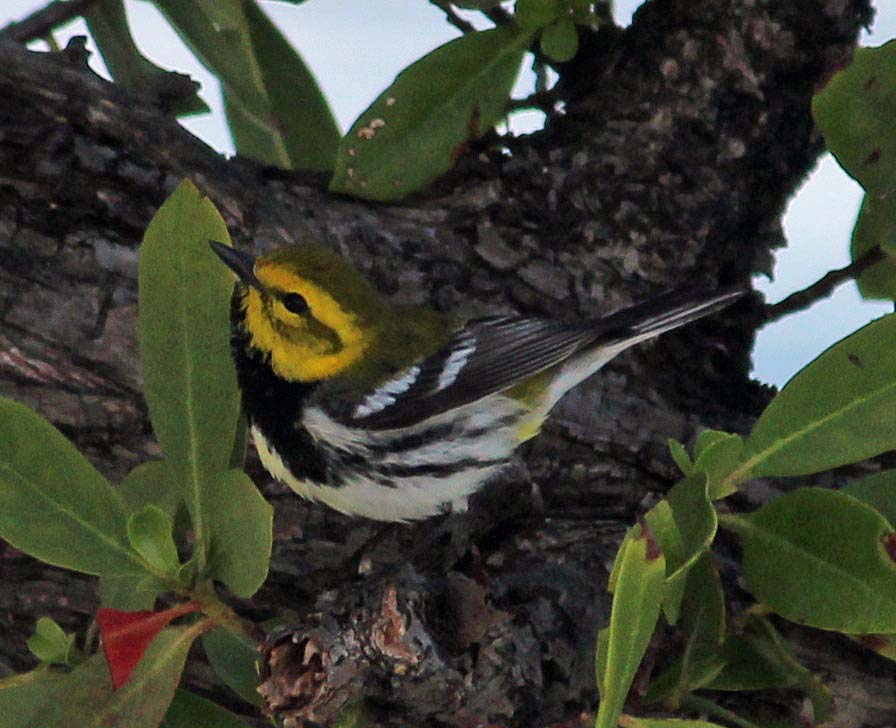
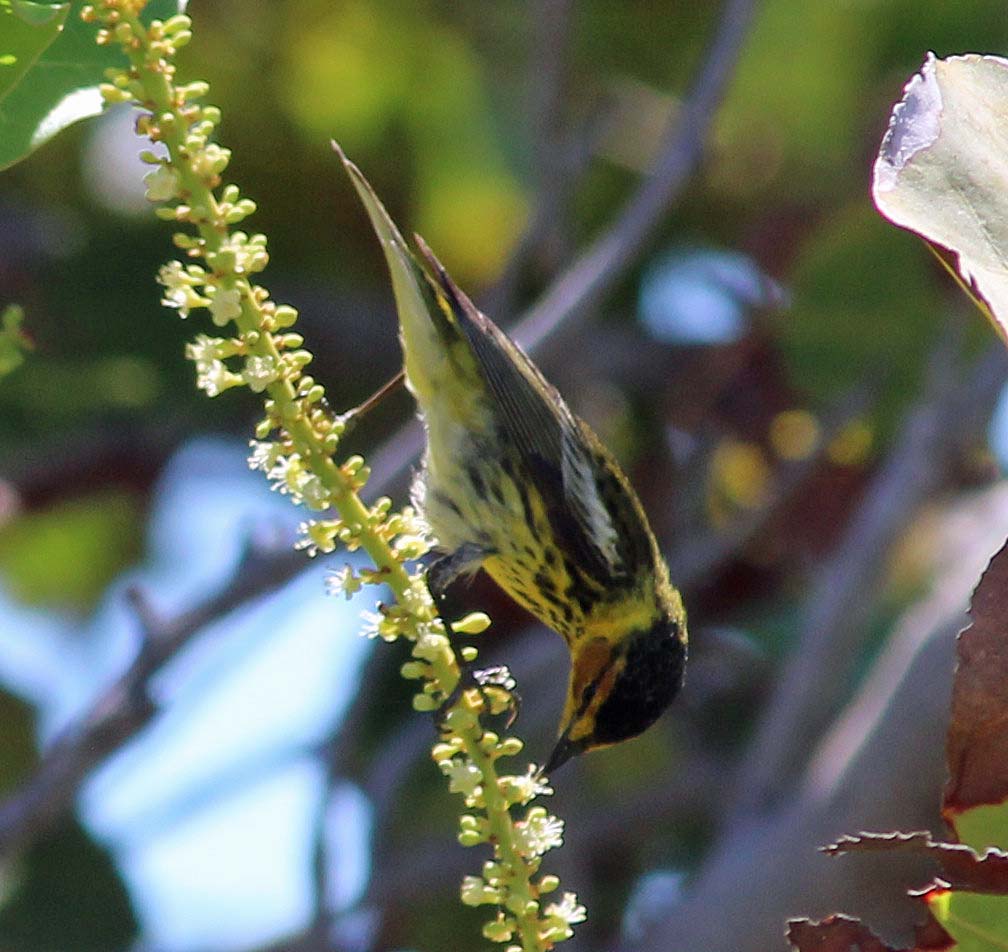
Black-throated Green Warbler Cape May
Warbler
We then started our 80 miles trip back. About an hour into our trip, we noticed our captain on the phone a lot and running down to the engine room. We later found out that we had lost one engine and instead of going 12 knots, could only got 6 . That meant instead of arriving at port at 3:30 PM it would be 7:30 PM. It was a long but relaxing trip back.
Halfway back at the markers for Rebecca Shoal we had some frigate birds and a couple of brown boobies. We saw the Dry Tortuga Ferry lap us on the way back. Closer to Key West the group added Roseate Tern but Kelli and I missed them, as we were making sure everything was packed. We did see some Least, Royal and Caspian Terns later.
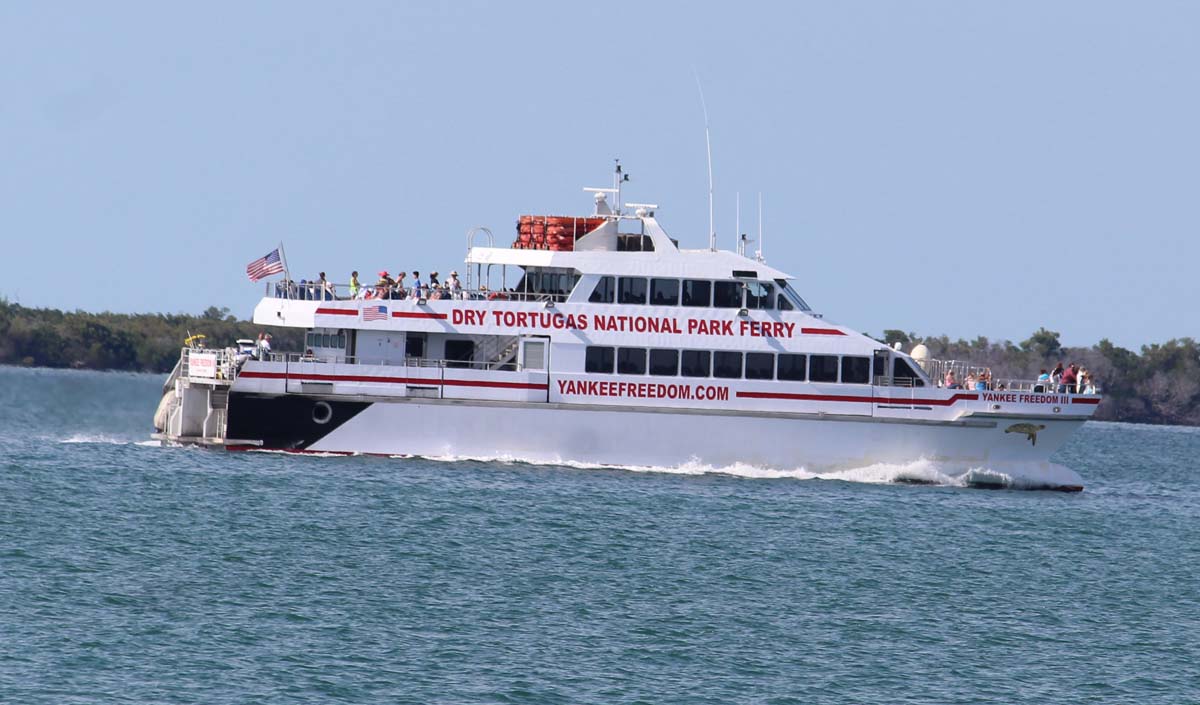
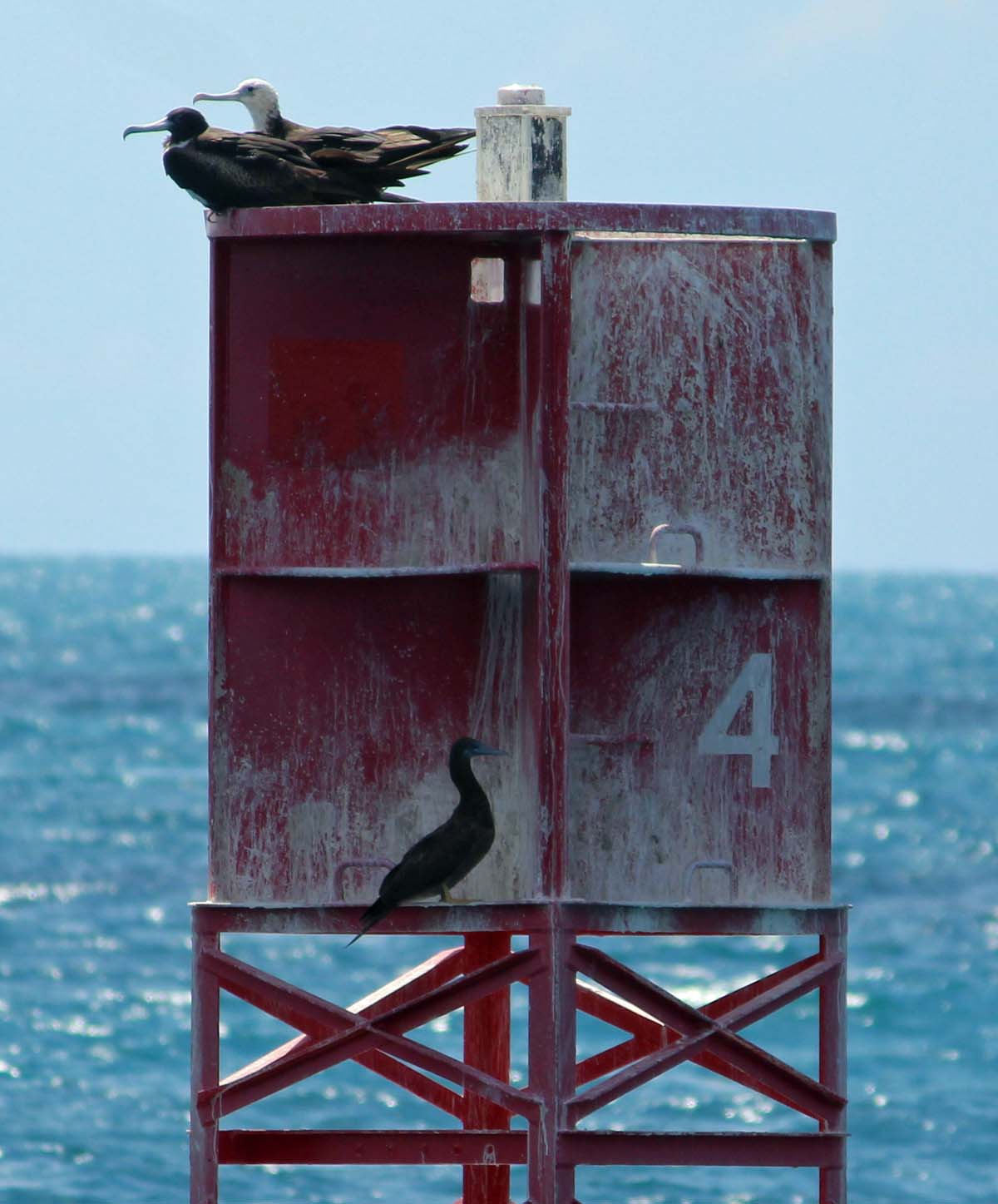
The plan now after we docked was to look for and listen for Antillean Nighthawk. We got off the boat 30 minutes before sunset and all drove over to the airport but we did not see or hear any.
We were very tired and the three of us headed for a Denny’s close to our hotel for the night. Our GPS led us astray. Mark decided to go check in for the night but Kelli and I looked for Denny’s down the road and found it. Afterwards we headed to the Hilton Garden Inn, Key West for the night.
Thursday,
April 25, 2019
Birding the Keys
We decided to meet at the hotel restaurant for breakfast. On our way we saw some chickens with chick just outside the main lobby. Our plan for the day was to visit Fort Zachary Taylor Historic State Park in Key West then bird our way back to the mainland at stops missed on the way out.
In the parking lot of Fort Zachary Taylor Park, we met up with Adrian Binns by accident; and ran into John later. Adrian was gracious to let us bird with him as he knew the park well. He pointed out Roseate Terns off the beach feeding with some Least Terns and found us a White-crowned Pigeon and a (Wurdemann's) Great Blue Heron.
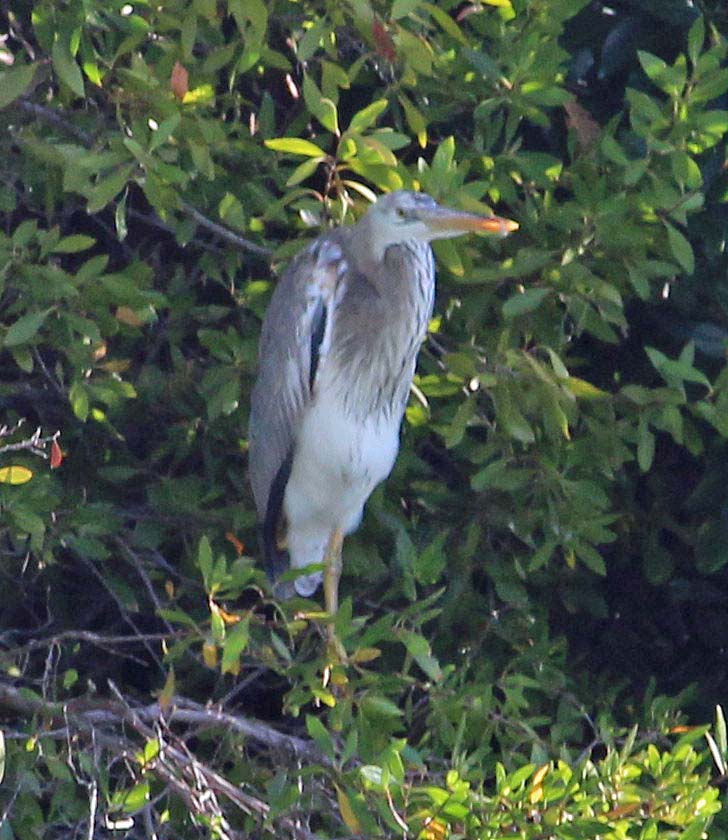
(Wurdemann's)
Great Blue Heron.
We had a few warblers including a good look at a Worm-eating Warbler, but otherwise the park was quiet. Indian Blanket Flowers, aka Sun Sunflower were in bloom.
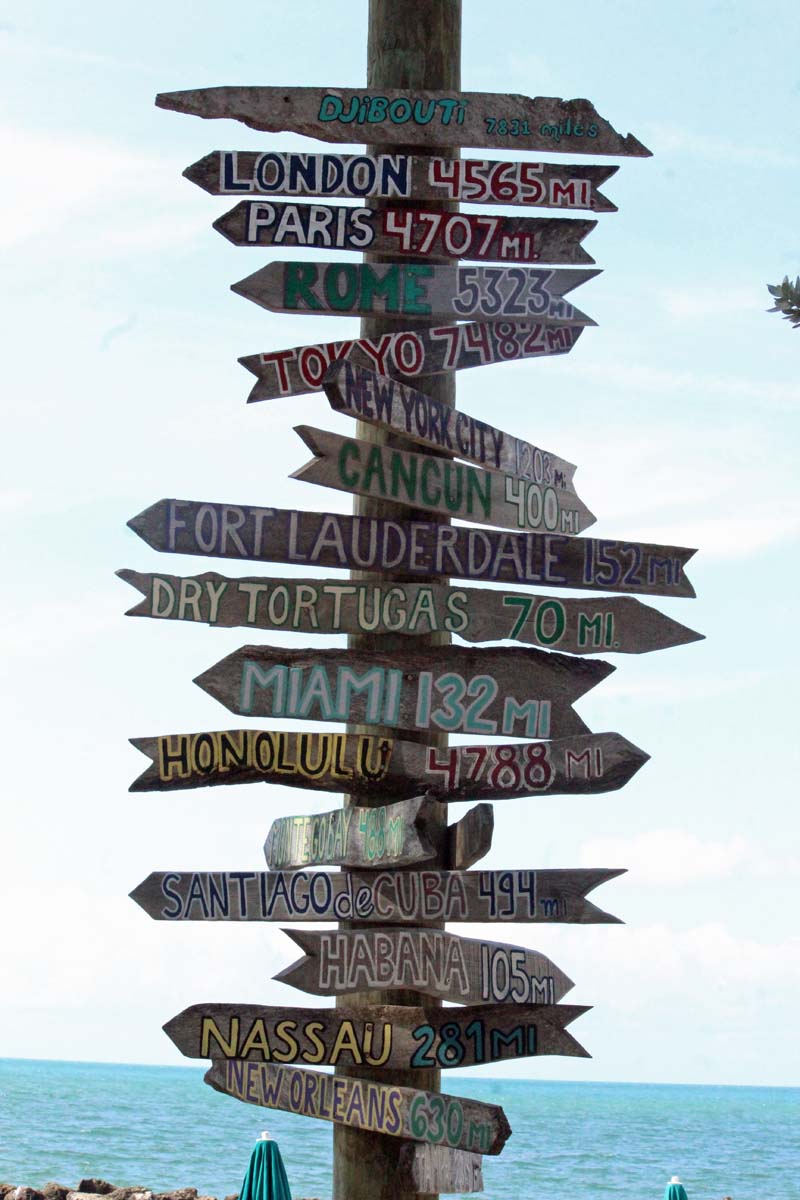
Indian Blanket Flowers, aka Sun Sunflower
We needed to leave to make sure to get back to Florida City in time so we had our second goodbye to Adrian. On our way out of Key West we past the spot claimed as the southern most point of the continental United States. We stopped at Bahia Honda State Park. It was already getting hot so bird activity was quiet. It had a little visitor’s center featuring the history of the old railroad from the mainland out to Key West. We did get great views of Gray Kingbird from the ramp up to the old railway bridge.
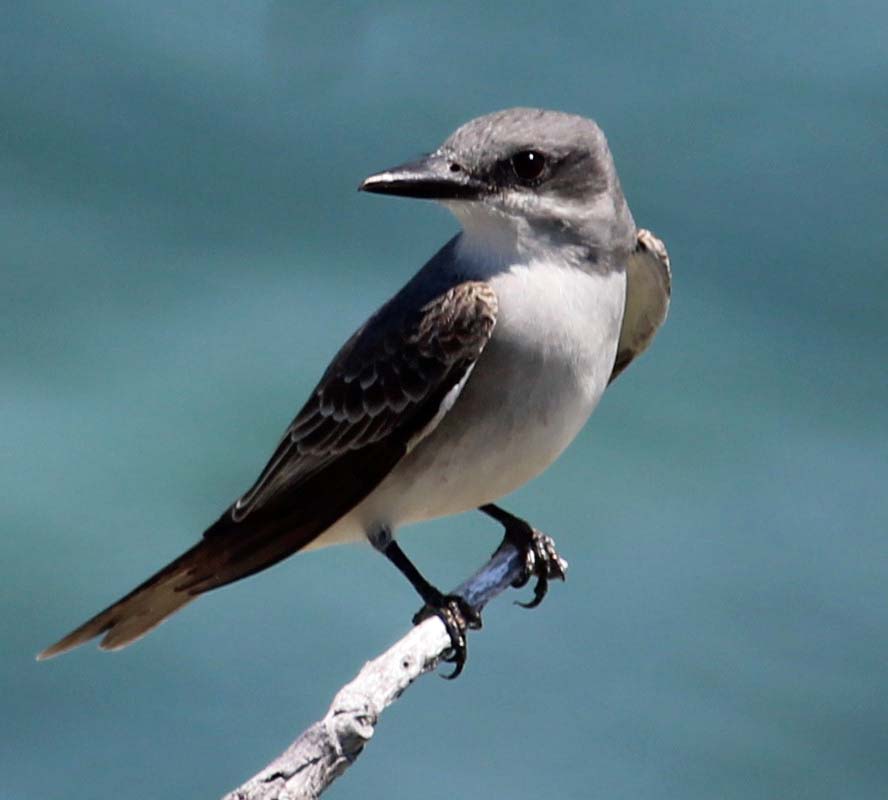
Gray
Kingbird
We stopped on Ohio Key across from the RV resort and found some shorebirds including Short-billed Dowitcher and Black-bellied plover along with a Little Blue Heron.
A late lunch was at the Marathon Grill and Ale House. I had a nice chicken pot pie. After we ate, we stopped in a pet store next door and brought Snowball and Wisper (our parakeets) a new toy and some veggie clips. We decided to head straight back to the motel. Kelli and I did stop for some souvenir shopping and we tried for ice-cream since we heard a radio commercial for Mr. C's Homemade Ice Cream. However, when we entered the store a woman said they were closed on Thursdays making ice-cream!
We again stayed at Best Western Gateway To The Keys in Florida City. We had time to visit the Anhinga Trail and the Lucky Hammock for the evening.
We arrived in Everglades National Park - Anhinga Trail parking lot and were greeted by Black Vultures. We then notice a sign about them the next day!
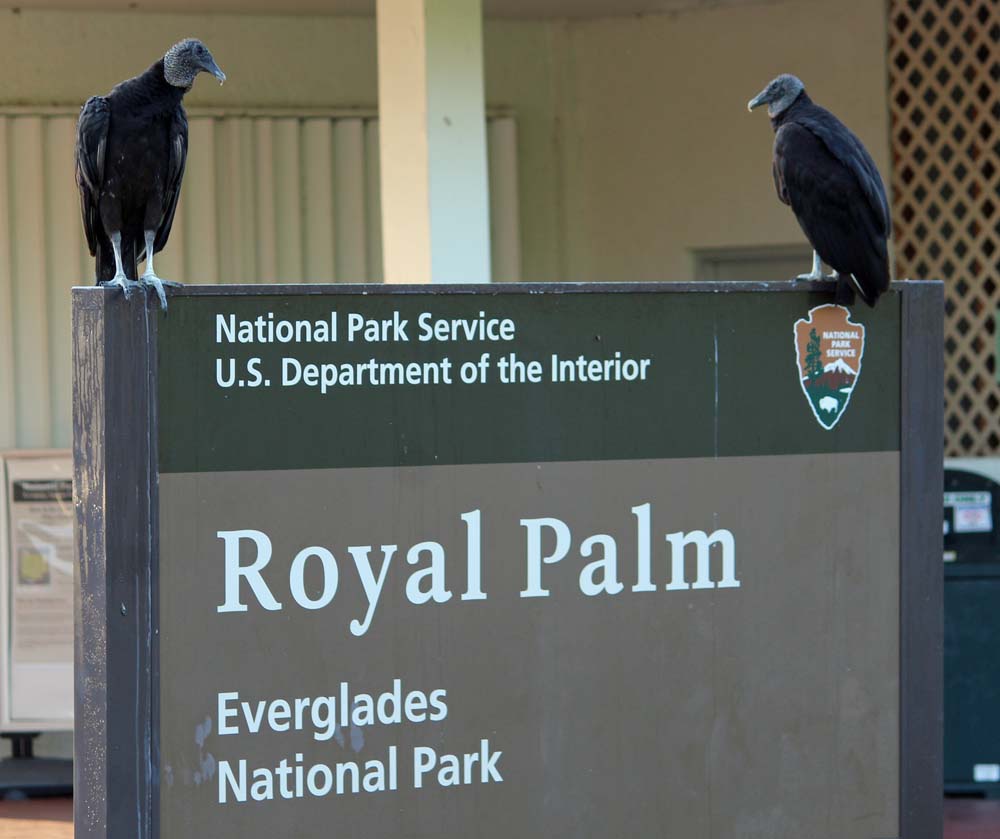
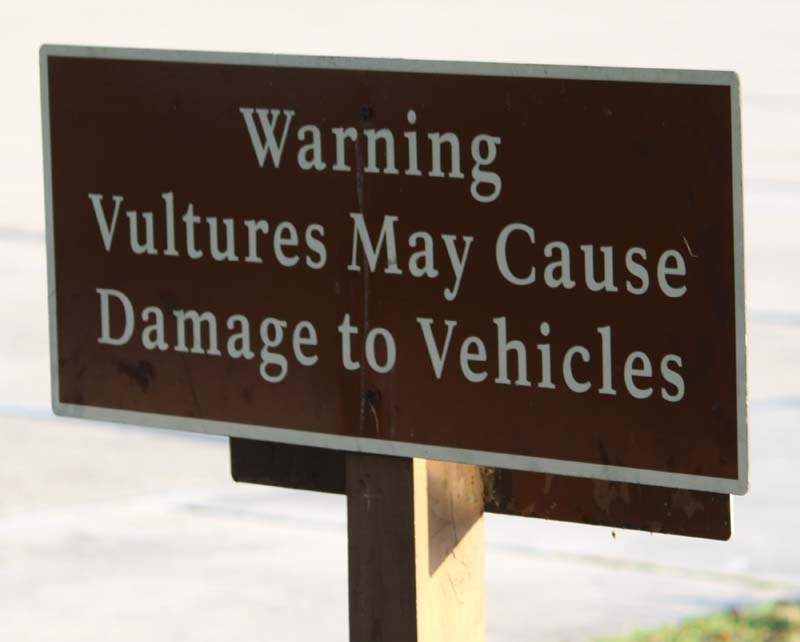
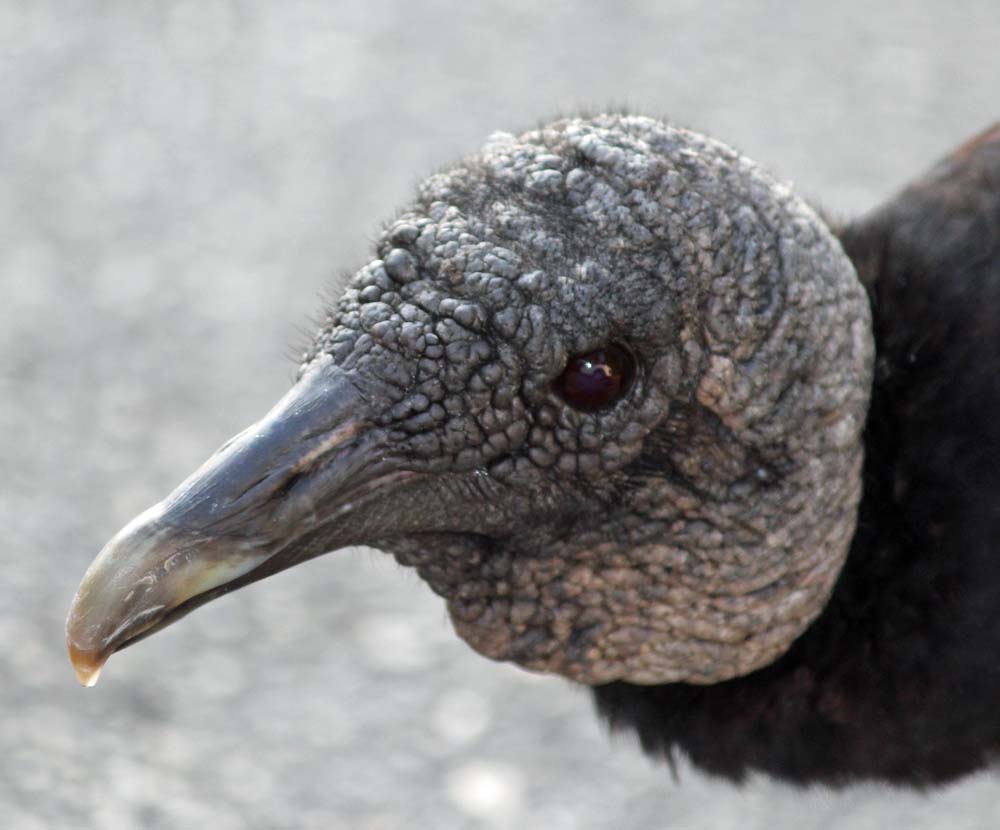
Black Vultures
We did part of the trail seeing plenty of fish in the water, alligators, Anhinga, Green Heron and Black-crowned night heron. We also had looks at White-eyed Vireo and great Crested Flycatcher. The railings had dozens of colorful Southern Lubber Grasshopper (Romalea guttata) on them.
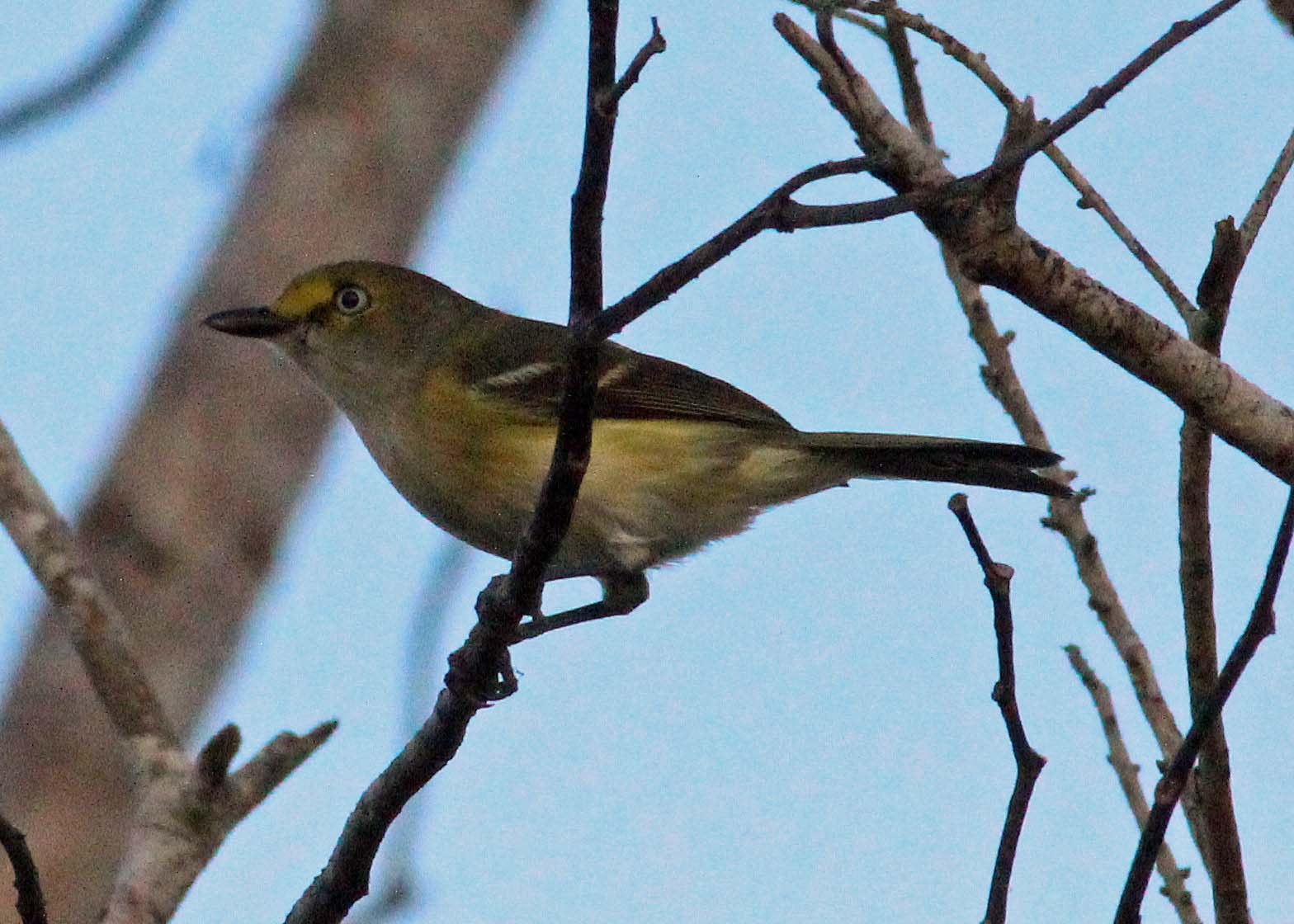
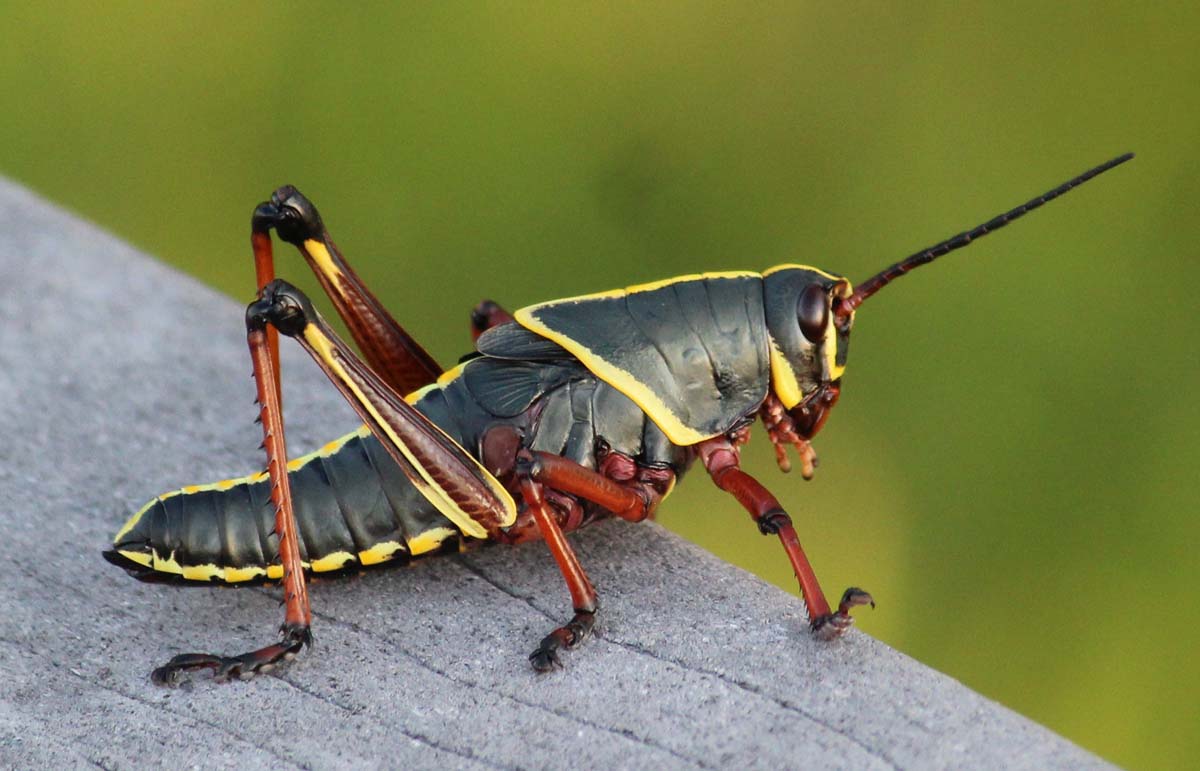
White-eyed Vireo and Southern Lubber Grasshopper
We wanted to be at the Lucky Hammock to try for Barn Owl again so we had to leave and make the short drive over. It did not appear but we had at least a dozen Common Nighthawks feeding as the sun went down.
Friday,
April 26, 2019
Everglades
Today is our last day here. We have a late flight out so we birded the Everglades.
We headed back to the Anhinga Trail and took in the whole trail.
A Red-bellied Woodpecker had a nest hole near the rest rooms.
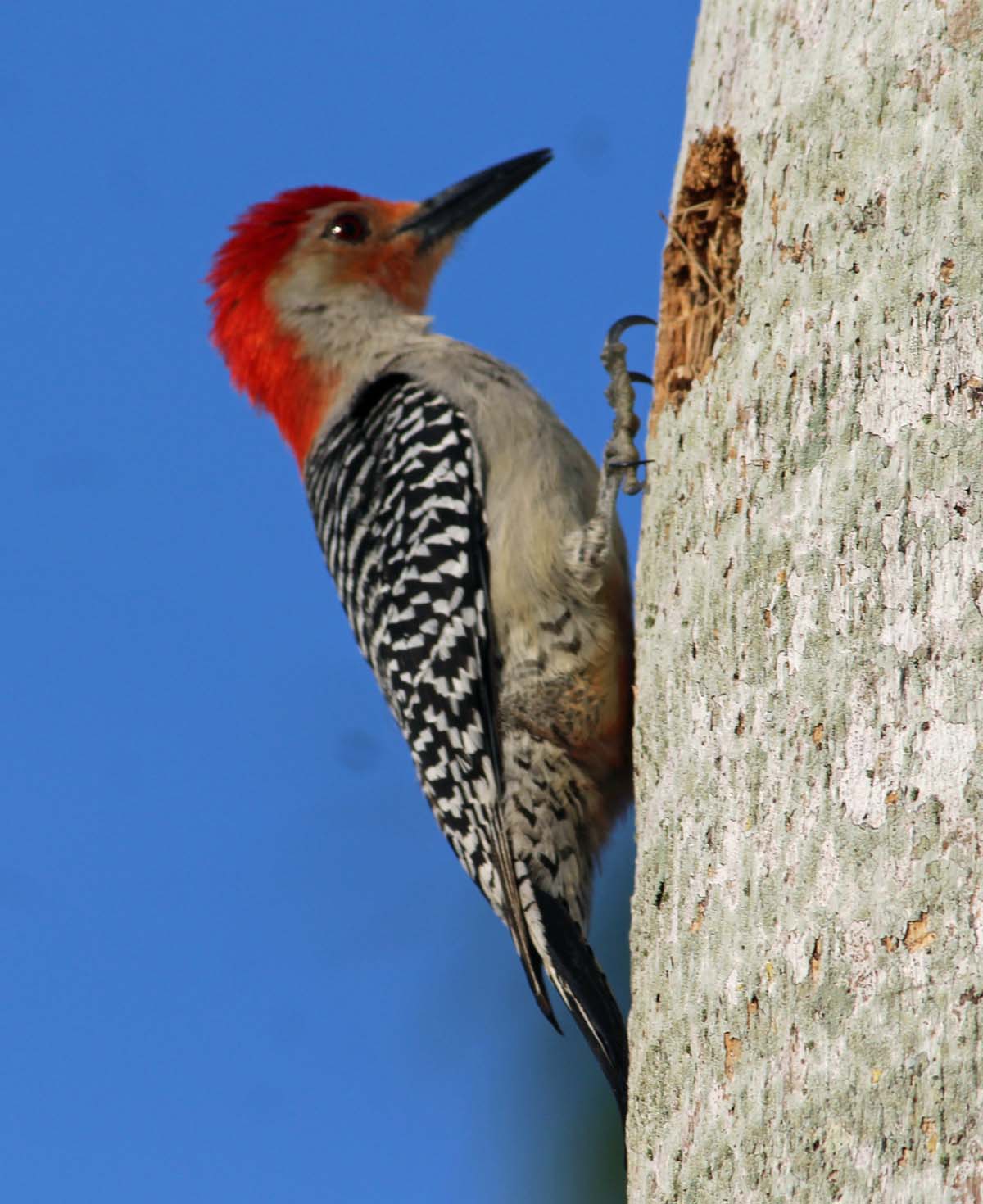
Red-bellied Woodpecker
Anhinga were everywhere and on the boardwalk, we found a few nests with young. We also saw one trying to swallow a sunfish.
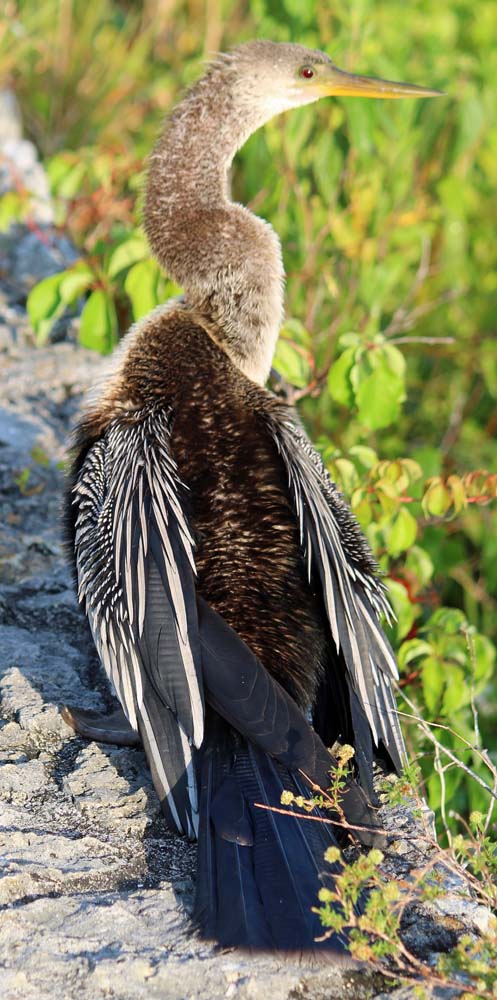
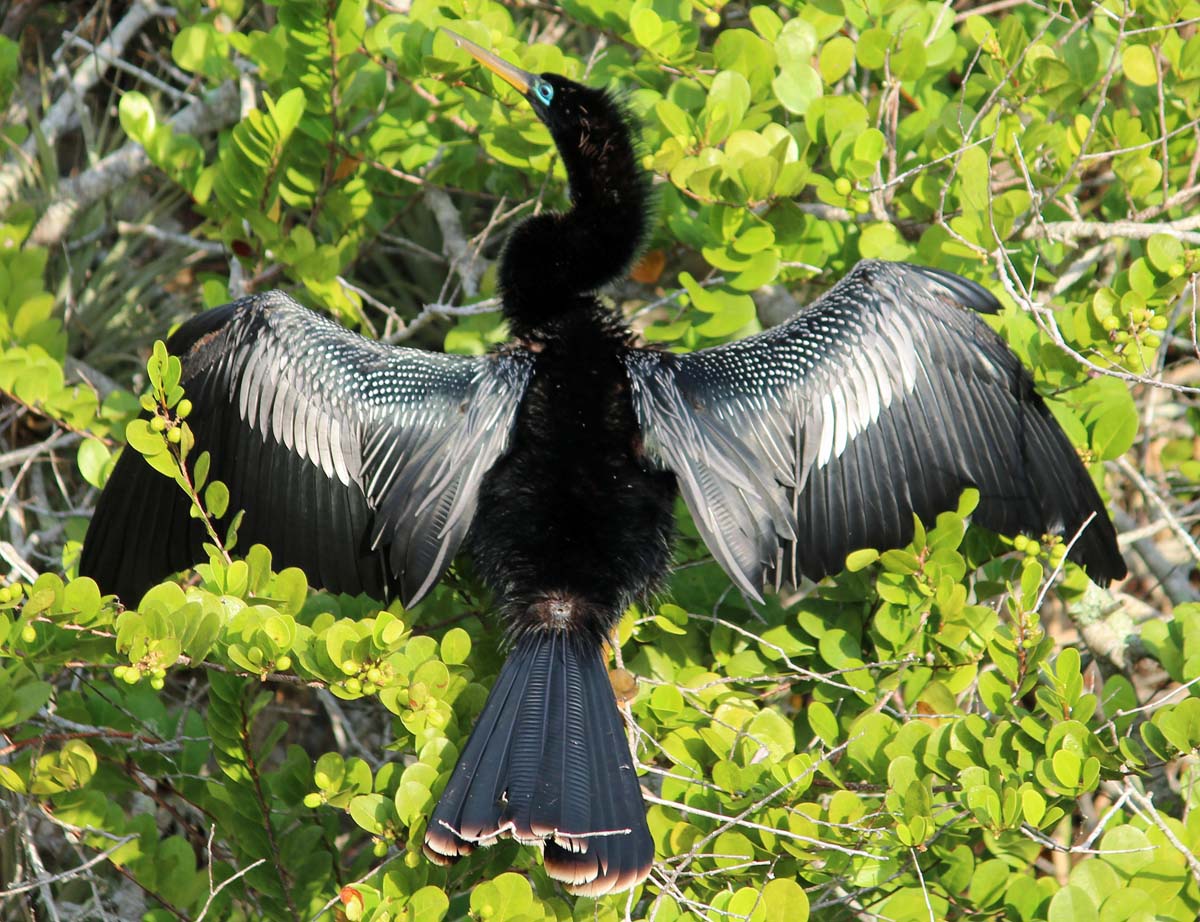
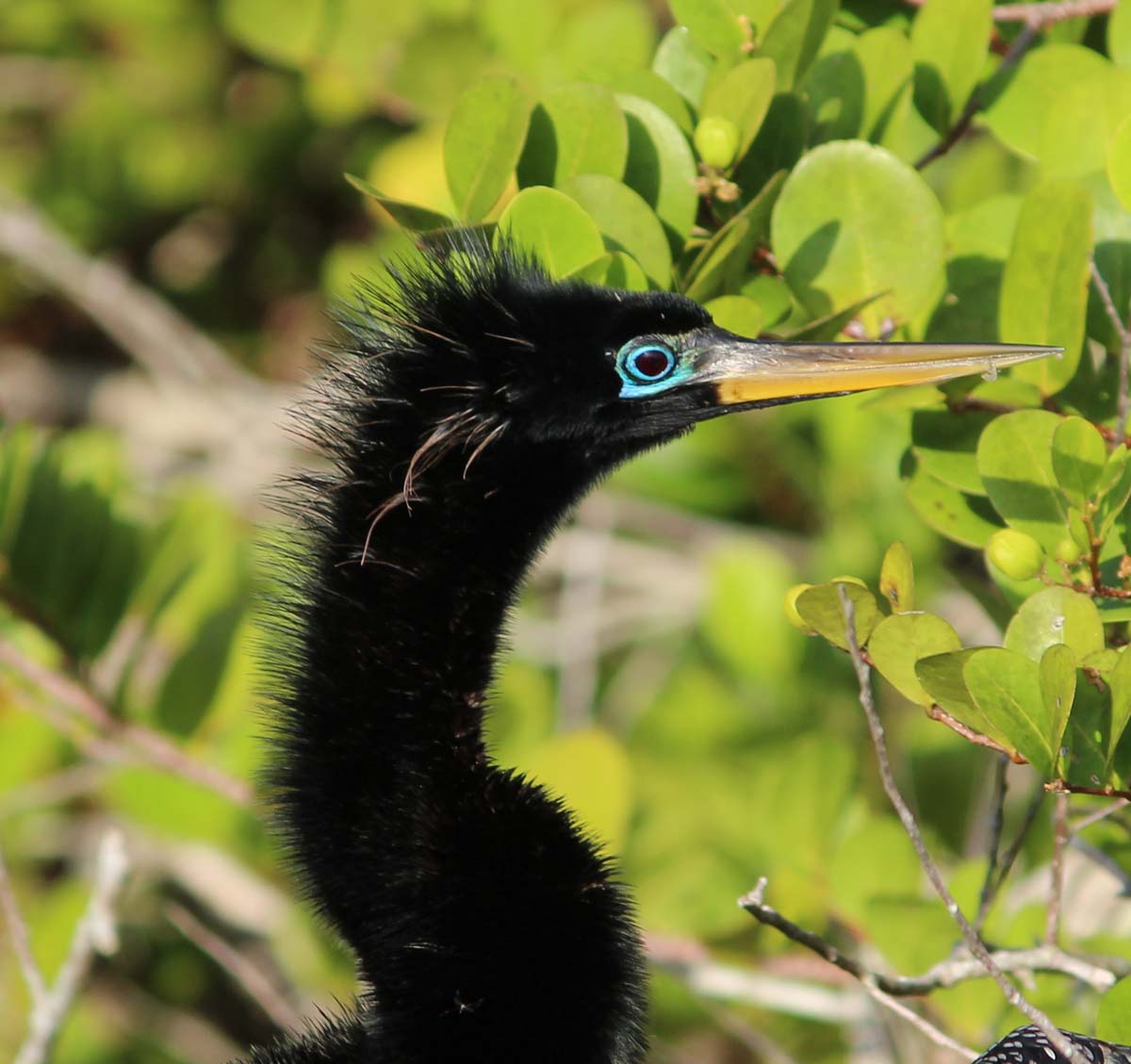
Anhinga
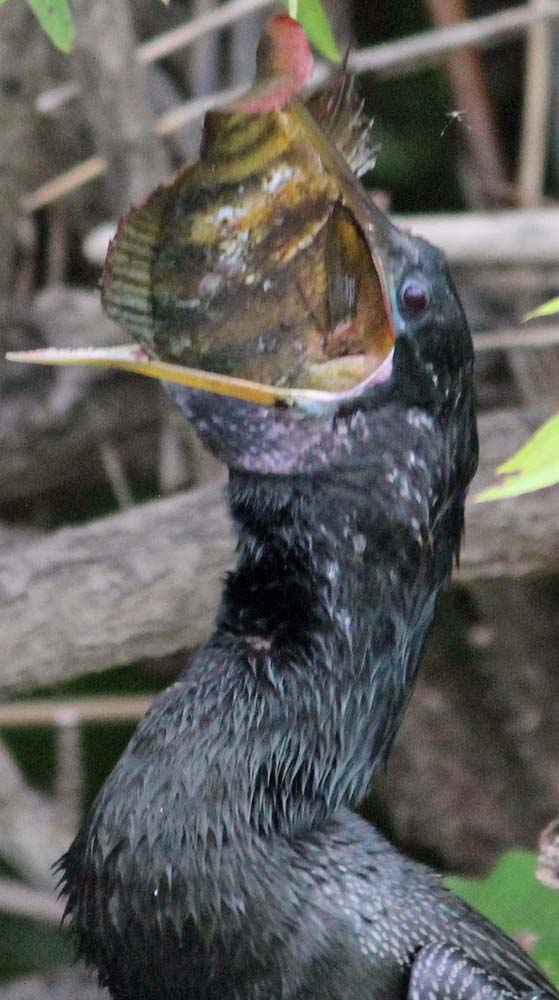
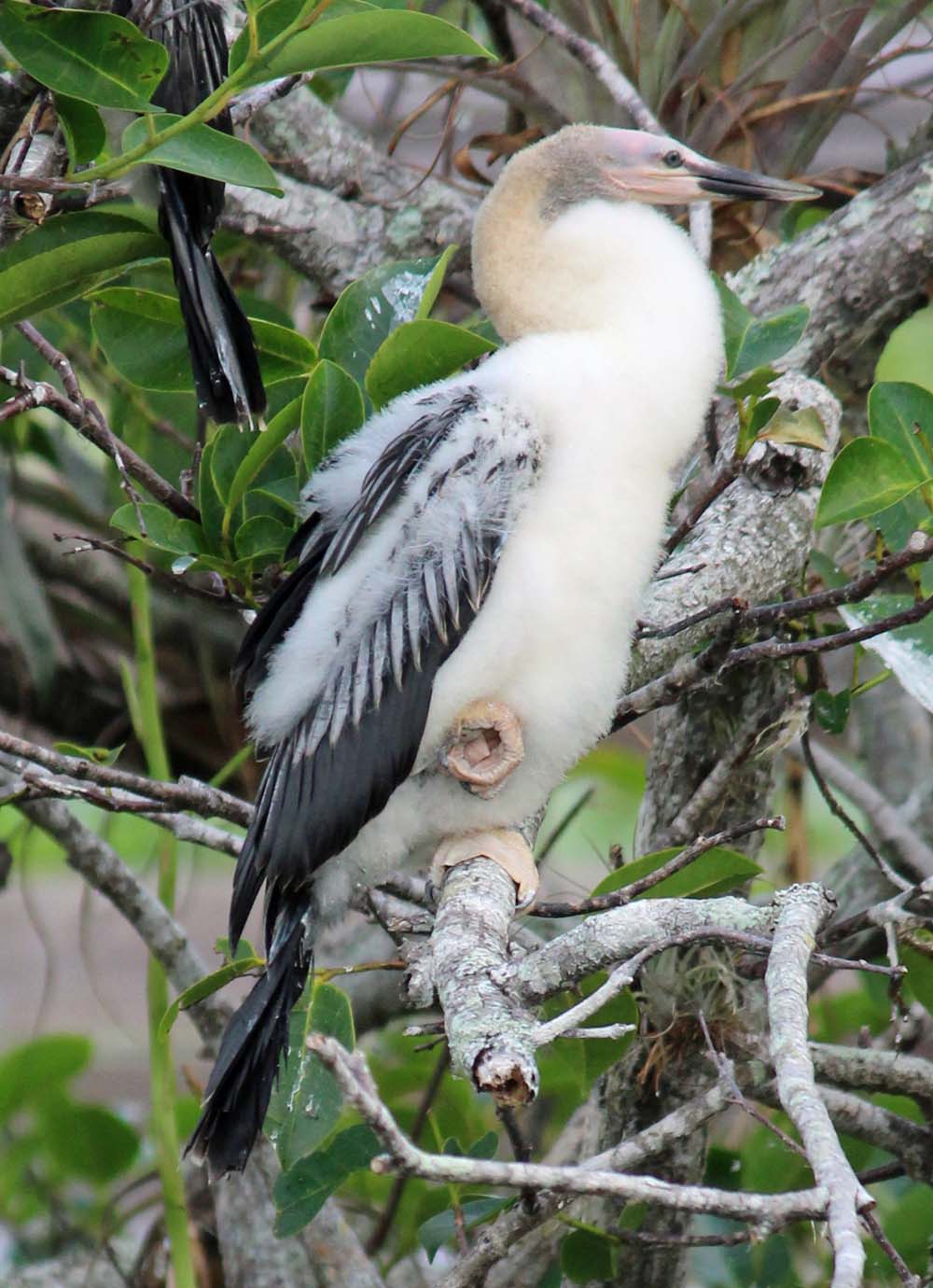
A very large Florida Softshell Turtle had just finished laying eggs next to the trail.
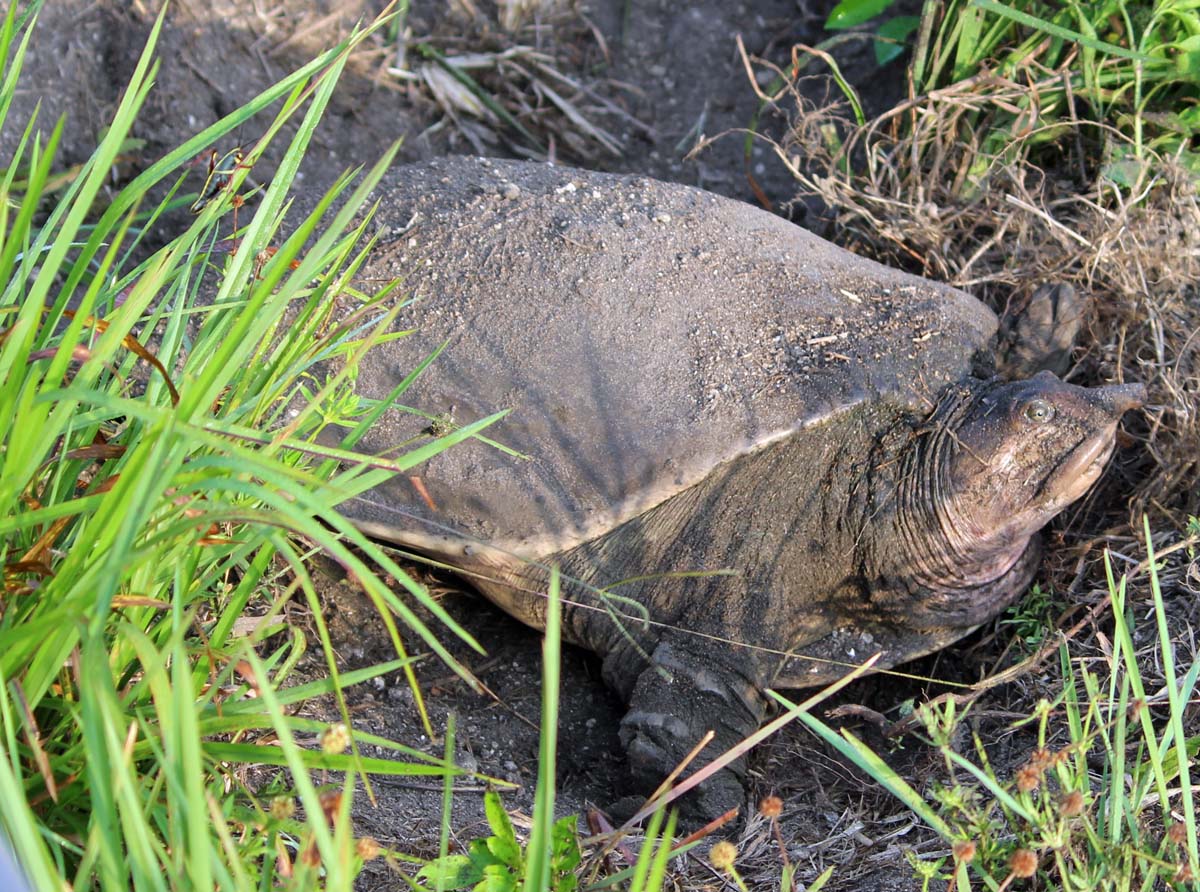
Florida Softshell Turtle
Green Herons seem to pose along the trail.
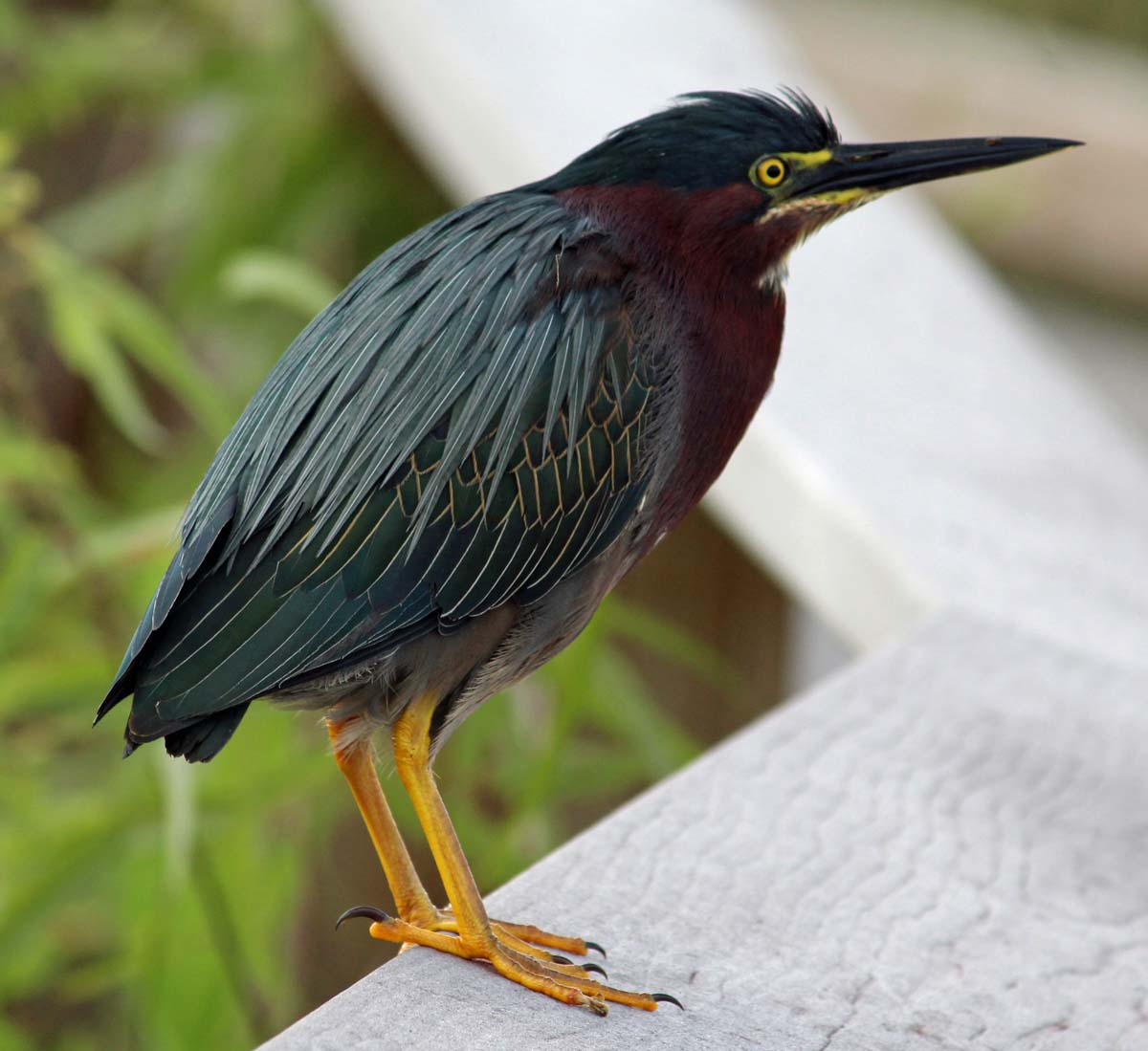
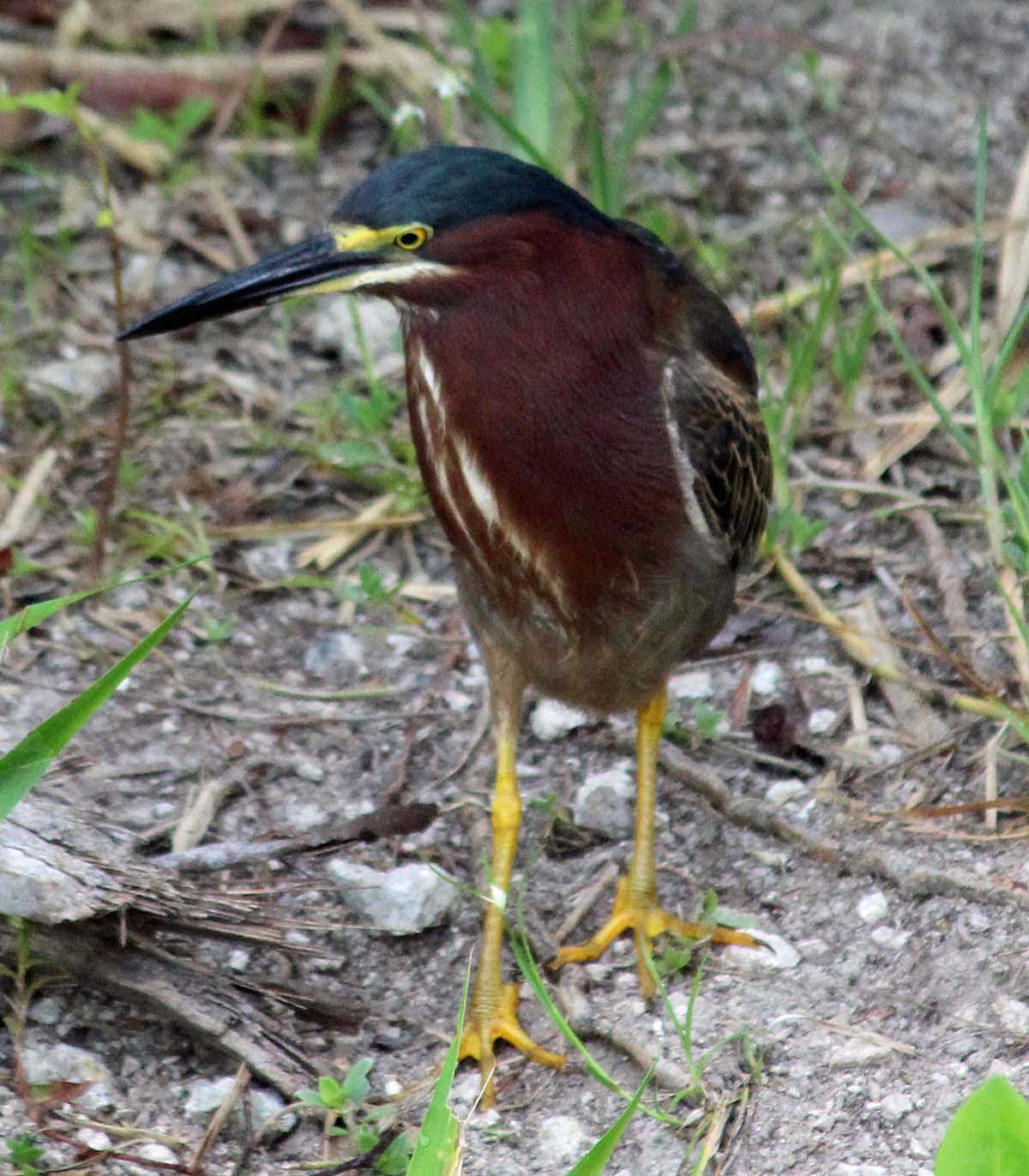
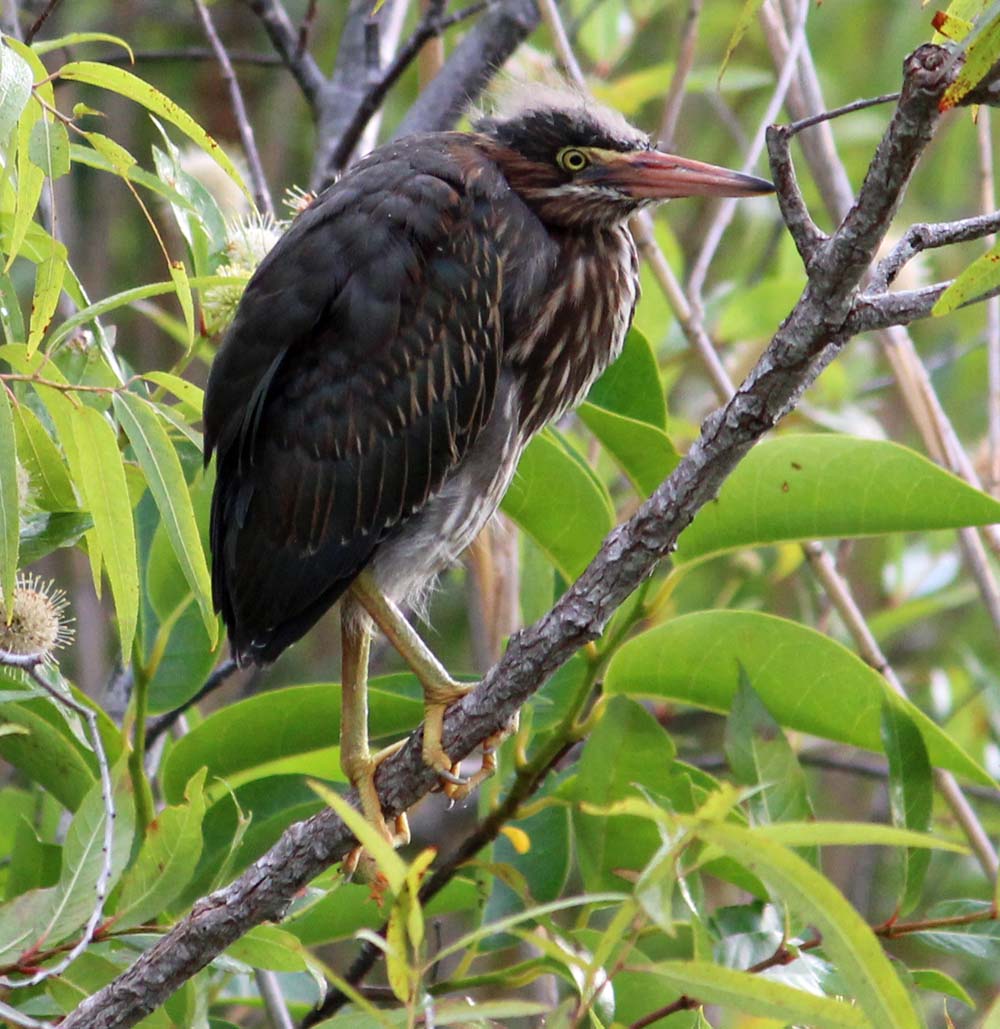
Green Heron
We saw at least a dozen Alligators. We also heard a few of the males bellowing. They make a grunting noise that makes it seem that Godzilla is under the boardwalks.
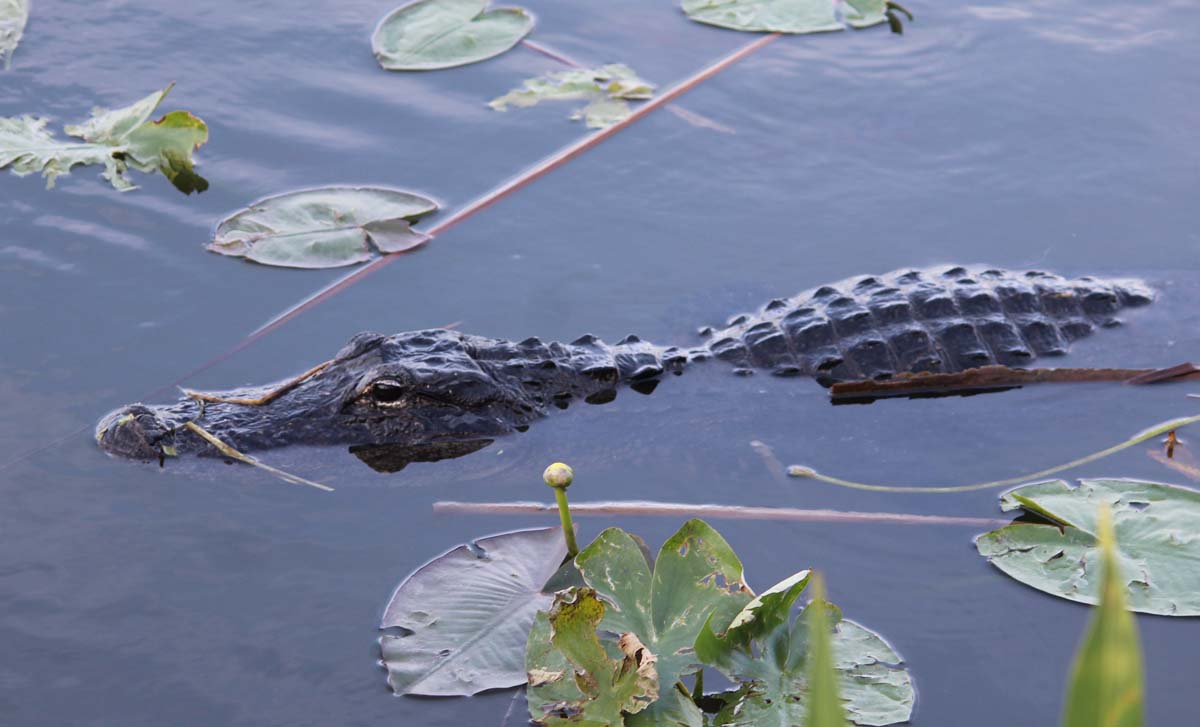
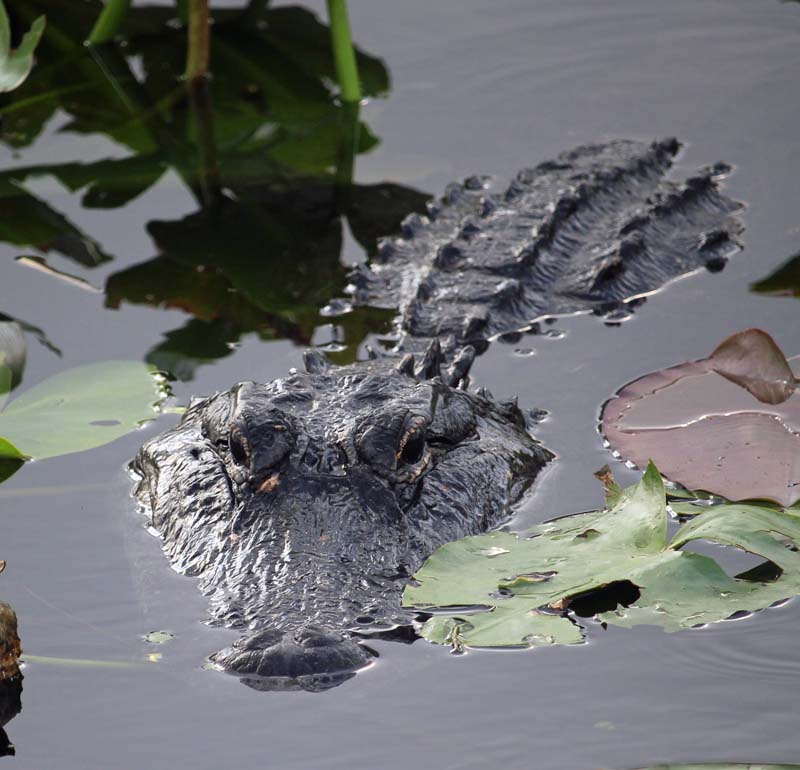
Fish were numerous such as Florida Gar. Many of them are exotic, including Oscars and Mayan Cichlid.
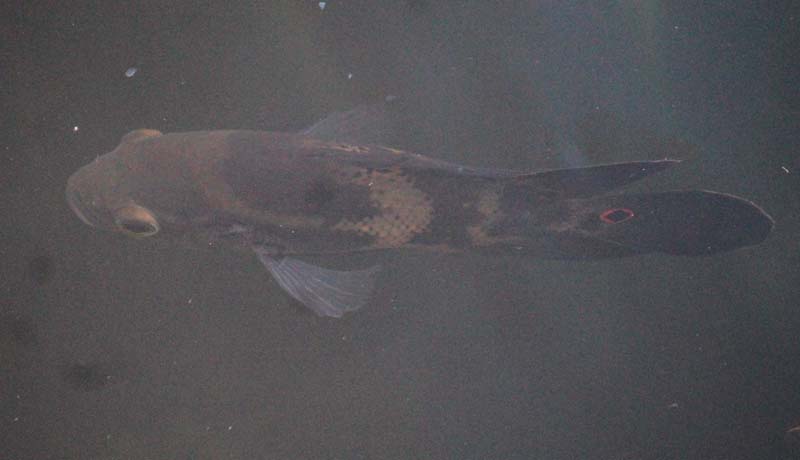
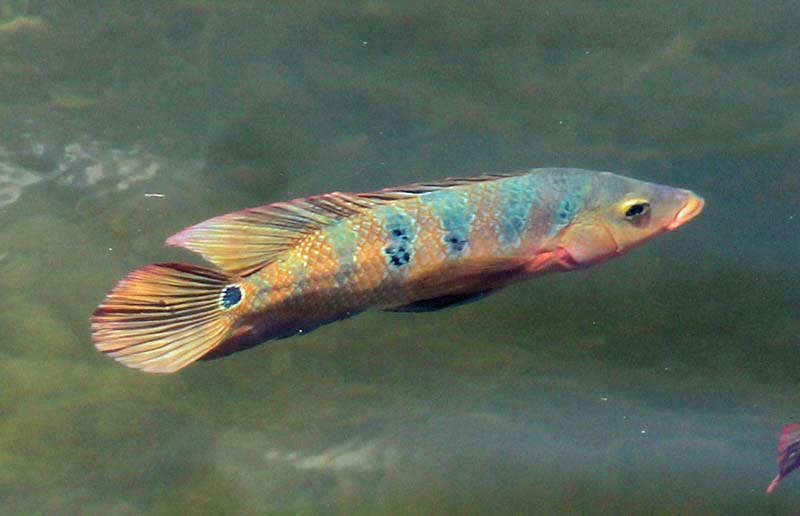
Oscar and
Mayan Cichlid
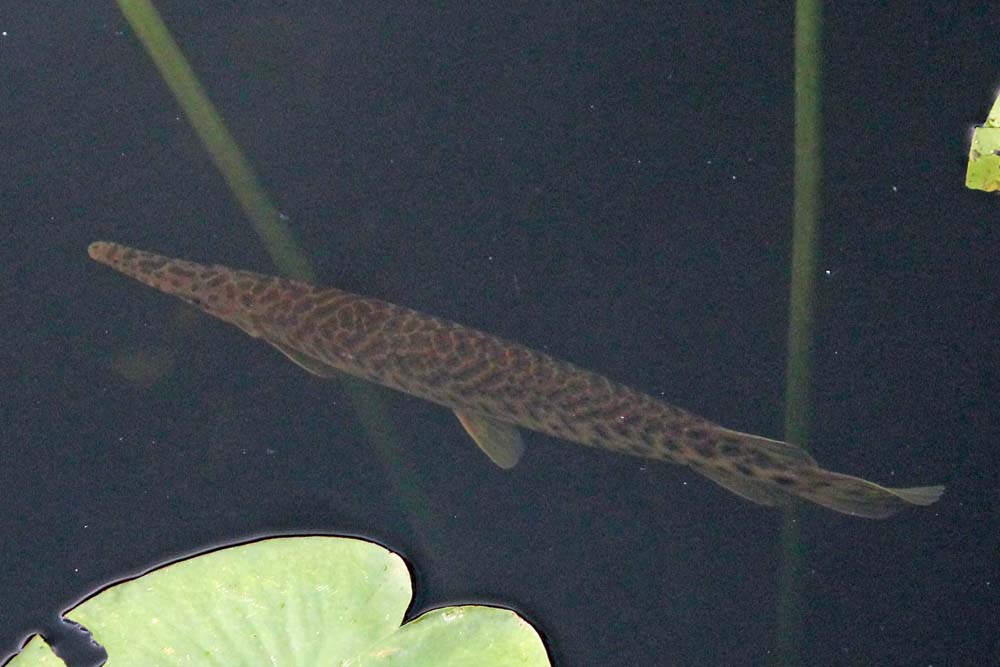
Florida Gar
Back at the parking lot, we found people wrapping up their cars to protect them from the Black Vultures.
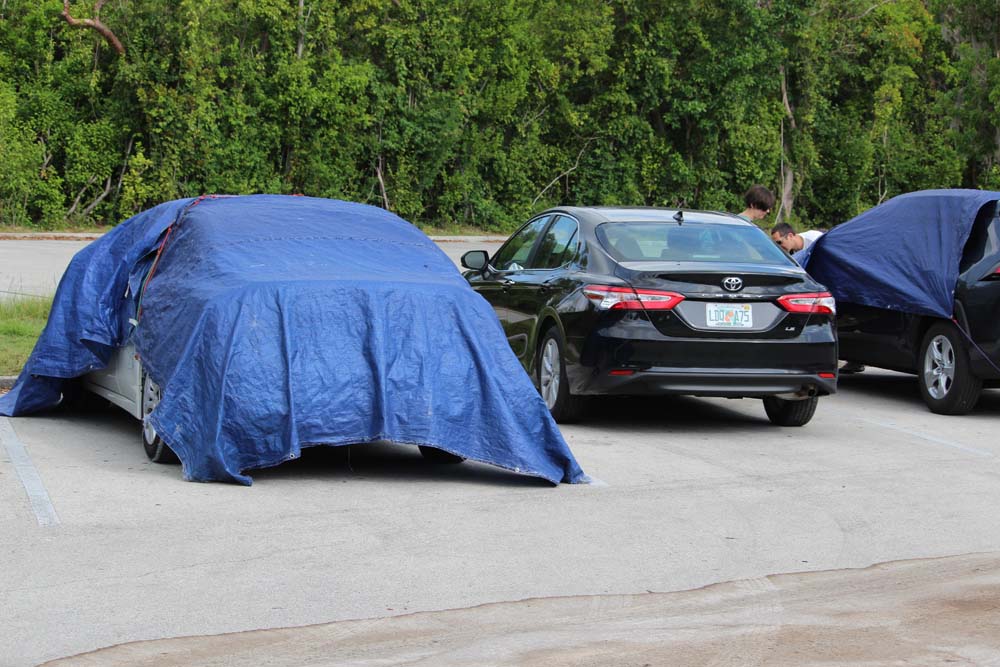
We decided to drive to the end of the road to Flamingo, then bird our way back. Our first stop was Echo Lake. Two pair of Osprey were around along with Palm Warbler, Prairie Warbler and White-eyed Vireo. The lake was empty but then a Swallow-tailed Kite was seen flying in the distance followed by a Tricolored heron, which flew right over us.
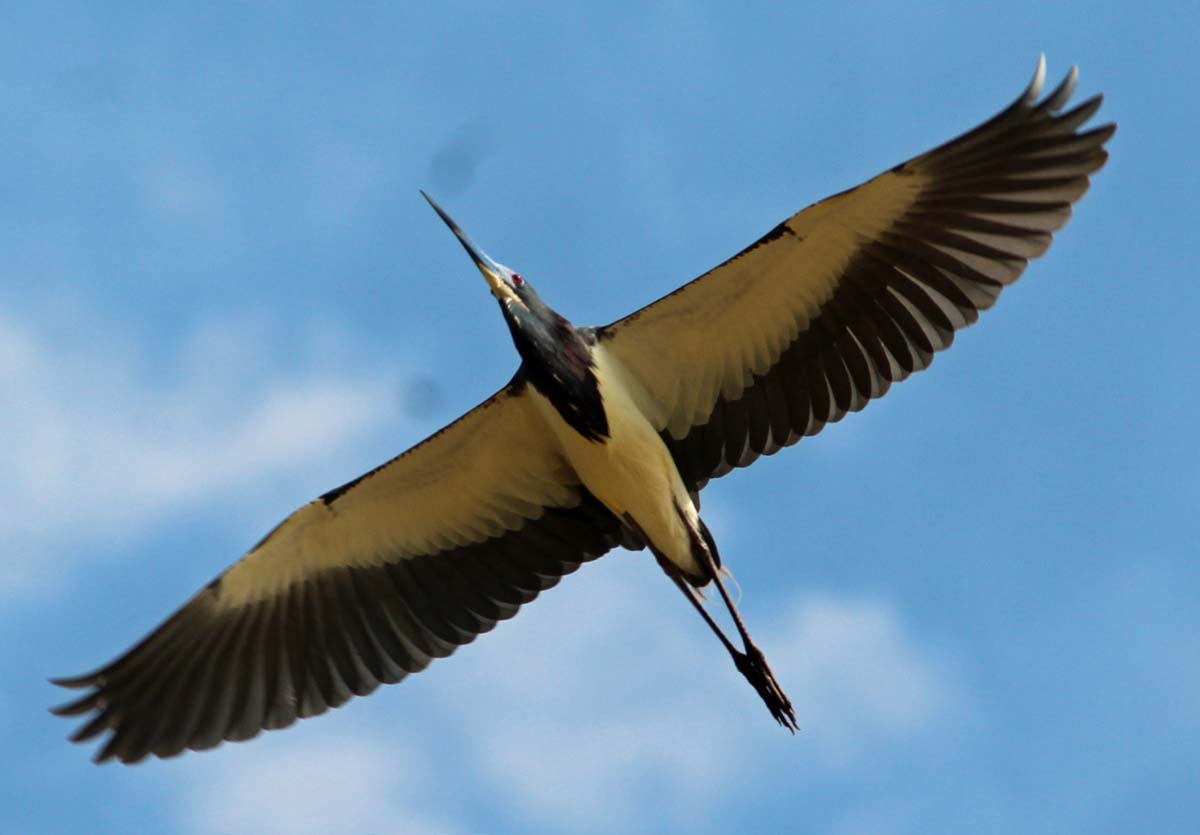
Tricolored Heron
The visitor’s center was still under construction but they had a trailer set up along with a little store. We brought a small stuffed Hammerhead Shark as a souvenir. The rangers told us we might see American Crocodile and manatee nears the boat docks.
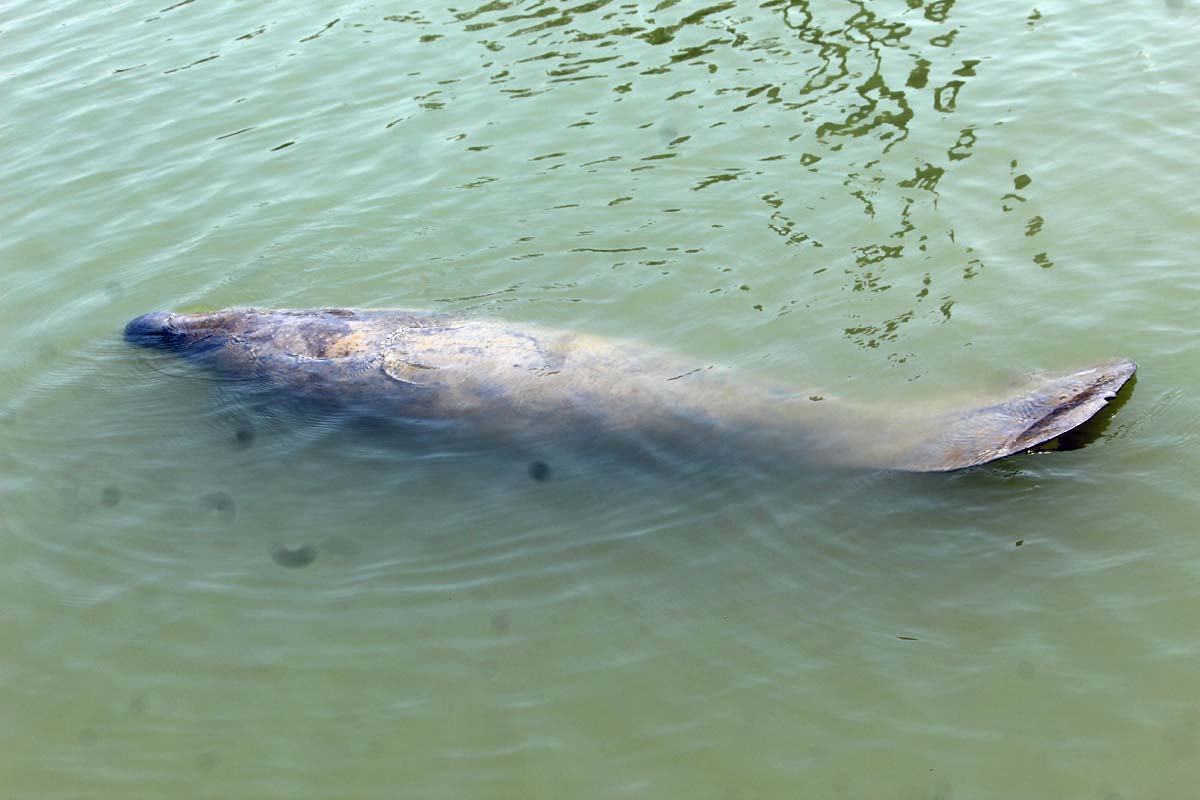
Manatee
We did not see any crocs but we found a few manatees.
We had a quick lunch of hot dogs and ice-cream next to the water
Mark found a Black Racer in the grass.
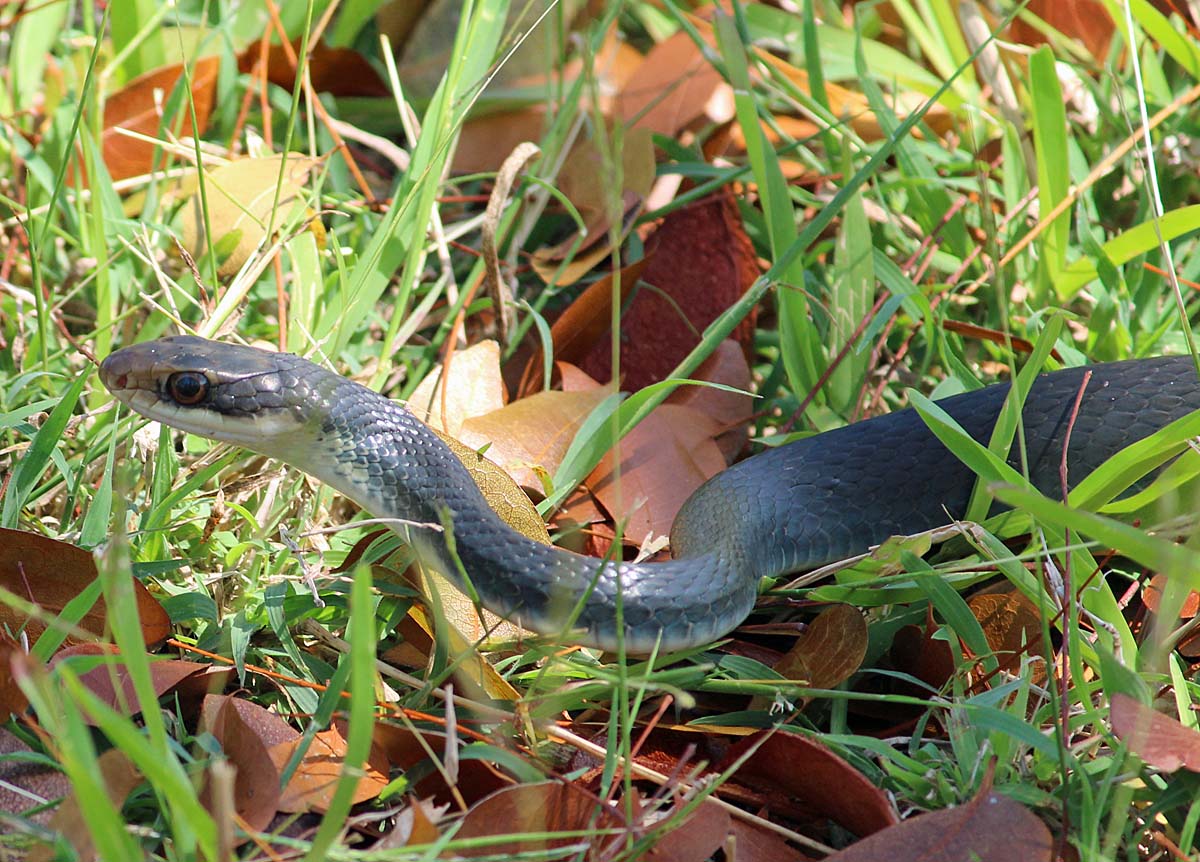
Black Racer
Our next stop was Paurotis Pond. On the way, another Swallow-tailed Kite flew over the road. At the pond, we found a colony of White Ibis. A Wood Stork was across the pond. I briefly saw the pink of a Roseate Spoonbill before it disappeared. We waited it out and it again reappeared for Kelli and Mark. On the grass, we found a new butterfly for the trip, a White Peacock.
We drove back to Florida City for lunch then we decided to meet later at the airport.
Kelli and I looked for White-winged Parakeet and Red-whiskered Bulbul in the Miami area but came up empty. We finished the trip back at Dr. Von D. Mizell-Eula Johnson State Park. We looked again for the Key West Quail-Dove but to no avail. We met other birders who had been looking for over an hour.
We ate dinner at Fort Lauderdale Airport and met up with Mark. Our flight left on time and was a bit bumpy. We landed in a cold rain and were back home before midnight.
It was a fantastic trip. 123 species of birds with lots of other wildlife sightings.
THANKS FOR READING
Michael and Kelli
Read more of our trip reports at